Q-n-A Webinar 13: Nov 5
Q-n-A with Craig Morrow, thirteenth webinar, November 5th 2025
Hello, everyone.
Can you hear Mark, you're always the first, so let me know.
Can you hear me?
All right.
Scott, awesome.
Good internet.
Good.
Yes.
Well, hey, David.
How are we doing today?
Welcome to webinar.
I'm not sure what the number is.
But I am here.
As usual, I'm Greg Morrow.
I will be your host for this evening's Q&A.
As you can tell, a little different scenario right here.
I got as much lighting as I possibly could.
This was as good as I could do.
I think it was two webinars ago I told you my office flooded.
And that's now in demo.
So I had to kind of scramble to find a place to shoot this where I could still swing and not have anything in the background, so to speak.
But that doesn't mean that I'm going to stay here.
I'm going to go back to mirror room because the mirror is your best friend when it comes to working on your golf swing.
I can't tell you how many people I yelled at about that today.
Just saying.
If you're not using a mirror, what are you doing?
Mirror or camera if you want to, but you need to watch yourself.
And I'm starting off on a rant because I had to put this together and I was answering a couple questions.
And if you're not looking at yourself, what are you doing?
Like literally, what are you doing?
I just got done yelling at somebody and as soon as they got, or as soon as this player gets in the mirror and they see what they're doing, They're going to have completely different feels.
Can't tell you how important it is.
Hey, Charles.
Hey, Dennis.
So as usual, per room rules, I'm going to sit up here for a couple minutes, let everybody fill in because I can see the ticker on my screen right here.
If I had a real fireplace and, you know.
The drink table or something.
I would have done a Phil Fireside chat, but this was thrown together at the last minute.
I'm still trying to figure out how I move that couch myself.
I'm really going to be paying the price for that tomorrow.
Hey Manny Ray, Michael.
Hey, hadn't seen Michael in a bit, Jeffrey, what is the best timing or method for hinging on the backswing?
It depends on if you're using the hinging part correctly.
Are you meaning when the trail wrist goes into extension?
Is that what you're meaning?
And the only reason I say that is because I had a student, this was like a month ago, he kept saying hinge, and I kept telling him the answer, and he's like, no, no, my hinging.
And I'm like, this is the hinge.
And what he was actually meaning was his radial and ulnar deviation, the cocking goes to the wrist.
So let me know, Jeffrey, and I'll answer that for you while we let everybody pile in there.
Wrists hinging at the initiation of the swing.
Well, at the initiation of the swing, you really don't want a whole bunch.
I mean, as I start to go back from right here, as I start to stretch and load into my trail side, my trail wrist is fairly neutral, doing nothing.
My lead wrist is staying in extension.
My trail wrist is in almost flexion over here.
And until I get to about right here, around lead arm parallel to the ground, I'm not going to really start to see some hinge.
Now, some players that lack some mobility and all that, you'll start to see their trail arm start to fold a little bit earlier or hinge start a little bit sooner just because of mobility.
But my wrist, I can show you right now.
As I'm going, I don't have my screen, so I've got this little tiny thing to look at.
So hopefully you can see me.
So as I'm going from here towards the top, you can see my trail wrist is doing relatively nothing.
And then I get to about lead arm parallel to the ground.
Now is where you're going to see that kind of flipping the coin over the shoulder look.
It really doesn't happen until right there at the top.
Because what you don't want is to get this early, because then you're going to load that trail wrist too soon.
You can see it's really shutting down my club face, which is going to typically lead to lifting and closing.
And then on the way down, you're going to do this or you're going to hang on for dear life and hopefully not hook it.
80-year-olds.
80 years young.
Manny, I was looking at my swing on camera today.
I noticed I was releasing the wrist and flipping as my hands passed my trail leg rather than my leg leg.
No forward shaft lane.
Make sure you're pivoting through, Manny.
I'll ask the class, what is the number one reason for the flip?
I've answered this three times today in swing reviews.
What is the number one reason for the flip?
I'll give you a hint.
What's the number one reason people flip it and don't release it?
He gave you the hint.
No answers?
Come on.
Y'all got to know this.
Some of you in this group, I know I yell at you on a daily basis.
Manny, not opening body, shoulders, not rotating hips, body stops.
Okay.
So we got some great answers right there.
It's when the rotation stops.
All right.
So the number one reason why people flip is because they quit rotating.
Think about it.
If I start to go down.
And my body stalls.
All that energy is going to go somewhere, it's typically going to be me throwing my hands.
Now if I'm right here and think about if I'm supinating and I'm pivoting, how would that club be like this?
But if I right here and I stop, that energy is going to go somewhere.
So we got some smart, got some smart ones in the class today.
So what do All right, I'm going to give everybody one more minute and then we are going to get started.
Let me find my questions.
Got my questions right here.
Should have picked a different belt.
This one isn't working.
So I'm going to kind of have that Jim Furyk thing today, you know, where he's always like this so he doesn't mark up his pants.
Get a little fuel.
Still looking for that sponsorship.
I mean, at the rate that we're going, I mean, webinars are going to be hosted by Goaty here in the next month or two.
The smartest Goaty's getting with voice and all that.
Well, ticker's slowing down, so let's get going.
Huh?
Did that pop up?
What are your thoughts on Goaty?
My replacement?
I'll leave that at the end.
All right.
November, Wednesday night webinar.
Let's do it.
First question.
From GDP position on the downswing, the pit of the elbow pointing perpendicular to the target line of the club.
And so right here, everybody doesn't know GDP, right elbow pit face away, palm face away, in front of trail hip and the downswing club parallel to the ground.
What action delivers the club head to the ball?
What action delivers this to the ball?
Well, it was the argument that I had with the student today.
The trail side swing, for some reason, and it's probably our fault, they think it's a push.
All right.
So a lot of players actually think it's a pushing motion of your arm.
But remember, even a trail side swing, this is just a conduit.
Of transferring that energy.
I'm not trying to create the force by pushing my arm, so once I get down into this position right here, same thing as lead.
What's really triggering the release of this club right here, it's this spiral.
Coil up.
As you start to post, you're starting to pull the leverage from the ground.
The post up is what's triggering the snap of this club.
Okay, now this actually ties into the flip question earlier.
I see a lot of players flip because when they get to GDP, they start pushing instead of posting.
Now, especially if you've watched a lot of Chuck's current swings, you can kind of see how his core is really rotating through.
Players kind of took that a little bit out of bounds, and we all lived on different spectrums.
We work on our golf swings.
But the trigger is think about it this way.
I'm up.
I'm down.
And now as my core starts to go through, I'm posting up, pulling that leverage from the ground to get this to snap.
So don't try to push with your arm.
Push with your shoulder right here.
Get this puppy.
posted.
And that's why even if you look at long drivers, long drivers, you'll see they almost have this look where they bounce up and back.
They're getting into here and they're almost going this way because they're trying to get all that leverage, get the hip moving backwards to get that kind of spiral coil working up towards their core to snap that even harder.
So the trigger from GDP is getting that post.
Okay.
And I just saw that question, Ronald.
I think it's a week away for lefties.
Lefties won't be left out.
Don't worry.
The southpaws will rise again.
All right, so hopefully that answers your question.
You've got to post.
Kind of long-winded answer, but I wanted to cover all the bases.
Okay.
The posting up on the lead side leg.
that swings the head down or the release on the supinated trail form or should the lead side leg be posted at GDP so it all can release?
I'm thinking that might have been tied into the prior question, but it wasn't in that question.
So the posting up of the lead leg is what's going to trigger the release.
Now, when you think of the supination, you're going to get to a point where you can't do it anymore.
Okay.
It's the same thing like I showed in the last webinar and a couple other webinars.
I'm sitting here supinating like this.
I'm going to get to a point where this club is going to have to rotate back over.
Okay.
And that's going to kind of be the snap of the club.
And so what I'm trying to do is feel this supination.
All right.
It's a little bit on the extreme side, but some of y'all need to feel this.
And so I'm trying to feel that supination with the post.
So I'm supinating and I'm driving my core.
And you can see how as I'm doing that, I'm feeling this, that I'm driving my core.
You can see how much snap kind of whip that creates.
All right.
I think the throwing analogy, you know how Chuck talks about how, especially like when he's driving, he feels like he's throwing it this way as he's kind of squishing the bug right here.
That doesn't mean that we want you to cast.
That doesn't mean that I want you to try to put all the power in your hands.
There is some snap and you can add a little bit more force from there.
But what you're trying to do is feel this, okay, as I'm doing this.
And it's actually technically like this.
But I'm trying to feel this and posting and that's what's triggering.
The snap of the club.
That's going to be where we get all that release and all that fun stuff.
Is it a fact that better players normally have a flatter swing plane than high handicappers?
Why?
In what way do they swing differently or better?
I wouldn't say it's necessarily a fact about the flat swing.
There was a thing a long, long time ago saying that shorter golfers are better than taller golfers because they had a flatter swing plane.
They could swing more around their body.
It led to a lot of repeatability because there's not a whole bunch of elevation in the swing, but I wouldn't necessarily say it's a fact.
I mean, if you take a Fred Couples versus who's a shorter, an Ian Woosnam, 92 Masters, you've got a flatter round swing versus up and vertical, a little bit more J -releases.
There's pros and cons to both.
The flat swing, if you think about it, kind of like a wedge.
If I'm going to rotate here and I'm going to make a flat swing and rotate around my body, that can create a lot of consistency.
Think about like with a little wedge.
You don't have a whole lot of face rotation or anything, and you're just kind of letting your body dictate it, this little flat plane back and forth.
That creates a heck of a lot of consistency.
It just doesn't create that much juice.
it's the trade-off.
Higher, a little bit more elevation as you're loading in here.
You can make this a little bit more dynamic right here.
But when you start to get flattened a little bit around, well, A, you got to wait for the club to get back out in front.
B, You typically can't add a ton of face rotation or a ton of release because you have to wait for it to get back out in front.
Or you're going to be really fighting a two-way miss.
I wouldn't say it's necessarily a fact.
It's just easier because flatter swing planes tended to make the swing more rotational, more body release, but it takes away juice.
I've done every version of the golf swing.
Some of you all know me in this room, but I've rebuilt my swing five times.
I've literally done every version of the golf swing.
Even if you take RS1 before RST, That was a flatter, more around your body swing.
We had a little bit more depth.
We were a little bit flatter, a little bit more around the body, more kind of single plane-ish, but it's limiting.
Correct.
What is a good way to learn and train my lower half to lead the swing instead of my upper half and not heaving my upper half at the ball and beyond?
Yeah, that's tough.
There's a million different ways to do that, but it depends on which one clicks.
As us teachers, a lot of the times we're teaching kind of the same drill or the same problem, but it may be the ninth way that I've said it that clicks with the student.
So that can get a little dicey because what I say sometimes doesn't click.
So I try to use and rotate my core through the swing, and I end up finishing with my weight front and center, even on my front lead side.
Okay, so this is for y'all at home.
If I try to use and rotate my core, I end up finishing with my weight in the front center or even on the front of my lead side.
Now let's think about this logistically.
What is the only, if I'm sitting here rotating my core right now, how could I be on my front toe?
I mean, this is just my core rotating back and forth.
How could I be on my front toe?
I couldn't unless I wanted to fall over.
The only way you're ending up there is as you're trying to rotate your core, you're pushing from this side.
So you're more than likely activating the trail shoulder.
We're activating a little bit of early extension right here.
So you're pushing your trail hip towards the ball or you're pushing your trail shoulder.
That's what's going on by where you're finishing.
I need the best drill to engage the right move.
Well, I mean, the lift the foot drill, the weight shift drill where you're allowing your feet to lift so you can feel planting is really good.
The kettlebell swings, the medicine ball swings.
reading this note or this specific case, it sounds like you're using your core, but it also sounds like you're pushing.
And so when we think about not wanting to end up this way, players get caught up thinking that the right hip still has to be back.
And so they end up going this way.
And so this is what I mean.
If we think about the old clamshell drill, or you think about the goat nine to three, where Chuck has you take the pylon and put it behind your left hip.
To me, that's still one of the best because it does two things for us.
All right.
And I'm going to see if I can find.
I'm going to grab this chair.
Give me two seconds.
Off camera.
Okay.
So players often mistake.
Come on.
Players often mistake.
how the hips work.
And so as I go back and I start to coil, my hip's going to get deeper.
My shoulder plane's going to rotate around, which is going to feel steeper for most players.
And I'm really going to start to open up this side and really get this kind of fascial stretch that Chuck talks about.
Now, once I start to trigger getting my pressure back and moving this way, players get so caught up in not really extending, that they typically start pushing and they just slide because they think that this hip can't come away.
Well, this left hip slash lead hip has to go that way.
So if I go here, here, where's my trail hip right now?
It's still not against this.
So the thing that I do more often than not for a player that's struggling with that is A, Get a foam roller, a chair, anything that gives you feedback.
Now my suggestion is put it that hand width apart right here.
Don't rest your butt on it.
That's the number one error I see when people are trying to fix their tush line.
They rest their butt on it and it's just gliding against it.
And so as soon as they get away from it and they're not gliding against it, they're still doing that.
Force yourself to.
Get it back.
Force yourself to get it back.
You've been hearing a lot with goatee and sternum drop and spine angles and all these things.
Force yourself to get it back.
Get it back.
For me, what I would do if I were you, I'd take your trail arm in hand.
I'd get one of these.
I'd go up here towards the top.
I'd start to shift my pressure back towards the lead side.
I'd feel my trail shoulder go straight down.
Towards my trail hip, and I drive my left hip right behind me, how, how?
I mean, even if you look at my foot right now, like, I can wiggle my left toe right now, or the front of my feet.
That's my best, at least for reading your case point of what I would do to get that fixed.
Because as soon as you start getting that left hip to work, It's going to be very odd to get this.
And then combine it with shoulder spin.
Why?
If I go up here and I start pushing from my trail side and I'm getting my increase in spine angle, and I'm getting my tush line.
And I try to spin at the same time, what's going to happen?
I'm going to fall over.
So the better you get that working, the more you're going to turn off your push.
All right.
I saw something on YouTube that made sense to me.
That's a bold statement.
But one it confirmed.
It has with the setup position of the right elbow.
In my case, I would say that the right elbow is pointing away from the left side of my body.
It's a more or less pronated position.
In this video, he wanted us to, especially if we come over the top, to have the right elbow pit pointing more towards the body, supinated.
It looked like starting from GDP, and that sounded like good advice.
I have not heard this specific advice before.
Maybe it helps go like downswing, starting set up, start of the backswing.
What do you say?
It's exactly the way that we set up.
Players tend to jump to lag videos or jump straight into chipping or jump straight into J release.
This position at setup, what he's referring to right here, with the elbow pit pointed away and the V, getting the pressure point in the right hand correctly, I can't tell you how important it is.
This is always.
You can see it's facing away from me, facing away from me, facing away from me, start to supinate, still facing away from me right here.
I never let this go here.
Now there is a little bit of a use case that as I start to let my trail shoulder rise a little bit in the backswing.
That a little bit of letting this elbow kind of fly out, a little bit's okay.
Which somebody might see that as being a little bit internal rotation instead of external rotation.
Because you don't want to lock it down and in like this, where it's kind of inverted because then you can't get the scap drop.
But that's why this point is so important.
Watch my elbow pit right here as I start to go here, see how.
It's always facing away from me now, it's facing up now as I start to come down.
Still facing away, still facing away, still facing away, still facing away.
It never goes this way.
That is the kiss of death in golf.
As soon as you start going this way, as soon as you do that, that's the kiss of death.
It raises the scapula, takes it away from the spine.
Now not only do you not have a conduit to transfer power from your spine through your arm, but you're also just going to use your arm.
Nothing you do with your body at that point is going to add any speed to the swing.
So it is vital to get that.
Now, having said that, I have seen a couple people on the forum and a couple people in the swing reviews where they've been taking this trail arm in this goat arm position, and they've been going like this.
And they've been taking their grip like this, where I'm so externally rotated right here that I'm locked out.
You can see how it's kind of like raising my shoulder right there.
And I can feel it right here.
Where it's kind of that old Hogan.
Like the rubber band's right here, but you're going like this.
Where you're squeezing the lifeblood to get your elbows so close together.
Now the scapula can't move correctly.
Not only is it uncomfortable, but the scapula can't move correctly.
Elbow pit facing away.
Not so externally rotated that you're jammed.
but not internally rotated where your elbow pit's pointing down the target line, okay?
So hopefully that should answer that.
I'm fighting a little bit of something, so I'm just trying to keep my throat hydrated a little bit.
I've been talking a lot lately.
Okay.
From the top.
Spinning the right arm down without losing the right wrist.
Aiming to match the arm speed with the body so we can maintain pressure on the shaft together, with face pressure and right wrist pressure controlling the ball flight.
Explain what's going on here in a more understandable way.
Even I'm confused right now.
Spinning the right arm down.
So I'm going to assume that means you're supinating, all right?
Spinning, and the reason I say this is the typical term for spinning the shaft on the way down is actually steepening So this would technically be spinning the shaft on the way down.
And that's what you want to do if you're a lead side player and you're under plane.
You want to try to spin the shaft on the way down to help zero out your plane a little bit.
So I'm going to take this as he's supinating without losing the right wrist.
Well, this is one thing that's very important.
The supination does what to the right wrist when it comes to losing the right wrist?
Well, you can see if I'm supinating, my extension's increasing, but it's also helping me take care of my radial deviation.
I think that's when we think about the lag and the angles that we need to have, the supinating.
As I'm moving laterally, even though if I'm trying to throw it from the top, the supinating is what's helping me maintain my radial deviation.
So what's going on here in a more understandable way?
Well, I'm supinating right here.
I'm starting to pivot.
My hand speed is still going to be initially higher at the start right here than down at the bottom.
Everything's not really working at the same rate in the golf swing.
I'm not trying to get my arm speed and my body speed the exact same.
I don't want my club head speed tied to the fact of how fast I can rotate.
I don't want that.
I want my club to be able to snap.
That's working.
essentially independently of me.
So I'm not really trying to tie that all together.
What I'm trying to do is I'm trying to feel the supination.
So it puts the pressure on that middle finger right there.
I can feel that little spot right there.
Okay.
And as I'm supinating, I can feel the pressure on that as I'm trying to pivot and drive my hips so that I can sling this into the ball.
Now that may seem like it's timing based or way out of control, But if you watch as I'm doing that, my club face really isn't doing a whole bunch.
Through this phase, the back is actually staying pretty darn square, it doesn't really snap until after.
So I'm guessing that's the only thing I got for that question.
Um, because you're not, you're not trying to make this like one.
And everything doesn't rotate or move at the same rate, Craig, can you please explain away what appears to be a major contradiction?
Uh -oh, I should have read these questions beforehand.
As I see in the whole GOAT code instruction template, I have heard it said many times by you and Chuck that the arms are not supposed to do anything.
The arms are not supposed to do anything.
But the whole system is predicated on first learning to use your right arm to swing the club.
Then there's the whole idea of supinating the club with the arms, hands, and wrist, something that's also dependent on the arms, at least to some extent.
So how then is it the arms don't do anything?
I just don't understand this contention.
Can you please address this for me?
Okay, so if you go from the putting, as you start to engage your core, and you're learning the putting stroke, all right, Right there, you're going to feel a little swing from your right arm as your core is directing it.
And then as we move into chipping right here, what you're trying to do, and I think that maybe this is a better way of thinking, you're not trying to use the arm for force.
Maybe that's a better context to put it in.
The arm isn't creating any speed.
The arm isn't creating any power.
What you're trying to do is get a link.
You have to have a link to something.
You don't want to just swing your arms and hands.
This is not what we want to do.
You need it to be linked to something so that you don't have to use it.
Like right now, this to me isn't using my right arm.
All right.
Because I'm not trying to apply any force.
I'm not trying to do anything with it.
So the whole system is predicated on first learning to use your right arm to swing the club.
And then there's the whole idea of supinating the club.
With the arms, hands and wrists, that's also dependent on the arms to some extent.
Yes, if you move in sequence correctly, a lot of this stuff does happen as a byproduct.
But using your arms, okay, wrist supinating, feeling the pressure right here.
What we're saying is that this is the conduit I might have to feel some supination to shallow out the club, all right?
But what I'm trying to do is I'm trying to minimize as much arm movement as possible.
And what I'm looking for is that when I'm pivoting my body and I'm coming down into here, I'm not trying to do something with I understand why you're saying this is because you're like, hey, you say don't do anything with my arms.
This is my interpretation of not doing anything with your arms.
I'm going to take my setup, and I'm not going to do anything with my arms.
That's literally a no-arm swing.
I'm literally not doing anything.
Now, that's still almost a pretty decent golf swing.
The wrist has to support the weight of the clubs.
The arms as I'm going up, as I'm making a scapula, has to support this plane working up.
So don't think about it as I'm trying to create the golf swing with my arms.
I'm trying to get my core and my engine to direct the motions.
Yes, I might have to feel a little supination.
Yes, I might have to feel a little bit of release of the club on the way through when I'm getting that snap.
You're just not trying to create force with the arms.
You're not trying to create power with the arms.
You're not trying to create positions with the arms.
This is allowing you, especially even the supination right here, is to follow the physics.
Now, does this really look like I'm using my arm?
Like right now, I'm literally just letting the weight of the club go this way.
All right, now I can push the button and make this a little bit more forceful with my hand.
What we're trying to do is to get you to focus on the big thing.
And the big thing is this.
The big thing is the engine.
Players don't use their body correctly, which forces them to overwork their arms in the swing.
Everybody overworks their arms.
And so what we're trying to do is say, hey, put all your focus on getting this stuff moving, and your arms and hands do very little.
So do they do absolutely nothing?
No.
But do they do this on a scale to this?
When you do it correctly?
Yes.
But the problem I see all day long is this.
Or I see.
Or I see this.
And that's because at some point in time, somebody starts trying to manufacture with their arms.
And what we're trying to do is get you to focus on what's actually moving so that the arms can do as little as humanly possible.
That's why even when Chuck says his feeling is this combined with this, that really isn't anything but suit.
I mean, I know that seems really, but I'm not really.
I'm kind of exaggerating silly right now, but I'm not trying to do something with them.
Okay.
So yes, the arms and hands have a role, but they're here on the scale of this for everything else.
And that's kind of the problem because everybody's focusing on where this club head is.
What am I doing with this?
What am I doing with this?
What I'm doing this, this, this, this, and their body isn't doing a darn thing.
versus a couple of you players know, I've got a few kids in my unlimited group.
I have one kid that the club is too heavy for him.
It's too heavy for him.
But he's about yay high, and he hits it 240, 230, 225.
He's not even double digits.
The club's too heavy for him.
He moves his head too much off the ball.
The club gets a little shot at the top.
But as soon as he gets there, he's not firing his arms.
He's not doing anything with him.
He gets here, and he does the 160 sequence video to a T, where he gets here, he pivots into here, he drives his trail side into this with his core, and snaps the hell out of the club.
He's not using his arms.
He's using his body, his core, his engine to generate all that speed.
That's what we're really saying, is stop trying to generate things with your arms.
Of course they have to do something, all right?
Hopefully that answers it.
And I know that people take things black and white.
I get it.
I'm not going to fault you on taking it black and white.
The arms aren't dead, but you're trying to get to the last possible, smallest inkling of them doing anything.
And the only way you can do that is by focusing on moving these.
Uh-oh.
I have a question about squishing the bug and using the trail leg to pivot.
I showed this technique to a local instructor recently, and he cautioned me about it because he said that it would lead to early extension.
Can you please address how does one squish the bug and not early extent?
Where direction are you squishing the bug?
If I'm going up here and I start driving my trail hip towards the ball, that's creating early extension.
If I'm driving my trail leg and trail knee squishing the bug this way, where's my hip go?
It's because of the direction that you're pushing.
This kind of push yields early extension, all right?
And that's why you won't see Chuck's foot or Tiger's foot.
They're not like this.
What direction are they?
I'm going this way.
I'm going this way.
So when I squish the bug, I'm driving this way.
Now, if you watch my trail hip right here as I do that, and I squish the bug, where's my left hip going?
Now, if I early extend, that's not squishing the bug.
That's an improper push.
When do you hold off the wrist arm rotation after impact, kind of hit it and hold?
I know like a 40, 50-yard shot when you need more accuracy, but what about shots from roughs in various distances?
I mean, you kind of answer your own question right there.
Typically, you're going to have more body release when you're trying to control spin for more accuracy, which is typically going to be in short shots.
Now, shots from roughs in various distances, that's going to kind of vary.
If you've got really thick rough, You may have to hack it out to get some pop on it.
But also, if you think about really thick rough from the U.
S.
Open, you might need to hold it a little bit to keep that toe or to keep that hosel from twisting on you down there.
So that's going to kind of be a use case scenario.
What situation are you in?
What about a 100-yard shot with a pitching wedge or a 9-iron?
Knock down shots into the wind.
Absolutely.
So when you're trying.
Let's just say to flight it.
What's the number one enemy when it comes to playing in the wind?
What's the number one enemy?
The number one enemy is spin.
The more spin you have, the more you're saying, all right, golf gods, be kind on me today.
Please be gentle.
So when you're trying to delete spin, yeah, using more.
Of holding this off, like you'll see in like the short game videos and all.
That will help you kind of control your spin better, because it'll help you control your trajectory better by knocking it down.
So that's kind of where I would put that.
If you need to control your spin, a knock down wedge, a knock down nine iron, knock down seven iron, you don't want to be getting down here and screaming a big snap release.
A big snap release and a squish the bug and all that is for juice.
Well, when I need to hit it about this high off the ground, and I got to fly at about 130 yards because I'm hitting into a 22-mile-an-hour wind, I don't want to be sitting here snapping my wrist and trying to fly over the wind.
Tried it.
Can't fly over the wind.
Doesn't work.
I want to get here, and I want to keep that nice, flat lead wrist.
And rotate and pivot my body through so I can knock it down and keep the spin off of it.
So the knockdown, I mean, it's essentially when you're trying to knock down the spin on it.
Gruff is going to be dependent, because if it's wispy and wiry as hell, you're going to probably need to put a little.
But sometimes you got to get in there and you've really got to throw the crap out of that club to pop it out of there, Craig, thanks for the recent webinars.
No problem.
My pleasure.
Hope you get something out of it.
Some questions for this week.
Last Wednesday, you spoke about your takeaway, getting your right hip back and shifting weight.
Very helpful because I don't think I ever loaded into the hip.
Can you go on from there to describe the rest of the takeaway towards the top with what's going on with the body?
As I start to stretch and load right here, so as I start to get deep right here in my shoulders and I get my little weight and I start to coil with my sternum turning this way, as I start to get just kind of beyond this parallel to the ground, what happens is I create this big line of tension right here.
And so as I start to get here, I get this big line of tension and you can see how my hips right now are already starting to shift towards the target because I can't pivot anymore.
I've already kind of maxed out.
And so what's happening is my sacrum back here and my pressure is already starting to get back into the lead side.
And this is what allows me to start to pivot quickly in my transition because I'm not waiting so long to get back to the lead side.
One of my biggest pet peeves is I'll watch players working on weight shift and they get here, get here, get here, get here.
And then they shift weight at the top.
Well, as soon as you shift weight at the top of your backswing, you're never going to get back in the downswing.
This has to be into it early.
As I start to load and stretch, I'm going to max out.
Then my pressure can easily shift back into the side to where now I can lead with my core driving down.
In addition, could you come closer to the camera and show all the wrist positions, supination, extension?
I know they would all make perfect sense, but when you don't know them, it takes a while to learn.
All right.
So the easiest way to think about it, all right, see if I can, I don't have my screen in here.
So extension, all right, is going to be cupping of the wrist.
All right.
So anytime you see cupping, hinging like this, this is extension.
Anytime you see bowing, this is going to be flexion.
Okay.
Flexion, flexion, extension, extension.
Supination.
For the trail-handed, trail-handed, right -handed golfer is going to be the clockwise motion.
So you'll see this is externally rotating, and it's kind of like the palms opening up towards the sky.
If I was the left-handed, it would be the same thing.
See how?
But that's counterclockwise.
So it's that external rotation palm going up towards the sky.
Owner deviation, radial deviation.
Okay.
Owner.
In addition, would you show how the clubface relates to each phase of the places in the takeaway?
Show how the clubface relates to each of the places.
The clubface does hardly anything in the takeaway.
So as I'm making my takeaway right here, and think about it, this is kind of an easy way to think about it.
What are my wrists doing in the takeaway?
Hardly anything.
So as I'm making my takeaway right here, And I'm starting to load and rotate.
The club face is literally doing nothing, all right, so by the time I'm right here, my hands are inside, essentially my club head's outside.
But since my wrist positions haven't changed, if I were to start to do this early, do this early.
Anything I do with my wrist.
Early on right here is going to change the relationship of my club face, which I don't want to do early on, I want that.
It's super quiet in here.
That's why sometimes players will say, like, feel it facing the golf ball so it keeps them from over-activating their wrist or anything like that.
But the big thing is the wrists do nothing right here, matching the spine angle as I start to load and rotate.
So you really shouldn't see a whole lot of change in anything in that club face.
When you get it to the top, I have trouble relating to what is closed or open.
It makes sense once you're in GDP, but it's hard for me to relate.
Okay, so that, I mean, this one's fairly simple.
My club, oh, I got a wall there.
So my club face right now is what?
My club face is closed, all right?
Because I'm in extension of my trail wrist, it's facing the sky.
This would be square, that would be open.
So if you have the one or two degrees of extension in your wrist, because you're going to lose a little bit as you get towards the top, the easiest way to think about it is this club face.
If it's kind of in this 45 degree angle of the face, that's square.
That's closed.
That's open.
So it's all about balancing this wrist right here.
Closed, square, open.
So hopefully that helps.
When doing depth, drop, extend, and pivot.
I'm not sure about the extend part.
How straight can it be?
Well, how straight?
Oh, okay.
So when I'm doing the drop and extend and pivot, I'm dropping and I'm extending.
So you can see my trail arm is straight, but it's not, I haven't pushed it out to where I'm, you know, kind of hyperextended right here.
Remember, as I move into the strike, I'm going to have to have some extension in this wrist and there's still going to be just a little bit in that right elbow.
So as I'm dropping and extending, it's just straight.
Just think about it like being naturally straight right here in the GDP.
Like that's the amount of angle that you want.
You don't want to get here, drop.
And extend where?
Now I've let go of everything and I don't have any angle, so you don't.
It's not pushed out, hyper extended, it's just naturally straight to where you have your angle right here, just don't go into hyper extension.
You can see that's not that much change.
Because as I do that and I drop, extend and pivot, I move into this position.
My spine angle is going to be increasing right here, so I'm going to have some bend right there.
So it's not perfectly like locked out straight.
Otherwise, is it recommended that the right arm is bent even at impact?
There's going to be a little bit.
If your right wrist has already lost all its extension and your right arm's straight before impact, you've already given up on all the potential speed you can have because you've already fired it.
There's not any way to transfer that.
Could it be completely straight as we pivot?
Or is it better to have a little bend?
Yeah, you have to have a little bit of bend.
So as you go from here, so as I'm going from GDP right here, dropping and extending, you can see my trail arm's pretty straight.
Now that would be dead straight.
That's a little bit of bend.
I need to have a little bit in there to be able to transfer that force.
If I've already gone like that into my pivot, I won't be able to transfer any force.
That doesn't happen until right after it.
Right after impact is where it's going to get that.
Craig, I see that rotary swing follows athletic motion golf on Instagram.
We talked to Mike and Sean.
All of us in the golf business, depending on where you are, but they delve into some stuff.
Is everything they say true about the golf swing or how much stock can we put in what they say?
Well, I don't know everything that they say.
They do have some good stuff.
They do really good with backing it by data.
You look at gears and you look at a lot of things they do.
So do they have some quality information?
Yes.
Would I say stick with rotary?
Yes.
If you have any questions on something they're doing there, if you want to see if you want to apply it to your swing, put it in the community and I'll tell you.
It sounded like they basically say that you should not supinate in the downswing, which I know contradicts what Rotary says.
More specifically, they say not to move the right elbow in at all in the downswing, which is part of the supination.
They say it should move straight down.
Kind of just talked about this drop.
Say it should move straight down and not be in front of the right hip but on the side.
Seems again contradictory to rotary swing.
Now this is an optical illusion.
So what I'm thinking that you're saying is what they talk about on the video is don't try to ever get your right arm in front of your right hip.
That's what I'm thinking that you're saying.
And we're not saying get your right arm across center line right here either.
When we're saying supination and get into this position right here, I'm not saying shove this across your chest to get it in front over here.
My arms and hands are in front of me right here, and I'm dropping, extending, and pivoting.
You can see they're still in front of me.
So as I'm dropping, extending, and pivoting, I'm right here in GDP.
Now, the supination portion, most players go like this.
If I move laterally and I start to throw from the top, I can show you Tiger.
I can show you every single player on the planet.
This shaft has to go down like this.
Nobody goes like this.
And so the feel of that is supination, the throwing pattern, whatever you want to call it.
So I don't know the exact video or what they're talking about in terms of that.
But do you want to get up here and loop your club under?
You don't want to do that.
But if this whole thing is a unit right here as I'm doing that, because what we're trying to do and what we're trying to say is never come down and try to go like this.
You should never be trying to square it.
But they're also saying the same thing, is that when you get up here, the arms and hands drop like this.
Well, am I supinated right now?
I look pretty darn supinated.
So it's all kind of tomato-tomato of how you're saying it, how you're interpreting information, how you're feeling it.
They also say when you shift your pressure over in the downswing that you don't do it by pushing with your right foot to get it over, which again is what I understand you're supposed to do based on rotary swing videos.
No, it's exactly what I showed you.
As I'm sitting here loading and stretching and coiling, I'm going to get to a point of max where this pressure is automatically shifting.
I'm not trying to get here and push my pressure over with my foot this way.
I think a lot of people thought that from squish the bug.
All right.
I'm driving with my core and trail side.
So as I'm making this backswing motion right here, this motion back into the lead side isn't because I'm trying to get here and now push my pressure over.
My pressure is going to already be there because think about the old four pressure shifts video that we have on the side.
I'm exaggerating.
Here, I go into extension.
Where's my pressure right now?
I can tell you right now, it ain't on my right leg.
I'm using my trail side and core to speed up my hips.
I'm not using any push to try to shift my pressure over there.
Okay.
And this is kind of, you know, just where things get kind of mixed up on the lines.
I'm not trying to push my pressure over to this side.
I'm trying to get my coil.
To where?
Now?
See how I'm not having to think about this.
So it's not me trying to get here and then launch and push off this side to shift my pressure.
So they have the same force plate data we have, we all see the same thing.
Is it okay to add a little late hit through impact?
If so, what is the proper movement?
Does it feel like a slap through the ball, trail wrist flexion, or add a little pro flip to rotate?
You can.
I'm not saying do it on everyone and single your shots.
But, I mean, if you're working down here, you can add a little bit of manual.
If you're doing all this other stuff.
You can snap it a little bit more down there if you want.
I'm not saying do it, but you can.
It's just going to, you're bringing in, now you're bringing in a little bit of timing because now you're manually adding a little bit of pushing force down there.
So can you add a little bit of late hit down there?
Yeah.
I'm not going to say I've never done that.
I'm not saying I do it on every single shot.
I want, for me, I'm a lazy man golfer.
I'm gonna just hit it kind of, I mean, I already do, kind of.
Just hit it straight and boring.
that's what I want to do.
I just want to hit it straight and boring.
Let the club release itself.
I've got to add a little bit of something to it then.
Yeah, you can add a little bit, but you got to be better.
Know what you're doing when you do that, but that's the same thing as what you know.
Like, when Chuck talks about, okay, so he's hitting the button and he's throwing it away from when he's driving and as he works down.
Letting this thing snap, coming through the snap, should be more of a byproduct than a.
And you having to force that.
But it's the same thing like throwing a ball.
I can get here and I can release it.
Or I can get here and I can add just that tiniest little bit at the end right there.
Now I've lost my position.
But I never learned to read.
So we're doing pretty good.
I was wondering if you could talk about pace and tempo as it relates to increasing for distance.
For instance, Chuck says in the 160-yard shots with an 8-iron, Chuck increases distance by swinging faster, but he maintains a sequence.
I'm assuming here that the tempo is faster.
Is there a thought process to make sure things don't break down, or is it a matter of having clean technique than practice, practice, practice?
It's both.
All right.
Chuck put out a video on Instagram today where he's hitting a five iron, and it literally looks like he's in molasses.
Like, it literally looks like.
But the club's screaming, and that's just because the swing's just much more efficient, all right?
Because the way he's stretching and how everything's snapping, it doesn't look like he's doing a whole lot, but the club is screaming, and he looks kind of boring.
It looks like he's swinging and serve.
But to that point.
I still think this is kind of like the snapping analogy.
Okay, let me get this.
Now that I can do this, and I'm doing it without thought and it's not breaking down, it's happening every single time.
So I can get here and I can move through, I can stretch my fascia, get short stretch, all the mechanical stuff.
Let's take that out.
All right, I got my swing efficient.
So let's go 160.
I'm right here.
I got my hip driving my core.
So I'm right here driving my core and I'm getting good snap.
Or I can get, like I can move through.
I can make this pace faster.
I can stretch these and get them to react faster.
So it is, A, about getting it correctly done first, your sequence, your movement.
And then it's about speeding them up, making them a little bit more dynamic.
And then once you get really good at actually feeling how you're stretching and rebound, They didn't kind of go even a little bit more to the chuck territory now, to where?
Now you can feel how these things kind of snap on their own.
So they really look like they're not doing anything as the club that's screaming.
So, yeah, it's practice, clean technique, then do It's kind of like for me.
I hit the crap out of the golf ball, but I couldn't hit a fairway.
Okay.
Let's learn how to hit fairway.
Then we'll put some speed back in it.
I want to ask about tension.
Where in your body do you feel tension?
Mostly in my brain.
Where shouldn't you feel tension?
Well, I think one of the big things, like, you know, we can go all the way back to, like, the homoculus model and talk about, like, where your sensitivities and all that are.
But the big thing that you're looking for right here.
I'm going to have the feel and the pressure in my hands.
I'm giving my brain a little feedback of what's going on.
I need that right here.
And what I'm trying to do is I'm trying to kind of be ready right here.
My core is engaged, but I'm not trying to start my golf swing.
I'm trying to make sure that my core is ready to work.
And so what I'm going to feel as I start to go back, I'm going to feel my core stretching.
I'm going to feel my quads, my glutes, everything stretching in here.
I typically.
If we think about the old RST model, this is kind of where my tension is.
I really don't have a whole lot of tension in my shoulders.
I don't want it there.
I typically don't have a whole lot of tension other than in this box area right here.
My core and quads and glutes right here.
That's typically where I have my tension.
I really don't want it anywhere else.
I've got my hands in there.
I don't really want it in my neck.
I really don't want it in my shoulders because I really want this.
directing it.
I want my core and my body directing it.
So I'm getting here and I'm getting ready to stretch and load that.
If you start feeling tension, like a ton of tension in your shoulders and in your neck and your arms, that's bad.
If you're feeling a lot of tension in those areas, we need to have a chitchat.
I know I'm running out of time, but I only have two more questions.
So let's fire them out.
When you grip the club and apply pressure, To your middle trail hand finger.
Does that put pressure on the lead hand thumb?
because that's what I feel?
does that put pressure on the lead hand thumb?
Not, not for me.
I've got my trail hand right here, I've gotten my goat grip right here.
my my lead thumb's pretty loose.
I mean, I feel this kind of, you know, covering right here, if you're if you're getting that, what I just by experimenting with this right here.
I'm not saying this is the answer.
I'm trying to feel what you're feeling.
Just by doing what I did right there, if I get the goat grip and I start to push this down on it, that puts me too much pressure.
But when I take my goat grip, my trail arm and hand's like this, my elbow pit's pointed away, and I'm kind of curling under right there and getting that pressure.
So I really don't feel it's in that kind of cradle.
I really don't feel a ton of pressure on my thumb as I'm doing that.
So that might be that when you're turning it like this.
When you get it on, you might be pushing down on it like this.
That's putting a ton more pressure on your thumb than it needs to be.
Please provide a brief review of the similarities and differences between goat, putting, chipping, pitching, and full swing, such as arms do nothing, core driven, wrist hinge prep.
That's a loaded question.
A brief review of the similarities between goat, putting, chipping, pitching, and full swing.
Well, first thing is the core is involved in all of them.
So I'm putting, my core is engaged so I can get this to swing correctly.
Same thing with chipping, same thing with pitching, same thing with nine to three full swing is that I'm trying to get this.
To be the director of the show.
The arms still kind of do nothing in that.
It is supporting the weight of the club.
And I get to a full swing.
I may have to feel a little bit of supination.
But on all of them, on all of them, whether it be putting, chipping, pitching, I'm never trying to make this happen with my arm.
If I'm chipping, I'm keeping the face stable, I'm keeping some pressure in my hand.
As it gets a little bigger and I want to get a little bit more snap, I'm still feeling the same thing.
And because I'm driving, now I'm allowing this snap to happen.
So I'm letting it snap.
I'm not forcing it.
Wrist hinge, pressure shift.
There's more wrist hinge than a pitch because of what you're trying to create.
But the pitch is kind of the anomaly of the bunch.
There's not really that much wrist hinge in the golf swing.
Okay, there's not that much going on.
But the pitching is the only one where you start to add a little bit more.
Because you've got to get the club working vertically.
And you want that to match your spine angle a little bit more going back.
So minus pitching, the hinge really, there's not really a whole bunch going on right there.
Pressure shift.
You're not doing anything on your trail leg, everything's got to be going this way.
I mean, because that's, you know, when you're chipping right here.
You don't want a big weight shift this, you don't want a ton of extra lateral motion this way.
When you're pitching, you want a little bit more of the hip going this way, but you don't.
You're not really getting deep into your trail side.
So, Maybe a better way of thinking about that is as your stance gets wider and you start to hit it further and you want to make bigger swings, you're going to start getting deeper into your trail side because the more you start using dynamic pressure shifting is going to be for power.
And in short game, you don't need power.
So they're all into the same.
Differences between goat putting.
I think that kind of covers it.
I think that kind of covers it.
I mean, think about simplicity.
I'll leave you with this, and I'll come to the screen for a second.
Think about simplicity.
What we're trying to do from the putting to the chipping to the pitching to the 9 -3 to the 9-3 with a little release to the full swing.
We're trying to get this being the driver to your car and the trail.
Arm and hand.
Doing as little as possible, and with as little as needs to be.
With the face changing squareness and jumping in and out of positions and planes.
So you're literally just learning how to get this being a unit with your body, then making it a little bit more dynamic, a little bit bigger, a little bit more dynamic.
As you can see, it's not really changing.
And now I'm already at a full swing.
I haven't really done anything.
I've just made it a little bit more dynamic, dynamic, and then I start to support a little bit of the weight of the club.
So hopefully that answers a little bit of what's going on there.
So I know we're over time.
My apologies.
No, I'm not in focus right now.
My apologies, but I want to thank you for spending Wednesday night webinar with me.
As we head into the fall, if you want, I'm going to put on the screen right now.
As we head into the fall, I do this every year.
I'm going to do another half off my unlimited.
If you want to join, get in there.
Half off this month, I'll probably do this one and the next one.
I try to do it in the fall because that's when people really start working on their golf swing.
I'd love to have you in my group if you want to come join.
If you like to yell that, I'm the perfect person.
So I'm going to put that on the screen right now.
Thank you.
For everybody that joined, I'm going to come answer a couple of questions as I typically do for people that are new to this webinar.
Typically at the end, last five, 10 minutes, I try to answer a couple of questions as much as I can before I have to go.
So I'm going to go do that right now.
And I appreciate it.
I hope you learned something.
I hope you get something out of this.
I hope the lighting was okay.
My screen's a little dark right here, so I can't tell.
So hopefully the lighting was okay.
And thanks for stopping by.
We will do this again.
Please.
If you have questions, go to the community and put them in.
If I don't get any questions, like this time I had a, that's why we ran over time, because I had a whole boatload of questions.
Throw them in there.
Ask me before you ask Godie, all right?
Because, you know, Godie's going to be telling you all sorts of things.
All right.
You're welcome, Mary, Tim.
Standing, writing is fine.
Gracias.
Thank you, Peter.
I appreciate it.
I appreciate everybody giving me a chance.
I really do.
I mean, this is.
Golf is golf is tough.
So I know you all want the answers and all of that, Kevin.
And I can't say that.
You know that, Kevin.
David, you're welcome.
All right.
So does anybody have any questions?
I'm going to go back, Steve.
You're welcome.
It really means the world to me.
Mark, I'll come back.
I know there's a couple ones up here.
All right.
Hey, Mark, I'm going to come back to you.
I'm going to try to get these four real fast.
Tom Lord, in the Goat Code Speed webinar, Chuck says, to initiate the downswing, you squish the bug.
In the 4-8 goat power sequence, he says, initiate with a lateral shift to the target, which is correct, both.
The speed webinar, when you're going for stinking, nasty speed, you've got to get those hips going.
So that movement's going to be pretty fast.
So as I'm doing that in the squish the bug, that movement that he's talking about, that's, but I still got to move laterally right here.
I'm not doing that off my back foot.
I've already moved my pressure right here where I'm driving hard from this side.
So think about squish the bug is for juice.
Both are the same in essence.
Squish the bug should give the lateral.
You're already going to be shifting over there.
So yes, Miles.
Can you show the sternum drop in the downswing so we can explode up into impact?
Goaty has me confused.
Goaty has me confused all the time.
Sternum drop.
Essentially, as I'm going from here and I.
I'm lowering.
I'm not diving my head towards the golf ball.
Think about it.
As I load into my lead side, what's happening to my spine angle?
It's dropping.
So look at my.
Watch.
This isn't my sternum, but it's close enough.
Watch my microphone right here.
Where's it going?
It's dropping.
Sternum drop right here.
My spine is increasing.
All right.
I forgot to put that link on the screen, so let me throw it up there right there.
All right.
Lee, they literally said that the elbow is always to the right of the hip marker.
Yeah, and so that's why when we talk about that, Lee, with that right elbow getting up there, it's okay and go as the trail shoulder goes this way to have your right this way.
But when you start to pivot and move.
This is, think about GDP right here.
This is why this is kind of an optical illusion.
We're not saying be in GDP dead square and have your arm in front of this.
That's not the positioning.
The positioning is as I get here, look at how I pivoted.
So my arm, if I were to wind back right now and get back to square, where's my arm?
Exactly where they say it is, on the side.
But I'm not square at this position.
My arm is still in front of me, right?
This is the same RST that you know, and this is the same thing that they say, all right?
When they look at the gears and all that, everybody has different levels of this.
My arm is still on my side right here.
Look at where I'm pivoted here.
If I were square, that's what you're saying.
That's what you're saying.
But when I'm at GDP, I'm not perfectly square.
Chuck has also said in the video that we use pressure on the inside of the right foot to help get it.
You can.
Not that it pushes it over there on its own.
However, they said that you shouldn't use it at all.
That's when you're trying to get power.
Don't think of it.
You're not trying to use your foot.
As I think of old Axiom.
Axiom, I'm going around the foot, and as my pressure goes to my heel of my foot, where does my pressure go?
It goes to the inside of my foot, which now my pressure is now back on the lead side.
Now, I can speed up that pressure shift by squishing the bug or driving my trail foot.
Don't try to use this to shift your weight.
It's still coming from that force of movement from the trail side right there.
Steve, what is the best way to stop overswinging?
I literally have a great top position than go too far.
Lift lead foot, shaft gets parallel.
What's a good thought or feel to limit this?
You got to coil correctly.
Two things that I would do, Steve.
Go to the how to coil around trail leg to start feeling the stretch and getting deep and feeling loaded and coiled.
Get the body feel first.
Then you can go to the stop overswing video and you can combine that same thing with the straight trail orb.
You'll never over-sweak.
You physically won't be able to move.
Thank you, Charles.
I appreciate that if you're still in here.
Mark.
All right, Mark, I'm back at you.
How is it possible that my right hand doesn't apply any pressure to my left thumb?
I'm not saying that it doesn't.
but the way that the notes sounded sounded like you're applying like so much pressure that it was making the thumb want to do something.
When I'm in that cradle right there, there's pressure right there for sure.
The way I was reading the question is that it's putting excess pressure that it's making it do something you don't want it to do.
So when it's right here, there is pressure there, but it's not giving it directives or making it not want to do how the thumb works.
That's how I read that question, so if that's not what it was, my apologies.
Michael, every time I understand more, that's awesome, bud.
You did really good in that last review.
Let's keep that going.
Just watching your body movement, hand and wrist movements is very important.
Well, thank you, Tom.
I appreciate that.
The one thing that I always get in human lessons and everything, and I think I said this in the last webinar, is always my feet.
I don't know why, but I can't dance.
But it's always my feet.
They're like, Craig, your feet are always looking like you're just ready.
So you can make things kind of happen.
And I think players have a tendency to get boom, boom, where they're wearing these like lead boots and they're like, ugh, ugh.
And I'm always like, you know, float like a butterfly, sting like a bee.
It might be all the caffeine.
But I'm ready to go.
If I want to throw a punch, I'm ready.
I need these things to go.
I never want to get stagnant.
I never want to get quiet.
If we think of Beth Page, not the Ryder Cup, Sergio, when he was milking the cow with his grip, and he was just stuck and stuck and stuck, I'd be like, all right, let me just shake it out, get it moving, go.
Like, pull the trigger.
Like, always kind of be alive, be ready.
Let's see.
Any drill to stop lifting my head during the backswing?
Why are you lifting your head during the backswing?
There's a lot of different reasons, and that's tough.
There's a lot of different reasons why you could be lifting your head.
So you could be lifting your head because you're not coiling correctly.
So your trail leg straightening and you're not getting coiled into this glute.
So you're not getting stretched and deep.
Because if anything, if I start to get deeper, think about it this way.
If my trail hip gets deeper, where's my head going?
It's going down.
Another thing is, is when you get here, if you stop rotating and heave up your arms, your shoulders are going to raise your head and cause you to come up.
There's a lot of different other ones too.
So this is what I would say.
The first thing that I would focus on, I'd go, just as I told the other gentlemen, go to the how to coil around the trail leg and start feeling getting really deep into your right hip or your trail hip if you're left.
Get deep into your trail hip, all right?
You'll start to feel this engaged.
If anything, you're going to maintain the spine and then start to get the arms to behave as you really get this good.
kind of deep stretch right there.
I'd focus on that first.
If it's not that, and you're like, Craig, I'm doing this, but then I'm lifting, then as you're going into extension, you're trying to do it with your arms versus the coil.
So you're trying to lift your arms, which is putting your spine into extension, lifting your head, putting too much tension in the shoulders, upper half.
Mark, I'll make a video for you.
You know I'll answer it.
I just got to make sure I know what I'm talking about.
I got to not know what I'm talking about, but know the question.
Stanley, thanks.
Another very educational session.
I appreciate that.
David, thank you.
You're always welcome.
All right, is that it?
Nobody's got anything else?
Nothing else?
Nothing?
Nothing for the.
The not goat?
I mean, December's webinar might be hosted by Goaty.
You never know.
I'm getting too old.
Anybody been playing any golf lately?
I know I haven't.
Shane.
Gerald, thanks at always.
Yeah, you too, my friend.
I hope all is well.
Can you talk about ripping the towel feel with your lower body in the backswing and then in the downswing?
I'm confused as which direction I'm ripping this towel is recommended to me in my review.
Anthony, are you in here?
I don't know if Anthony's in here.
I'd have to direct that to Anthony because the ripping the towel feel with the lower half.
I could take that a couple different ways.
I didn't do that review.
Ripping the towel.
I'm confused which direction I'm ripping the towel.
Well, let me see if I can answer that, even though I'm not exactly sure where Anthony's going with that.
As I'm coiling in the backswing, it's internal femur rotation right here.
what players tend to do wrong is they get externally rotated.
So they start to rotate this way, which really isn't loading the hip and it's causing the hip to rotate this way.
And so I'm not really kind of creating any torque right here.
And what I want to feel is almost as if it's this internal femur.
So it's almost like it's rotating inwards this way.
Okay.
I don't want to rotate outwards.
So I'm not going this way.
It's more this is going internally.
So it feels like my trail leg is going this way as my hips going that way.
All right.
So it's kind of confusing.
We actually are going to have a really good video talking about loading and coiling it right there.
But hopefully that anything I'm preventing psoas strain.
Let me get back to you on that, Steve.
Let me think about that one.
To me, the video of how the goats use the hands is the best understanding how to coil and stretch the fat.
Yeah.
I mean, that's kind of my light on the feet thing.
I'm not going to disagree with you on that.
Because if you were to get to here and you're just like, okay, I can create whip like that.
How would I get more?
Well, let me.
Stretch a little bit.
Let me get a little bit more wine with it.
Okay, now I feel how I can rebound a little bit with this and snap.
So, yeah, I agree.
The release is what changed my life.
Lee, I'll finish off with this one.
If done to where the towel under the arms drill has the towel very high in the armpit, is that a good drill?
Or not one we should ever be doing?
I mean, I'm going to tell you my opinion.
I hate the towel drill.
The towel drill to me goes back to the question earlier.
All right.
Now, is there a place in time for it?
Yes.
There's nothing wrong with the towel drill if you understand what you're trying to achieve with it.
But the towel, it goes to what Tom was just saying right there about understanding the hands and the stretching of the fascia.
What I see more often than not is that players get this tucked here and then they leave their arms like the T-Rex and never let them go anywhere.
But nobody, you need elevation in the swing.
If you want to have power, all right, you need a little bit of elevation can help, especially as we get older.
Having it a little bit tucked up under here, that's not going to hurt you.
But what I see more often than not is that people glue their bicep because they sense that.
So a tiny bit, right, that's not the worst thing in the world, but I don't, I just, every time I've seen a player to do it.
Because remember, I kind of have to go off my own experiences.
Every time I've seen a player do it, they've broken it.
Like they've done something and I'm like, I don't really like that.
So can you technically?
Yes, you can.
Do I recommend it?
Not really, unless it's a case scenario where somebody's moving perfectly.
And they've just got this arm and they can't stop it and everything's perfect.
It's just so ingrained that they need something as a friendly reminder to try to keep their arm a little bit more in front of them.
But even look at me right there, so I don't know if anybody likes my backswing, but this is my backswing.
All right, all right.
I couldn't, I couldn't keep anything right there, I couldn't do it.
Like, if that would, I don't want to be there.
I wouldn't be able to keep that there.
So that's my long-winded answer on that.
Very niche.
Very niche.
Like me, very niche.
Okay, everybody, I appreciate you stopping by.
I've got to sign off.
Make sure the dogs are okay.
If anybody's done a swing review with me, you know that they're really doing the work behind the scenes, not me.
So I'm going to head off and we will do this again.
Please, please, please put your questions in the community.
I don't care what it is.
It's a repeat question for like the seventh time.
I'll still do it.
You can give me something new.
All right.
So thanks again.
Hope you all enjoyed and I will see y'all in the trenches.
Wouldn't the towel drill be best used for pitches?
Yeah, you could use it for pitches.
I still wouldn't.
Bonjour à tous.
Tu m'entends, Mark ? Tu es toujours le premier, alors préviens-moi.
Pouvez-vous m'entendre?
D'accord.
Scott, génial.
Bonne connexion internet.
Bien.
Oui.
Eh bien, salut David.
Comment allons-nous aujourd'hui ?
Bienvenue au webinaire.
Je ne suis pas sûr du numéro.
Mais je suis là.
Comme d'habitude, je suis Greg Morrow.
Je serai votre hôte pour la séance de questions-réponses de ce soir.
Comme vous pouvez le constater, la situation est un peu différente ici.
J'ai obtenu autant d'éclairage que possible.
C'est le mieux que je pouvais faire.
Je crois que ça remonte à deux webinaires, quand je vous ai dit que mon bureau avait été inondé.
Et ça, c'est en démo.
J'ai donc dû me débrouiller pour trouver un endroit où tourner ces images, un endroit où je pouvais encore me balancer et où il n'y avait rien en arrière-plan, pour ainsi dire.
Mais cela ne veut pas dire que je vais rester ici.
Je vais retourner dans la salle des miroirs car le miroir est votre meilleur ami lorsqu'il s'agit de travailler votre swing de golf.
Je ne saurais vous dire à combien de personnes j'ai crié dessus à ce sujet aujourd'hui.
Je dis ça comme ça.
Si vous n'utilisez pas de miroir, que faites-vous ?
Miroir ou caméra si vous voulez, mais vous devez vous surveiller.
Et je commence par un coup de gueule parce que j'ai dû préparer ça et que je répondais à quelques questions.
Et si vous ne vous regardez pas vous-même, que faites-vous ?
Mais concrètement, qu'est-ce que tu fais ?
Je viens de crier sur quelqu'un et dès qu'il se retournera, ou dès que ce joueur se regardera dans le miroir et verra ce qu'il fait, il aura des sentiments complètement différents.
Je ne saurais vous dire à quel point c'est important.
Salut Charles.
Salut Dennis.
Comme d'habitude, conformément au règlement de la salle, je vais m'asseoir ici quelques minutes, laisser tout le monde prendre la parole, car je peux voir le décompte des voix sur mon écran juste ici.
Si j'avais une vraie cheminée et, vous savez.
La table des boissons, ou quelque chose comme ça.
J'aurais bien aimé faire une discussion informelle avec Phil, mais tout ça a été improvisé à la dernière minute.
Je cherche encore comment déplacer ce canapé moi-même.
Je vais vraiment en payer le prix demain.
Salut Manny Ray, Michael.
Salut, ça fait un moment que je n'ai pas vu Michael. Jeffrey, quel est le meilleur timing ou la meilleure méthode pour pivoter sur le backswing ?
Cela dépend de si vous utilisez correctement la partie charnière.
Vous voulez dire lorsque le poignet du bras de suspension se met en extension ?
C'est bien ce que vous voulez dire ?
Et la seule raison pour laquelle je dis ça, c'est parce que j'avais un élève, il y a environ un mois, qui n'arrêtait pas de dire « hinge », et je n'arrêtais pas de lui donner la réponse, et il disait : « Non, non, ma charnière. »
Et je me dis : voilà la charnière.
Et ce qu'il voulait dire en réalité, c'était sa déviation radiale et ulnaire, l'armement se faisant au niveau du poignet.
Alors dis-moi, Jeffrey, et je te répondrai pendant qu'on laisse tout le monde se joindre à la fête.
Les poignets se plient au début du mouvement.
Eh bien, au début du swing, il ne faut vraiment pas en avoir beaucoup.
Je veux dire, lorsque je commence à reculer à partir d'ici, lorsque je commence à m'étirer et à me positionner du côté opposé au sentier, mon poignet de sentier est relativement neutre, il ne fait rien.
Mon poignet gauche reste en extension.
Mon poignet de trail est presque en flexion ici.
Et tant que je n'arriverai pas à peu près ici, avec le bras principal parallèle au sol, je ne commencerai pas vraiment à voir une charnière.
Maintenant, chez certains joueurs qui manquent de mobilité, vous remarquerez que leur bras de suspension arrière commence à se replier un peu plus tôt ou que leur charnière s'ouvre un peu plus tôt, simplement à cause de leur mobilité.
Mais mon poignet, je peux vous le montrer tout de suite.
Comme je suis là, je n'ai pas mon écran, alors je me contente de ce petit truc minuscule à regarder.
J'espère donc que vous pourrez me voir.
Donc, en montant d'ici vers le sommet, vous pouvez voir que mon poignet ne fait pratiquement rien.
Et puis j'arrive à ce que mon bras soit à peu près parallèle au sol.
C'est maintenant que vous allez voir ce genre de regard où l'on jette la pièce par-dessus son épaule.
Cela ne se produit vraiment qu'au sommet de la hiérarchie.
Car ce qu'il ne faut pas faire, c'est arriver trop tôt, car vous allez alors solliciter excessivement votre poignet.
Vous pouvez constater que cela ferme vraiment la face du club, ce qui va généralement entraîner un soulèvement et une fermeture.
Et puis, à la descente, soit vous faites ça, soit vous vous accrochez de toutes vos forces en espérant ne pas vous accrocher.
Les personnes de 80 ans.
80 ans et toujours aussi jeune.
Manny, j'ai regardé mon swing sur la caméra aujourd'hui.
J'ai remarqué que je relâchais le poignet et que je faisais un mouvement de bascule lorsque mes mains passaient devant ma jambe arrière plutôt que devant ma jambe avant.
Pas de voie d'arbre avant.
Assure-toi de bien pivoter, Manny.
Je vais demander à la classe : quelle est la principale raison de ce changement ?
J'ai déjà répondu à cette question trois fois aujourd'hui dans les commentaires sur Swing.
Quelle est la principale raison de ce revirement ?
Je vais vous donner un indice.
Quelle est la principale raison pour laquelle les gens retournent la situation au lieu de la publier ?
Il t'a fait comprendre.
Pas de réponses ?
Allez.
Vous devez tous savoir ça.
Je sais que je crie après certains d'entre vous dans ce groupe tous les jours.
Manny, sans ouvrir le corps, les épaules, sans faire pivoter les hanches, le corps s'arrête.
D'accord.
Nous avons donc obtenu d'excellentes réponses.
C'est lorsque la rotation s'arrête.
D'accord.
La principale raison pour laquelle les gens changent d'avis, c'est qu'ils arrêtent de tourner.
Réfléchissez-y.
Si je commence à descendre.
Et mon corps se bloque.
Toute cette énergie va bien finir par se dépenser quelque part, et généralement, ce sera moi qui lève les bras au ciel.
Maintenant, si je suis dans cette position et que je réfléchis à une supination et à un pivotement, à quoi ressemblerait ce club ?
Mais si je m'arrête ici, cette énergie va forcément aller quelque part.
On a des élèves brillants, vraiment brillants, dans la classe aujourd'hui.
Alors, que faire ? Bon, je vais donner à chacun une minute de plus et ensuite nous allons commencer.
Laissez-moi retrouver mes questions.
J'ai trouvé toutes mes questions ici.
J'aurais dû choisir une autre ceinture.
Celui-ci ne fonctionne pas.
Du coup, aujourd'hui, je vais faire un peu comme Jim Furyk, vous savez, il fait toujours comme ça pour ne pas tacher son pantalon.
Faites le plein.
Je suis toujours à la recherche de ce sponsor.
Autrement dit, au rythme où nous en sommes, Goaty va organiser des webinaires ici même dans les deux prochains mois.
Le plus intelligent des Goaty devient de plus en plus intelligent avec sa voix et tout ça.
Bon, le cours de l'action ralentit, alors allons-y.
Hein?
Est-ce que c'est apparu ?
Que pensez-vous de Goaty ?
Mon remplaçant ?
Je laisserai ça pour la fin.
D'accord.
Webinaire du mercredi soir, en novembre.
Faisons-le.
Première question.
Depuis la position GDP lors de la descente, le creux du coude pointe perpendiculairement à la ligne cible du club.
Et donc ici, tout le monde ne connaît pas le PIB, le coude droit face à l'extérieur, la paume face à l'extérieur, devant la hanche arrière et le club de descente parallèle au sol.
Quel mouvement amène la tête du club vers la balle ?
Quelle action permet d'amener cela à la balle ?
Eh bien, c'est la dispute que j'ai eue avec l'élève aujourd'hui.
Pour une raison quelconque, et c'est probablement de notre faute, ils pensent que la balançoire au bord du sentier est une poussette.
D'accord.
De nombreux joueurs pensent donc qu'il s'agit d'un mouvement de poussée du bras.
Mais n'oubliez pas, même une balançoire en bord de sentier, ce n'est qu'un simple conduit.
Du transfert de cette énergie.
Je n'essaie pas de créer la force en poussant avec mon bras, donc une fois que je suis dans cette position, c'est la même chose qu'avec le plomb.
Ce qui déclenche réellement la libération de ce club, c'est cette spirale.
Enroulez-vous.
Au fur et à mesure que vous publiez, vous commencez à exercer une influence positive depuis le sol.
C'est le poste qu'ils occupent qui est à l'origine de l'engouement pour ce club.
Bon, maintenant cela rejoint en fait la question posée plus tôt.
Je vois beaucoup de joueurs changer d'avis parce que, lorsqu'ils atteignent le PIB, ils commencent à pousser au lieu de poster.
Maintenant, surtout si vous avez regardé beaucoup des swings récents de Chuck, vous pouvez en quelque sorte voir comment son tronc effectue réellement une rotation.
Les joueurs ont un peu outrepassé les limites, et nous vivions tous sur des spectres différents.
Nous travaillons notre swing de golf.
Mais l'élément déclencheur, c'est de voir les choses sous cet angle.
Je suis levé.
Je suis à terre.
Et maintenant, alors que mes muscles abdominaux commencent à se contracter, je prends appui, utilisant la force du sol pour que ça claque.
N'essayez donc pas de pousser avec votre bras.
Poussez avec votre épaule ici.
Adoptez ce chiot.
publié.
C'est pourquoi, même si vous regardez les longs drives, les longs drives, vous verrez qu'ils ont presque cette allure où ils rebondissent vers le haut et vers l'arrière.
Ils s'engagent ici et ils vont presque dans cette direction parce qu'ils essaient d'obtenir un maximum de levier, de faire reculer la hanche pour que cette sorte de spirale remonte vers leur centre et claque encore plus fort.
Le déclencheur lié au PIB est donc la réception de ce courrier.
D'accord.
Et je viens de voir cette question, Ronald.
Je crois que c'est dans une semaine pour les gauchers.
Les gauchers ne seront pas oubliés.
Ne t'inquiète pas.
Les gauchers se relèveront.
Très bien, j'espère que cela répond à votre question.
Tu dois publier.
Réponse un peu longue, mais je voulais être exhaustif.
D'accord.
Le fait de se tenir debout sur la jambe avant.
qui fait basculer la tête vers le bas ou le relâchement sur la forme de sentier en supination ou la jambe du côté avant doit-elle être postée au GDP pour que tout puisse se relâcher ?
Je pense que cela aurait pu être lié à la question précédente, mais ce n'était pas le cas.
Donc, c'est le fait de lever la jambe d'appui qui va déclencher le lâcher.
Maintenant, quand on pense à la supination, on arrive à un point où on ne peut plus la faire.
D'accord.
C'est la même chose que ce que j'ai montré lors du dernier webinaire et de quelques autres.
Je suis assis ici, en position supination.
Je vais arriver à un point où ce club va devoir effectuer une rotation.
D'accord.
Et ça va en quelque sorte donner le ton au club.
Ce que j'essaie de faire, c'est de ressentir cette supination.
D'accord.
C'est un peu extrême, mais certains d'entre vous ont besoin de ressentir ça.
J'essaie donc de ressentir cette supination avec le poteau.
Je suis donc en supination et je sollicite mes muscles abdominaux.
Et vous pouvez voir comment, pendant que je fais cela, je ressens ceci, que je sollicite mes muscles profonds.
Vous pouvez constater à quel point cela crée un effet de fouet sec.
D'accord.
Je pense que l'analogie avec le lancer, vous savez comment Chuck explique que, surtout lorsqu'il conduit, il a l'impression de lancer quelque chose dans cette direction tout en écrasant l'insecte juste ici.
Cela ne signifie pas que nous voulons que vous fassiez du casting.
Cela ne signifie pas que je veux que vous essayiez de concentrer tout le pouvoir entre vos mains.
Il y a un léger claquement, et vous pouvez ajouter un peu plus de force à partir de là.
Mais ce que vous essayez de faire, c'est de ressentir cela, d'accord, pendant que je fais cela.
Et techniquement, c'est exactement comme ça.
Mais j'essaie de ressentir ça et de publier, et c'est ça qui déclenche tout.
Le snap du club.
C'est là que nous aurons toutes ces sorties et toutes ces choses amusantes.
Est-il vrai que les meilleurs joueurs ont généralement un plan de swing plus plat que les joueurs à handicap élevé ?
Pourquoi?
En quoi leur swing est-il différent ou meilleur ?
Je ne dirais pas que c'est nécessairement un fait concernant le swing à plat.
Il y a très longtemps, on disait que les golfeurs plus petits étaient meilleurs que les golfeurs plus grands car leur plan de swing était plus plat.
Ils pouvaient pivoter davantage autour de leur corps.
Cela a permis une grande répétabilité car le mouvement de swing ne comporte pas beaucoup d'amplitude, mais je ne dirais pas nécessairement que c'est un fait.
Je veux dire, si vous prenez Fred Couples contre quelqu'un de plus petit, Ian Woosnam, Masters 92, vous avez un swing plus plat et arrondi contre un swing ascendant et vertical, avec un peu plus de relâchements en J.
Les deux options présentent des avantages et des inconvénients.
Le swing à plat, si on y réfléchit, ressemble un peu à un wedge.
Si je pivote ici, que je fais un swing à plat et que je pivote autour de mon corps, cela peut créer beaucoup de régularité.
Imaginez quelque chose avec un petit coin.
Il n'y a pas beaucoup de rotation du visage, et vous laissez en quelque sorte votre corps dicter le mouvement, ce petit plan plat d'avant en arrière.
Cela crée une sacrée cohérence.
Ça ne produit tout simplement pas beaucoup de jus.
C'est le compromis.
Plus haut, un peu plus d'altitude en montant ici.
Vous pouvez rendre cela un peu plus dynamique ici.
Mais quand on commence à se faire un peu aplatir, eh bien, A, il faut attendre que le club reprenne l'avantage.
B, En général, on ne peut pas ajouter beaucoup de rotation de face ou beaucoup de relâchement car il faut attendre qu'elle revienne en avant.
Ou alors, vous allez devoir lutter contre un échec à double tranchant.
Je ne dirais pas que c'est nécessairement un fait.
C'est tout simplement plus facile car des plans de swing plus plats ont tendance à rendre le swing plus rotatif, avec un meilleur relâchement du corps, mais cela enlève de la puissance.
J'ai pratiqué toutes les variantes du swing de golf.
Certains d'entre vous me connaissent ici, mais j'ai reconstruit mon swing cinq fois.
J'ai littéralement essayé toutes les variantes du swing de golf.
Même si vous prenez RS1 avant RST, le mouvement était plus plat, plus circulaire autour du corps.
Nous avions un peu plus de profondeur.
On était un peu plus à plat, un peu plus enveloppants, plus sur un seul plan, mais c'est limitant.
Correct.
Comment apprendre et entraîner le bas de mon corps à mener le swing au lieu du haut, et éviter de propulser le haut de mon corps vers la balle et au-delà ?
Oui, c'est difficile.
Il existe un million de façons différentes de faire cela, mais cela dépend de celle qui fonctionne le mieux.
En tant qu'enseignants, nous répétons souvent les mêmes exercices ou abordons les mêmes problèmes, mais c'est parfois la neuvième fois que je le dis qui finit par faire mouche auprès de l'élève.
Cela peut donc devenir un peu délicat, car ce que je dis ne passe pas toujours.
J'essaie donc d'utiliser et de faire pivoter mon tronc tout au long du swing, et je finis par terminer avec mon poids vers l'avant et au centre, même du côté où je prends l'initiative.
Bon, alors ceci s'adresse à vous tous qui êtes à la maison.
Si j'essaie d'utiliser et de faire pivoter mon tronc, je finis par me retrouver avec mon poids au centre avant, voire même à l'avant de mon côté dominant.
Voyons maintenant comment cela se passe sur le plan logistique.
Si je suis assis ici en train de faire pivoter mon tronc, comment pourrais-je être sur la pointe du pied avant ?
Je veux dire, c'est juste mon tronc qui tourne d'avant en arrière.
Comment pourrais-je être sur la pointe du pied ?
Je ne pouvais pas, à moins de vouloir tomber.
La seule façon d'arriver là, c'est que lorsque vous essayez de faire pivoter votre tronc, vous poussez de ce côté.
Vous activez donc très probablement le bas-côté du sentier.
Nous activons ici un peu d'extension anticipée.
Donc, soit vous poussez votre hanche arrière vers la balle, soit vous poussez votre épaule arrière.
Voilà ce qui se passe à l'endroit où vous terminez.
Il me faut le meilleur outil pour effectuer le bon mouvement.
Eh bien, je veux dire, l'exercice de lever le pied, l'exercice de transfert de poids où l'on laisse ses pieds se soulever pour mieux sentir l'appui, c'est vraiment excellent.
Les balancements de kettlebell, les balancements de médecine-ball.
À la lecture de cette note ou de ce cas précis, il semble que vous utilisiez vos ressources principales, mais aussi que vous les sollicitiez au maximum.
Et donc, lorsqu'on pense à ne pas vouloir en arriver là, les joueurs se mettent à penser que la hanche droite doit encore être remise en place.
Et c'est ainsi qu'ils finissent par aller dans cette direction.
Voilà ce que je veux dire.
Si l'on pense à l'ancien exercice en coquille, ou si l'on pense à l'exercice de neuf à trois avec la chèvre, où Chuck vous fait prendre le pylône et le placer derrière votre hanche gauche.
Pour moi, ça reste l'un des meilleurs car ça nous apporte deux choses.
D'accord.
Et je vais voir si je peux trouver.
Je vais prendre cette chaise.
Donnez-moi deux secondes.
Hors caméra.
D'accord.
Les joueurs font donc souvent des erreurs.
Allez.
Les joueurs font souvent des erreurs.
Comment fonctionnent les hanches.
Et donc, lorsque je recule et que je commence à enrouler le mouvement, ma hanche va s'enfoncer davantage.
Mon plan d'épaule va pivoter, ce qui donnera une impression d'angle plus prononcé pour la plupart des joueurs.
Et je vais vraiment commencer à ouvrir ce côté et à obtenir cet étirement fascial dont parle Chuck.
Maintenant, une fois que je commence à reprendre le contrôle et à bouger de cette façon, les joueurs sont tellement absorbés par le fait de ne pas vraiment s'étendre qu'ils commencent généralement à pousser et à glisser parce qu'ils pensent que leur hanche ne peut pas se détacher.
Eh bien, cette hanche gauche, ou hanche avant, doit aller dans cette direction.
Donc si je vais ici, ici, où se trouve ma hanche de trail en ce moment ?
Ce n'est toujours pas contre cela.
Donc, ce que je fais le plus souvent pour un joueur qui a du mal avec ça, c'est A : Prenez un rouleau de massage, une chaise, n'importe quoi qui vous donne un retour d'information.
Mon conseil est de le placer à la largeur d'une main d'écart, juste ici.
Ne vous asseyez pas dessus.
C'est l'erreur numéro un que je vois chez les gens qui essaient de corriger la ligne de leurs fesses.
Ils s'assoient dessus et ça glisse tout simplement contre.
Et donc, dès qu'ils s'en éloignent et qu'ils ne glissent plus à contre-courant, ils continuent à le faire.
Forcez-vous à le faire.
Récupérez-le.
Faites en sorte de le récupérer.
Vous avez beaucoup entendu parler de bouc, de chute du sternum, d'angles de la colonne vertébrale et de toutes ces choses-là.
Faites en sorte de le récupérer.
Récupérez-le.
Si j'étais vous, je prendrais votre bras par la main.
J'en prendrais un.
Je monterais par ici, vers le sommet.
Je commencerais à reporter ma pression vers le côté avant.
Je sentirais mon épaule droite s'abaisser brusquement.
Vers ma hanche arrière, et je pousse ma hanche gauche juste derrière moi, comment, comment ?
Je veux dire, même si vous regardez mon pied maintenant, je peux bouger mon orteil gauche, ou l'avant de mon pied.
C'est le mieux que je puisse faire, du moins compte tenu de votre analyse de ce que je ferais pour régler ce problème.
Parce que dès que vous commencerez à faire fonctionner votre hanche gauche, ça va être très bizarre de voir ça.
Et combinez-le ensuite avec une rotation des épaules.
Pourquoi?
Si je monte ici et que je commence à pousser du côté du sentier, j'augmente l'angle de ma colonne vertébrale et j'obtiens une meilleure posture de mes fesses.
Et j'essaie de tourner sur moi-même en même temps, que va-t-il se passer ?
Je vais tomber.
Plus vous maîtriserez ce système, plus vous pourrez désactiver votre fonction push.
D'accord.
J'ai vu quelque chose sur YouTube qui me semblait logique.
C'est une affirmation audacieuse.
Mais une chose était sûre.
Elle est associée à la position de réglage du coude droit.
Dans mon cas, je dirais que mon coude droit pointe vers l'extérieur, à l'opposé du côté gauche de mon corps.
C'est une position plus ou moins pronée.
Dans cette vidéo, il voulait que nous, surtout si nous passons par-dessus, ayons le creux du coude droit davantage orienté vers le corps, en supination.
Il semblait que partir du PIB soit une bonne idée, et cela paraissait être un bon conseil.
Je n'avais jamais entendu ce conseil auparavant.
Peut-être que cela aide à reproduire le mouvement de la descente, la position de départ, le début de la montée.
Que dites-vous?
C'est exactement comme nous l'avions prévu.
Les joueurs ont tendance à passer directement aux vidéos de lag, ou à la pratique du chipping, ou encore à la sortie du J.
Cette position initiale, celle à laquelle il fait référence ici, avec le coude pointé vers l'extérieur et le V, en plaçant correctement le point de pression dans la main droite, je ne saurais trop insister sur son importance.
C'est toujours le cas.
Vous pouvez voir qu'il me tourne le dos, qu'il me tourne le dos, qu'il me tourne le dos, qu'il commence à se pencher en supination, toujours tourné vers l'extérieur, juste ici.
Je ne laisserai jamais cela se produire ici.
Il y a maintenant un cas d'utilisation particulier où, lorsque je commence à laisser mon épaule arrière se lever légèrement lors de la montée,
Laisser un petit peu ce coude se déployer, un petit peu, c'est acceptable.
Ce que certains pourraient interpréter comme une légère rotation interne plutôt qu'externe.
Parce qu'il ne faut pas le bloquer comme ça, où il est en quelque sorte inversé, car alors on ne peut plus faire tomber l'omoplate.
Mais c'est précisément pour cela que ce point est si important.
Regardez bien le creux de mon coude juste ici, au moment où je commence à aller là, vous verrez comment.
Maintenant, elle me tourne toujours le dos, maintenant elle me tourne le dos alors que je commence à redescendre.
Toujours tourné vers l'extérieur, toujours tourné vers l'extérieur, toujours tourné vers l'extérieur, toujours tourné vers l'extérieur.
Ça ne se passe jamais comme ça.
C'est le baiser de la mort au golf.
Dès que vous commencez à aller dans cette direction, dès que vous faites cela, c'est le baiser de la mort.
Elle relève l'omoplate, l'éloignant de la colonne vertébrale.
Maintenant, non seulement vous n'avez pas de conduit pour transmettre l'énergie de votre colonne vertébrale à votre bras, mais vous allez aussi utiliser uniquement votre bras.
À ce stade, rien de ce que vous ferez avec votre corps ne permettra d'augmenter la vitesse de votre swing.
Il est donc vital de l'obtenir.
Ceci étant dit, j'ai vu quelques personnes sur le forum et quelques autres dans les revues de swing où elles adoptaient cette position de bras arrière, le bras en position de chèvre, et elles faisaient comme ça.
Et ils ont pris ma prise comme ça, alors que je suis tellement en rotation externe ici que je suis bloqué.
Vous voyez, c'est un peu comme si je levais l'épaule juste là.
Et je le sens ici même.
C'est un peu comme le vieux Hogan.
Comme si l'élastique était juste ici, mais que vous alliez comme ça.
Là où vous comprimez le sang pour rapprocher autant vos coudes.
L'omoplate ne peut plus bouger correctement.
Non seulement c'est inconfortable, mais l'omoplate ne peut pas bouger correctement.
Le creux du coude est orienté vers l'extérieur.
Pas tellement tourné vers l'extérieur que vous soyez bloqué.
mais pas en rotation interne, de sorte que le creux de votre coude pointe vers la ligne cible, d'accord ?
Voilà qui devrait répondre à votre question.
Je suis aux prises avec un petit problème, alors j'essaie juste de garder ma gorge un peu hydratée.
J'ai beaucoup parlé ces derniers temps.
D'accord.
Du haut.
Faire pivoter le bras droit vers le bas sans perdre le contrôle du poignet droit.
L'objectif est de faire correspondre la vitesse du bras à celle du corps afin de maintenir une pression simultanée sur le manche, la pression du visage et celle du poignet droit contrôlant la trajectoire de la balle.
Expliquez ce qui se passe ici de manière plus compréhensible.
Même moi, je suis perdu en ce moment.
Faire pivoter le bras droit vers le bas.
Je suppose donc que cela signifie que vous êtes en supination, d'accord ?
La rotation, et la raison pour laquelle je dis cela, c'est que le terme typique pour désigner la rotation de la tige lors de la descente est en fait un raidissement. Donc, techniquement, il s'agirait de faire tourner la tige lors de la descente.
Et c'est ce que vous devez faire si vous êtes un joueur de tête et que vous êtes sous le plan.
Vous devez essayer de faire tourner l'arbre pendant la descente pour aider à bien aligner votre avion.
Je vais donc interpréter cela comme une supination sans perte de mobilité du poignet droit.
Eh bien, c'est une chose très importante.
Que fait la supination au poignet droit lorsqu'il s'agit de perdre le poignet droit ?
Eh bien, vous pouvez voir que si je suis en supination, mon extension augmente, mais cela m'aide aussi à corriger ma déviation radiale.
Je pense que c'est à ce moment-là qu'on réfléchit au décalage et aux angles nécessaires, à la supination.
Lorsque je me déplace latéralement, même si j'essaie de lancer le ballon depuis le haut, c'est la supination qui m'aide à maintenir ma déviation radiale.
Alors, que se passe-t-il ici, pour le dire plus clairement ?
Eh bien, je suis en train de faire le supination ici même.
Je commence à changer de cap.
Ma vitesse de main sera encore initialement plus élevée au départ, juste ici, qu'en bas.
Dans le swing de golf, tous les éléments ne fonctionnent pas vraiment au même rythme.
Je ne cherche pas à ce que ma vitesse de bras et ma vitesse corporelle soient exactement identiques.
Je ne veux pas que la vitesse de ma tête de club soit liée à ma vitesse de rotation.
Je ne veux pas de ça.
Je veux que mon club puisse frapper fort.
Ça fonctionne.
essentiellement indépendamment de moi.
Je n'essaie donc pas vraiment de relier tout cela.
Ce que j'essaie de faire, c'est de ressentir la supination.
Cela exerce donc une pression précisément sur ce majeur.
Je peux sentir ce petit point juste là.
D'accord.
Et pendant que je suis en supination, je peux sentir la pression sur cette zone alors que j'essaie de pivoter et de propulser mes hanches pour pouvoir envoyer le ballon.
Cela peut sembler être une question de timing ou totalement incontrôlable, mais si vous me regardez faire, la face de mon club ne bouge pas beaucoup en réalité.
Durant cette phase, le dos reste en fait assez carré, il ne se casse vraiment qu'après.
Je suppose donc que c'est la seule réponse que j'ai à cette question.
Euh, parce que vous n'essayez pas de faire en sorte que ça ressemble à ça.
Et tout ne tourne ni ne se déplace à la même vitesse, Craig, pouvez-vous expliquer ce qui semble être une contradiction majeure ?
Oups, j'aurais dû lire ces questions avant.
Comme je le vois dans le modèle d'instructions du code GOAT, vous et Chuck avez dit à plusieurs reprises que les bras ne sont pas censés faire quoi que ce soit.
Les bras ne sont pas censés servir à quoi que ce soit.
Mais tout le système repose d'abord sur l'apprentissage de l'utilisation du bras droit pour faire pivoter le club.
Il y a ensuite toute l'idée de supiner le club avec les bras, les mains et le poignet, ce qui dépend aussi des bras, du moins dans une certaine mesure.
Alors comment se fait-il que les bras ne fassent rien ?
Je ne comprends tout simplement pas cette affirmation.
Pourriez-vous régler ce problème pour moi, s'il vous plaît ?
D'accord, donc si vous passez du putting, au moment où vous commencez à engager vos muscles abdominaux et que vous apprenez le mouvement de putting, d'accord, là, vous allez sentir un petit balancement de votre bras droit, dirigé par vos muscles abdominaux.
Et puis, lorsqu'on passe à l'écaillage ici même, ce que vous essayez de faire, et je pense que c'est peut-être une meilleure façon de penser, c'est que vous n'essayez pas d'utiliser le bras pour exercer une force.
C'est peut-être un meilleur contexte pour le situer.
Le bras ne génère aucune vitesse.
Le bras ne produit aucune énergie.
Ce que vous essayez de faire, c'est obtenir un lien.
Vous devez avoir un lien vers quelque chose.
Vous ne voulez pas simplement agiter vos bras et vos mains.
Ce n'est pas ce que nous voulons faire.
Il faut que ce soit lié à quelque chose pour ne pas avoir à l'utiliser.
Par exemple, en ce moment, cela ne signifie pas que j'utilise mon bras droit.
D'accord.
Parce que je n'essaie pas d'appliquer de force.
Je ne compte rien en faire.
Le système tout entier repose donc sur l'apprentissage préalable de l'utilisation du bras droit pour balancer le club.
Et puis il y a toute cette idée de supination du club.
Pour ce qui est des bras, des mains et des poignets, cela dépend aussi, dans une certaine mesure, des bras.
Oui, si vous procédez correctement, beaucoup de ces choses se produisent naturellement.
Mais en utilisant vos bras, d'accord, en supination du poignet, en sentant la pression ici.
Ce que nous voulons dire, c'est que c'est le conduit par lequel je pourrais ressentir une certaine supination pour aplatir le club, d'accord ?
Mais ce que j'essaie de faire, c'est de minimiser autant que possible les mouvements de mes bras.
Et ce que je recherche, c'est que lorsque je pivote mon corps et que je descends ici, je n'essaie pas de faire quelque chose avec… Je comprends pourquoi vous dites cela, c'est parce que vous vous dites : « Hé, vous dites de ne rien faire avec mes bras. »
Voici comment j'interprète le fait de ne rien faire avec ses bras.
Je vais prendre mon équipement et je ne vais rien faire avec mes bras.
C'est littéralement un swing sans bras.
Je ne fais littéralement rien.
C'est encore un swing de golf plutôt correct.
Le poignet doit supporter le poids des clubs.
Les bras, lorsque je monte, lorsque je forme une omoplate, doivent soutenir ce plan qui remonte.
N'imaginez donc pas que j'essaie de reproduire le swing de golf avec mes bras.
J'essaie de faire en sorte que mon noyau et mon moteur dirigent les mouvements.
Oui, je pourrais ressentir une légère supination.
Oui, je pourrais ressentir un léger relâchement du club au moment du claquement.
Vous n'essayez tout simplement pas de créer de la force avec les bras.
Vous n'essayez pas de créer de la puissance avec les armes.
Vous n'essayez pas de créer des positions avec les bras.
Cela vous permet, notamment avec cette supination, de suivre les lois de la physique.
Est-ce que ça donne vraiment l'impression que j'utilise mon bras ?
Là, tout de suite, je laisse littéralement le poids du club aller dans cette direction.
Très bien, maintenant je peux appuyer sur le bouton et accentuer un peu la force avec ma main.
Ce que nous essayons de faire, c'est de vous amener à vous concentrer sur l'essentiel.
Et le plus important, c'est ceci.
Le plus important, c'est le moteur.
Les joueurs n'utilisent pas correctement leur corps, ce qui les oblige à surmener leurs bras lors du swing.
Tout le monde sollicite excessivement ses bras.
Donc, ce que nous essayons de faire, c'est de dire : concentrez-vous sur la mise en mouvement de ces machines, et vos bras et vos mains n'auront quasiment rien à faire.
Donc, ils ne font absolument rien ?
Non.
Mais le font-ils à une telle échelle ?
Quand le faire correctement ?
Oui.
Mais le problème que je constate toute la journée, c'est celui-ci.
Ou alors je vois.
Ou alors je vois ceci.
Et c'est parce qu'à un moment donné, quelqu'un commence à essayer de fabriquer des objets avec ses bras.
Et ce que nous essayons de faire, c'est de vous amener à vous concentrer sur ce qui bouge réellement, afin que les bras puissent en faire le moins possible.
C'est pourquoi, même lorsque Chuck dit que son sentiment est ceci combiné à cela, il ne s'agit en réalité que d'un prétexte.
Je sais que ça paraît vraiment ainsi, mais en réalité, ce n'est pas le cas.
J'exagère un peu, je sais, mais je ne cherche pas à faire quoi que ce soit avec eux.
D'accord.
Alors oui, les bras et les mains ont un rôle à jouer, mais ils sont ici, à cette échelle, pour tout le reste.
Et c'est un peu le problème, car tout le monde se concentre sur l'endroit où se trouve la tête du club.
Qu'est-ce que je vais faire avec ça ?
Qu'est-ce que je vais faire avec ça ?
Je fais ceci, cela, cela, cela, et leur corps ne réagit absolument pas.
Contrairement à certains d'entre vous qui le savent, j'ai quelques enfants dans mon groupe illimité.
J'ai un enfant pour qui le club est trop lourd.
C'est trop lourd pour lui.
Mais il est à environ 240, 230, 225.
Il n'a même pas dix ans.
Le club est trop lourd pour lui.
Il bouge trop la tête par rapport au ballon.
Le club obtient une petite chance au sommet.
Mais dès qu'il arrive sur place, il ne fait pas feu.
Il ne fait rien avec lui.
Il arrive ici, et il exécute la séquence vidéo de 160 à la perfection : il arrive ici, il pivote ici, il enfonce son côté arrière dans ceci avec son tronc, et frappe le club avec une force incroyable.
Il n'utilise pas ses bras.
Il utilise son corps, ses muscles profonds, son moteur pour générer toute cette vitesse.
Voilà ce que nous disons vraiment : arrêtez d'essayer de créer des choses avec vos bras.
Bien sûr qu'ils doivent faire quelque chose, n'est-ce pas ?
J'espère que cela répond à votre question.
Et je sais que les gens ont tendance à voir les choses en noir et blanc.
Je comprends.
Je ne vais pas vous reprocher de voir les choses en noir et blanc.
Les bras ne sont pas morts, mais vous essayez de déceler le moindre signe d'activité, le plus infime.
Et le seul moyen d'y parvenir est de se concentrer sur le déplacement de ces éléments.
Oups !
J'ai une question concernant l'écrasement de l'insecte et l'utilisation de la patte arrière pour pivoter.
J'ai récemment montré cette technique à un instructeur local, et il m'a mis en garde car, selon lui, elle entraînerait une extension précoce.
Pourriez-vous m'indiquer comment éradiquer le bug sans qu'il se propage rapidement ?
Dans quelle direction écrasez-vous l'insecte ?
Si je monte ici et que je commence à pousser ma hanche arrière vers la balle, cela crée une extension précoce.
Si je pousse ma jambe et mon genou d'appui pour écraser l'insecte de cette façon, où va ma hanche ?
C'est à cause de la direction que vous imposez.
Ce genre de pression permet une prolongation rapide, n'est-ce pas ?
Et c'est pourquoi vous ne verrez ni le pied de Chuck ni le pied de Tiger.
Ils ne sont pas comme ça.
Dans quelle direction vont-ils ?
Je vais par là.
Je vais par là.
Donc, quand j'écraserai l'insecte, je prendrai cette direction.
Maintenant, si vous regardez ma hanche gauche juste ici pendant que je fais ça, et que j'écrase l'insecte, où va ma hanche gauche ?
Maintenant, si j'étends la durée prématurément, cela ne résout pas le problème.
C'est une poussée inappropriée.
Quand faut-il bloquer la rotation du poignet et du bras après l'impact, en quelque sorte frapper et maintenir la position ?
Je sais qu'il faut plus de précision pour un tir à 40 ou 50 mètres, mais qu'en est-il des tirs depuis le rough à différentes distances ?
En fait, vous répondez vous-même à votre question.
En règle générale, on relâche davantage le corps lorsqu'on essaie de contrôler l'effet pour plus de précision, ce qui se produit généralement sur les coups courts.
Maintenant, les tirs depuis les roughs à différentes distances, ça va forcément varier.
Si votre terrain est vraiment très accidenté, vous devrez peut-être le tailler pour obtenir du relief.
Mais aussi, si vous pensez à des rochers vraiment épais provenant des États-Unis.
S.
Si vous l'ouvrez, vous devrez peut-être le tenir un peu pour éviter que la pointe du pied ou le bas du pantalon ne se tordent.
Voilà donc un scénario d'utilisation.
Dans quelle situation vous trouvez-vous ?
Que diriez-vous d'un coup à 100 mètres avec un pitching wedge ou un fer 9 ?
Frappez face au vent.
Absolument.
Alors quand vous essayez.
Disons simplement qu'il faut le prendre en avion.
Quel est le pire ennemi lorsqu'on joue par grand vent ?
Quel est l'ennemi numéro un ?
L'ennemi numéro un, c'est la rotation.
Plus vous donnez d'effet à votre balle, plus vous dites : « Allez, dieux du golf, soyez cléments avec moi aujourd'hui. »
Soyez doux, s'il vous plaît.
Donc, lorsque vous essayez de supprimer la rotation, oui, en utilisant davantage.
Et de retarder ça, comme vous le verrez dans les courtes vidéos de jeu et tout.
Cela vous aidera à mieux contrôler votre rotation, car cela vous permettra de mieux contrôler votre trajectoire en la faisant redescendre.
C'est donc à peu près là que je le placerais.
Si vous avez besoin de contrôler votre effet, un wedge bas, un fer 9 bas, un fer 7 bas, vous ne voulez pas vous retrouver ici à crier pour relâcher la balle brusquement.
Un bon coup sec, un écrasement de l'insecte et tout ça, c'est pour le jus.
Eh bien, quand je dois frapper la balle à cette hauteur du sol, et que je dois voler à environ 130 mètres parce que je frappe face à un vent de 35 km/h, je ne veux pas être assis là à donner un coup de poignet et à essayer de voler au-dessus du vent.
J'ai essayé.
Impossible de voler au-dessus du vent.
Ça ne marche pas.
Je veux y arriver, et je veux garder ce beau poignet plat et précis.
Et faire pivoter mon corps pour pouvoir le renverser et empêcher sa rotation.
Donc, le knockdown, je veux dire, c'est essentiellement quand on essaie de faire tomber la rotation.
Gruff va être dépendant, car s'il est à la fois frêle et nerveux, vous devrez probablement en mettre un peu.
Mais parfois, il faut y aller franchement et vraiment secouer ce club pour le sortir de là, Craig, merci pour les webinaires récents.
Aucun problème.
Avec plaisir.
J'espère que vous en tirerez quelque chose.
Quelques questions pour cette semaine.
Mercredi dernier, vous avez parlé de ce que vous avez retenu de votre prise en charge, du rétablissement de votre hanche droite et du transfert de poids.
Très utile car je ne pense pas avoir jamais chargé dans la hanche.
Pouvez-vous poursuivre en décrivant le reste des points à retenir vers le haut, en expliquant ce qui se passe au niveau du corps ?
Lorsque je commence à m'étirer et à me charger ici, lorsque je commence à engager profondément mes épaules et que je prends mon poids, et que je commence à enrouler mon sternum dans cette direction, lorsque je commence à dépasser légèrement cette position parallèle au sol, ce qui se passe, c'est que je crée cette grande ligne de tension ici.
Et donc, au moment où je commence à arriver ici, je ressens cette grande tension et vous pouvez voir comment mes hanches commencent déjà à se déplacer vers la cible parce que je ne peux plus pivoter.
J'ai déjà atteint ma limite.
Donc, ce qui se passe, c'est que mon sacrum revient ici et que la pression commence déjà à se reporter du côté dominant.
Et c'est ce qui me permet d'amorcer rapidement ma transition, car je n'attends pas aussi longtemps pour reprendre la tête.
L'une des choses qui m'agacent le plus, c'est de regarder des joueurs travailler leur transfert de poids et de les voir arriver ici, là, là, là.
Puis ils déplacent le poids vers le haut.
Eh bien, dès que vous transférez votre poids en haut de votre élan arrière, vous ne parviendrez jamais à revenir en arrière lors de la descente.
Il faut l'intégrer dès le début.
Au fur et à mesure que je me charge et que je m'étire, je vais atteindre ma limite.
Ma pression peut alors facilement se déplacer à nouveau sur le côté, ce qui me permet maintenant de guider le mouvement avec mon tronc qui s'enfonce vers le bas.
De plus, pourriez-vous vous rapprocher de la caméra et montrer toutes les positions du poignet : supination, extension ?
Je sais que tout cela paraîtrait parfaitement logique, mais quand on ne les connaît pas, il faut du temps pour apprendre.
D'accord.
Alors, pour faire simple, voyons si je peux… Je n'ai pas mon écran ici.
Donc, l'extension, d'accord, va consister à mettre le poignet en forme de coupe.
D'accord.
Donc, chaque fois que vous voyez un mouvement de ventouses ou de charnière comme celui-ci, il s'agit d'une extension.
Chaque fois que vous voyez une inclinaison, il s'agit d'une flexion.
D'accord.
Flexion, flexion, extension, extension.
Supination.
Pour le golfeur droitier qui joue avec la main arrière, le mouvement sera dans le sens des aiguilles d'une montre.
Vous verrez donc que cette rotation s'effectue vers l'extérieur, un peu comme si les palmiers s'ouvraient vers le ciel.
Si j'étais gaucher, ce serait la même chose.
Vous voyez comment ?
Mais ça se fait dans le sens antihoraire.
Il s'agit donc de la paume en rotation externe pointant vers le ciel.
Écart du propriétaire, écart radial.
D'accord.
Propriétaire.
De plus, pourriez-vous montrer comment la face du club est liée à chaque phase du mouvement lors de la prise d'élan ?
Montrez comment la face du club se rapporte à chacun des emplacements.
La face du club ne fait pratiquement rien lors de la prise d'élan.
Alors, en prenant cette décision, et en y réfléchissant, c'est une façon assez simple d'aborder la question.
Que font mes poignets dans ce plat à emporter ?
Pratiquement rien.
Alors que je prépare ma commande à emporter ici même, et que je commence à charger et à faire tourner.
La face du club ne fait littéralement rien, d'accord ? Donc, quand j'en suis là, mes mains sont à l'intérieur, et en gros, la tête du club est à l'extérieur.
Mais comme la position de mes poignets n'a pas changé, si je devais commencer à faire cela tôt, je le ferais tôt.
Tout ce que je fais avec mon poignet.
Dès le début, cela va changer la relation avec la face de mon club, ce que je ne veux pas faire trop tôt, je veux ça.
C'est super calme ici.
C'est pourquoi certains joueurs disent parfois, par exemple, de bien sentir le mouvement face à la balle de golf, afin d'éviter de trop solliciter leur poignet ou quoi que ce soit de ce genre.
Mais le plus important, c'est que les poignets ne font absolument rien à ce stade, ils ne suivent pas l'angle de la colonne vertébrale lorsque je commence à charger et à pivoter.
Vous ne devriez donc pas constater de grands changements au niveau de la face du club.
Quand on arrive au sommet, j'ai du mal à comprendre ce qui est fermé ou ouvert.
Cela devient logique une fois qu'on parle de PIB, mais j'ai du mal à le comprendre.
Bon, alors, enfin, celui-ci est plutôt simple.
Mon club, oh, j'ai un mur là-bas.
Alors, quelle est l'expression de mon visage en ce moment ?
Ma face de club est fermée, d'accord ?
Comme mon poignet est en extension, il est orienté vers le ciel.
Ceci serait carré, cela serait ouvert.
Donc, si vous avez un ou deux degrés d'extension au niveau du poignet, parce que vous allez en perdre un peu en arrivant en haut, la façon la plus simple d'y penser est de considérer la face du club.
Si l'angle par rapport à la face est d'environ 45 degrés, c'est un carré.
C'est fermé.
C'est ouvert.
Il s'agit donc de trouver le bon équilibre au niveau de ce poignet.
Fermé, carré, ouvert.
J'espère que cela vous aidera.
Lors de l'exécution en profondeur, descendez, étendez-vous et pivotez.
Je ne suis pas sûr de la partie concernant l'extension.
À quel point cela peut-il être droit ?
Eh bien, à quel point est-ce droit ?
Oh d'accord.
Donc, quand je fais le mouvement de descente, d'extension et de pivot, je descends et j'étends.
Vous pouvez donc voir que mon bras de suspension arrière est droit, mais je ne l'ai pas poussé au point d'être, vous savez, en quelque sorte en hyperextension ici.
N'oubliez pas que, lorsque je vais frapper, je vais devoir étendre légèrement ce poignet et qu'il y aura encore un tout petit peu de mouvement dans ce coude droit.
Donc, lorsque je descends et que j'étends, c'est tout simplement droit.
Imaginez que c'est comme être naturellement hétérosexuel, ici même, au sein du PIB.
C'est exactement l'angle que vous souhaitez.
Tu ne veux pas arriver ici, laisse tomber.
Et s'étendre où ?
Maintenant, j'ai tout lâché et je n'ai plus aucun avantage, donc vous non plus.
Il n'est pas poussé vers l'extérieur, en hyperextension, il est simplement naturellement droit jusqu'à l'angle que vous avez ici, évitez simplement l'hyperextension.
Vous voyez bien que ce n'est pas un changement si important.
Car, en faisant cela, en me laissant tomber, en m'étendant et en pivotant, je me retrouve dans cette position.
L'angle de ma colonne vertébrale va augmenter ici, donc je vais avoir une certaine courbure à cet endroit.
Ce n'est donc pas parfaitement comme un verrouillage direct.
Sinon, est-il recommandé de garder le bras droit plié même au moment de l'impact ?
Il y en aura un petit peu.
Si votre poignet droit a déjà perdu toute son extension et que votre bras droit est tendu avant l'impact, vous avez déjà renoncé à toute la vitesse potentielle que vous pouviez atteindre, car vous avez déjà tiré.
Il n'y a aucun moyen de transférer cela.
Pourrait-elle être parfaitement droite lors de la rotation ?
Ou vaut-il mieux avoir une légère courbure ?
Oui, il faut être un peu flexible.
Donc, à partir d'ici, donc à partir de là où je pars du PIB, en descendant et en m'étendant, vous pouvez voir que mon bras de suspension est assez droit.
Ça, ce serait tout à fait exact.
C'est légèrement courbé.
Il me faut en avoir un peu pour pouvoir transmettre cette force.
Si je suis déjà entré dans cette position de pivot, je ne pourrai plus transmettre aucune force.
Cela n'arrive qu'immédiatement après.
C'est juste après l'impact que ça va se produire.
Craig, je vois que le swing rotatif suit les mouvements athlétiques du golf sur Instagram.
Nous avons parlé à Mike et Sean.
Nous tous, dans le secteur du golf, selon l'endroit où nous nous trouvons, nous penchons sur certains sujets.
Tout ce qu'ils disent sur le swing de golf est-il vrai, ou quelle importance pouvons-nous accorder à leurs affirmations ?
Eh bien, je ne sais pas tout ce qu'ils disent.
Ils ont de bonnes choses.
Ils sont très doués pour étayer leurs affirmations par des données.
Vous regardez les engrenages et vous observez tout ce qu'ils font.
Ont-ils donc des informations de qualité ?
Oui.
Me conseillerais-je de rester fidèle au moteur rotatif ?
Oui.
Si vous avez des questions sur ce qu'ils font là-bas, si vous voulez voir si vous pouvez l'appliquer à votre swing, posez la question à la communauté et je vous dirai.
Il semblerait qu'ils disent en gros qu'il ne faut pas supiner lors de la descente, ce qui, je le sais, contredit les propos de Rotary.
Plus précisément, ils disent de ne pas du tout bouger le coude droit vers l'intérieur lors de la descente, ce qui fait partie de la supination.
Ils disent qu'il devrait descendre tout droit.
On a justement parlé de cette baisse.
Dites qu'il devrait se déplacer verticalement vers le bas et non pas devant la hanche droite, mais sur le côté.
Cela semble encore une fois contradictoire avec le principe du swing rotatif.
Ceci est une illusion d'optique.
Donc, si je comprends bien, ce que vous dites dans la vidéo, c'est qu'il ne faut jamais essayer de placer son bras droit devant sa hanche droite.
C'est ce que je crois comprendre de ce que vous dites.
Et nous ne vous disons pas non plus de passer votre bras droit par-dessus la ligne centrale ici même.
Quand on parle de supination et de se mettre dans cette position-ci, je ne dis pas de pousser ceci sur votre poitrine pour le faire passer devant ici.
Mes bras et mes mains sont juste devant moi, et je me laisse tomber, je m'étends et je pivote.
Vous pouvez voir qu'ils sont toujours devant moi.
Alors que je réduis, étends et pivote mes activités, je me retrouve précisément ici, au cœur du PIB.
Passons maintenant à la phase de supination : la plupart des joueurs procèdent ainsi.
Si je me déplace latéralement et que je commence à lancer depuis le haut, je peux te montrer Tiger.
Je peux vous montrer tous les joueurs de la planète.
Ce tuyau doit être installé comme ceci.
Personne ne fait ça.
Et donc, cette sensation correspond à la supination, au schéma de lancer, appelez ça comme vous voulez.
Je ne connais donc pas la vidéo exacte ni ce dont ils parlent à ce sujet.
Mais est-ce que tu veux monter ici et faire passer ton club en dessous ?
Vous ne voulez pas faire ça.
Mais si tout cela forme un tout, là, pendant que je fais ça, parce que ce que nous essayons de faire et ce que nous essayons de dire, c'est de ne jamais descendre et d'essayer de faire comme ça.
Il ne faut jamais essayer de concilier les deux.
Mais ils disent aussi la même chose : quand on arrive ici, les bras et les mains tombent comme ça.
Alors, suis-je en supination en ce moment ?
J'ai l'air sacrément en supination.
Donc, tout dépend de la façon dont vous le dites, de la façon dont vous interprétez l'information, de la façon dont vous la ressentez.
Ils disent aussi que lorsqu'on déplace sa pression lors de la descente, il ne faut pas le faire en poussant avec le pied droit pour la déplacer, ce qui, encore une fois, est ce que je comprends qu'il faut faire d'après les vidéos sur le swing rotatif.
Non, c'est exactement ce que je vous ai montré.
Pendant que je suis assis ici à charger, étirer et enrouler, je vais atteindre un point de pression maximale où cette pression se déplacera automatiquement.
Je n'essaie pas d'arriver ici et de forcer le passage avec mon pied de cette façon.
Je pense que beaucoup de gens ont pensé ça en voyant « Écraser l'insecte ».
D'accord.
Je conduis en utilisant mon corps et en suivant le sentier.
Donc, lorsque j'effectue ce mouvement de retour vers l'avant, ce mouvement vers le côté avant n'est pas dû à une tentative d'arriver ici et de transférer ma pression.
Ma pression sera déjà présente, car pensez à la vieille vidéo sur les quatre changements de pression que nous avons à côté.
J'exagère.
Ici, je vais détailler l'extension.
Où se situe ma pression en ce moment ?
Je peux vous le dire tout de suite, ce n'est pas sur ma jambe droite.
J'utilise les muscles latéraux et le tronc pour accélérer le mouvement de mes hanches.
Je n'exerce aucune pression pour tenter de déplacer ma pression de ce côté-là.
D'accord.
Et c'est un peu là que les choses se compliquent.
Je ne cherche pas à faire pencher la pression de ce côté-ci.
J'essaie de me procurer ma bobine.
Où ça ?
Maintenant?
Voyez comme je n'ai pas à y penser.
Il ne s'agit donc pas pour moi d'arriver ici, puis de prendre appui et de pousser de ce côté pour déplacer ma pression.
Ils disposent donc des mêmes données de plateforme de force que nous, nous constatons tous la même chose.
Est-il acceptable d'ajouter un léger coup tardif à l'impact ?
Si oui, quel est le mouvement approprié ?
Est-ce que ça donne l'impression d'une frappe puissante à travers la balle, d'une flexion du poignet en arrière, ou d'ajouter un petit mouvement de poignet pro pour faire pivoter ?
Tu peux.
Je ne dis pas de le faire sur tout le monde et de ne prendre que des coups isolés.
Mais enfin, si vous travaillez ici, vous pouvez ajouter un peu de manuel.
Si vous faites tout le reste.
Vous pouvez le casser un peu plus bas si vous voulez.
Je ne dis pas de le faire, mais tu peux.
Il s'agit simplement de. vous introduisez, maintenant vous introduisez un peu de synchronisation parce que vous ajoutez manuellement un peu de force de poussée là-dessous.
Vous pourriez donc ajouter un petit peu de frappe tardive là-bas ?
Ouais.
Je ne vais pas dire que je ne l'ai jamais fait.
Je ne dis pas que je le fais à chaque prise.
Je veux être un golfeur paresseux.
Je vais juste le faire un peu, enfin, je le fais déjà un peu.
Frappez droit et sans enjeu.
C'est ce que je veux faire.
Je veux juste frapper droit et sans intensité.
Laissez le club se libérer de lui-même.
Je dois donc y ajouter un petit quelque chose.
Oui, tu peux en rajouter un peu, mais tu dois faire mieux.
Sachez ce que vous faites lorsque vous faites cela, mais c'est la même chose que ce que vous savez.
Par exemple, quand Chuck explique qu'il appuie sur le bouton et qu'il le jette au loin, pendant qu'il conduit et qu'il descend.
Laisser cette chose se rompre, passer par le point de rupture, devrait être plus un sous-produit qu'un.
Et vous devez forcer les choses.
Mais c'est la même chose que de lancer une balle.
Je peux arriver ici et je peux le libérer.
Ou alors je peux arriver ici et ajouter juste ce tout petit peu à la fin, juste là.
J'ai maintenant perdu mon poste.
Mais je n'ai jamais appris à lire.
Donc, nous nous en sortons plutôt bien.
Je me demandais si vous pouviez parler du rythme et du tempo en lien avec l'augmentation de l'allure sur la distance.
Par exemple, Chuck explique que pour les coups de 160 yards avec un fer 8, il augmente la distance en accélérant son swing, mais il conserve une séquence précise.
Je suppose ici que le tempo est plus rapide.
Existe-t-il une méthode de réflexion pour éviter les problèmes, ou s'agit-il plutôt d'avoir une technique irréprochable que de pratiquer, pratiquer et encore pratiquer ?
C'est les deux.
D'accord.
Chuck a publié aujourd'hui une vidéo sur Instagram où on le voit frapper une balle avec un fer 5, et on dirait littéralement qu'il patauge dans de la mélasse.
Genre, ça y ressemble vraiment.
Mais le club hurle, et c'est simplement parce que le swing est beaucoup plus efficace, d'accord ?
Vu la façon dont il s'étire et dont tout craque, on dirait qu'il ne fait pas grand-chose, mais le club hurle et il a l'air un peu ennuyeux.
On dirait qu'il frappe et sert.
Mais venons-en à ce point.
Je pense toujours que c'est un peu comme l'analogie du claquement de doigts.
D'accord, laissez-moi comprendre.
Maintenant que je peux le faire, et que je le fais sans réfléchir et que ça ne plante pas, ça se produit à chaque fois.
Je peux donc arriver ici, me déplacer, étirer mon fascia, faire des étirements courts, tout le travail mécanique.
Enlevons ça.
Très bien, mon swing est maintenant efficace.
Alors allons-y, 160.
Je suis juste ici.
J'ai fait travailler mes muscles abdominaux avec mes hanches.
Je suis donc en train de bien solliciter mon tronc et j'obtiens une bonne réactivité.
Ou alors je peux obtenir, comme si je pouvais me déplacer.
Je peux accélérer ce rythme.
Je peux les étirer et les faire réagir plus rapidement.
Donc, A, il s'agit d'abord de bien faire les choses, votre séquence, votre mouvement.
Ensuite, il s'agit de les accélérer, de les rendre un peu plus dynamiques.
Et puis, une fois qu'on maîtrise vraiment la sensation d'étirement et de rebond, ils ne sont même pas allés un peu plus loin dans le territoire du lancer, alors où ça ?
Vous pouvez maintenant sentir comment ces choses se cassent en quelque sorte d'elles-mêmes.
On dirait donc qu'ils ne font absolument rien, contrairement au club qui hurle.
Donc, oui, c'est de la pratique, une technique propre, et ensuite on y va. C'est un peu comme ça que ça se passe pour moi.
J'ai frappé la balle de golf comme un fou, mais je n'ai pas réussi à toucher le fairway.
D'accord.
Apprenons à atteindre le fairway.
Ensuite, nous allons lui redonner un peu de vitesse.
Je veux poser une question sur la tension.
Où ressentez-vous des tensions dans votre corps ?
Surtout dans ma tête.
Où ne devriez-vous pas ressentir de tension ?
Eh bien, je pense que l'un des points importants, c'est que, vous savez, on peut remonter jusqu'au modèle de l'homoculus et parler de vos sensibilités et de tout ça.
Mais ce que vous recherchez vraiment, c'est ici.
Je vais pouvoir sentir et ressentir la pression dans mes mains.
Je donne à mon cerveau un petit retour d'information sur ce qui se passe.
J'en ai besoin ici et maintenant.
Et ce que j'essaie de faire, c'est d'être prêt dès maintenant.
Mes muscles abdominaux sont contractés, mais je n'essaie pas de commencer mon swing de golf.
J'essaie de m'assurer que mon noyau est prêt à fonctionner.
Et donc, ce que je vais ressentir en reprenant le mouvement, c'est que mes muscles abdominaux s'étirent.
Je vais sentir mes quadriceps, mes fessiers, tout s'étirer ici.
Généralement, oui.
Si l'on considère l'ancien modèle RST, c'est un peu là que réside mon problème.
Je n'ai pas vraiment beaucoup de tension dans les épaules.
Je ne veux pas qu'il soit là.
En général, je ne ressens pas beaucoup de tension, sauf dans cette zone carrée juste ici.
Mes abdominaux, mes quadriceps et mes fessiers, juste ici.
C'est généralement là que se situe ma tension.
Je ne veux vraiment pas que ce soit ailleurs.
J'y ai mis les mains.
Je n'ai pas vraiment envie de l'avoir dans le cou.
Je ne veux vraiment pas que ça repose sur mes épaules parce que je veux vraiment ça.
le diriger.
Je veux que ce soit mon tronc et mon corps qui le guident.
J'arrive donc ici et je me prépare à m'étirer et à charger ça.
Si vous commencez à ressentir de la tension, comme une forte tension dans les épaules, le cou et les bras, c'est mauvais signe.
Si vous ressentez beaucoup de tension dans ces domaines, nous devons en discuter.
Je sais que le temps me manque, mais il ne me reste que deux questions.
Alors, virons-les.
Lorsque vous saisissez le club et appliquez une pression, au niveau de l'index de votre main droite.
Cela exerce-t-il une pression sur le pouce de la main dominante ?
Parce que c'est ce que je ressens ?
Est-ce que cela exerce une pression sur le pouce de la main dominante ?
Non, pas pour moi.
J'ai ma main qui tient le sentier juste ici, j'ai ma prise en main ferme juste ici.
Mon pouce gauche est assez lâche.
Je veux dire, j'ai l'impression que cette sorte de couverture, vous savez, juste ici, si vous comprenez ça, ce que je viens de faire en expérimentant avec ça.
Je ne dis pas que c'est la solution.
J'essaie de ressentir ce que tu ressens.
Rien qu'en faisant ce que j'ai fait là, si je prends une prise ferme et que je commence à appuyer dessus, cela me met trop de pression.
Mais lorsque je prends ma prise en chèvre, mon bras et ma main arrière sont comme ça, le creux de mon coude est orienté vers l'extérieur, et je me recroqueville en quelque sorte là pour obtenir cette pression.
Je ne pense donc pas qu'il soit dans ce genre de berceau.
Je ne ressens pas vraiment beaucoup de pression sur mon pouce lorsque je fais cela.
Voilà peut-être ce qui se passe quand vous le tournez comme ça.
Une fois en place, vous pourriez appuyer dessus comme ceci.
Cela exerce une pression beaucoup plus importante sur votre pouce que nécessaire.
Veuillez fournir un bref aperçu des similitudes et des différences entre le coup de chèvre, le putting, le chipping, le pitching et le swing complet, comme par exemple les bras qui ne font rien, le mouvement du tronc, la préparation de la charnière du poignet.
C'est une question piège.
Un bref aperçu des similitudes entre le lancer de chèvre, le putting, le chipping, le pitching et le swing complet.
Eh bien, première chose à savoir, c'est que le noyau est impliqué dans chacun d'eux.
Donc, au moment du putt, mes muscles abdominaux sont contractés pour que je puisse effectuer un swing correct.
C'est la même chose pour les approches, pour les lancers, pour le swing complet de neuf à trois : j'essaie d'obtenir ça.
Être le metteur en scène du spectacle.
Les bras ne servent toujours pas grand-chose dans ce domaine.
Il supporte le poids du club.
Et je prends mon élan.
Je risque de ressentir une légère supination.
Mais sur tous les coups, absolument tous, que ce soit au putting, au chipping ou au pitching, je n'essaie jamais de faire ça avec mon bras.
Si je fais un chip, je maintiens la face du club stable, je maintiens une certaine pression dans ma main.
Même si ça grossit un peu et que je veux un peu plus de mordant, je ressens toujours la même chose.
Et comme je suis au volant, je permets que ce déclic se produise.
Alors je laisse tomber.
Je ne vous force pas.
Articulation du poignet, déplacement de pression.
Il y a plus de flexion du poignet que de mouvement de lancer à cause de ce que vous essayez de créer.
Mais le terrain est un peu l'exception du lot.
Il n'y a pas vraiment beaucoup de mouvement de flexion du poignet lors du swing de golf.
Bon, il ne se passe pas grand-chose.
Mais le lancer est le seul moment où l'on commence à en ajouter un peu plus.
Parce qu'il faut que le club fonctionne verticalement.
Et vous voulez que cela corresponde un peu plus à l'angle de votre colonne vertébrale en reculant.
Donc, mis à part le mouvement de tangage, la charnière en fait, il ne se passe pas grand-chose à ce niveau-là.
Changement de pression.
Tu ne fais rien sur ton pied arrière, tout doit se dérouler dans cette direction.
Je veux dire, parce que c'est, vous savez, quand vous êtes en train de chipper juste ici.
Vous ne voulez pas un important transfert de poids ici, vous ne voulez pas beaucoup de mouvement latéral supplémentaire de cette façon.
Quand on lance, on voudrait que la hanche aille un peu plus dans cette direction, mais on ne le fait pas.
Tu ne t'aventures pas vraiment en profondeur sur le côté sentier.
Donc, une meilleure façon d'envisager cela est peut-être de se dire que, à mesure que votre position s'élargit, que vous frappez plus loin et que vous voulez faire des swings plus amples, vous allez commencer à vous enfoncer davantage du côté arrière, car plus vous utilisez le transfert de pression dynamique, plus vous gagnez en puissance.
Et en jeu court, la puissance n'est pas nécessaire.
Ils sont donc tous intéressés par la même chose.
Différences entre le putting de chèvre.
Je crois que ça résume bien la situation.
Je crois que ça résume bien la situation.
Je veux dire, pensez à la simplicité.
Je vous laisse avec ça, et je reviens à l'écran un instant.
Pensez à la simplicité.
Ce que nous essayons de faire, du putting au chipping en passant par le pitching, jusqu'au 9-3, puis au 9-3 avec un petit relâchement, jusqu'au swing complet.
Nous essayons de faire en sorte que cela permette de conduire votre voiture et d'accéder au sentier.
Bras et main.
En faire le moins possible, et avec le moins de moyens possible.
Le visage changeait de forme et passait d'une position à un autre, d'un plan à l'autre.
Donc, vous apprenez littéralement à faire en sorte que cela ne fasse qu'un avec votre corps, puis à rendre le tout un peu plus dynamique, un peu plus grand, un peu plus dynamique.
Comme vous pouvez le constater, cela ne change pas vraiment.
Et maintenant, je suis déjà en pleine activité.
Je n'ai rien fait de concret.
Je l'ai juste rendu un peu plus dynamique, plus dynamique, et puis je commence à supporter un peu le poids du club.
J'espère que cela répond un peu à la question de ce qui se passe là-bas.
Je sais donc que nous avons dépassé le temps imparti.
Je vous prie de m'excuser.
Non, je ne suis pas au centre de l'attention pour le moment.
Je vous prie de m'excuser, mais je tiens à vous remercier d'avoir participé au webinaire de mercredi soir avec moi.
À l'approche de l'automne, si vous le souhaitez, je vais le mettre à l'écran dès maintenant.
À l'approche de l'automne, je fais cela chaque année.
Je vais encore bénéficier d'une réduction de 50 % sur mon abonnement illimité.
Si vous voulez participer, allez-y.
Moitié prix ce mois-ci, je prendrai probablement celui-ci et le suivant.
J'essaie de le faire en automne, car c'est à ce moment-là que les gens commencent vraiment à travailler leur swing de golf.
Je serais ravi de vous accueillir dans mon groupe si vous souhaitez nous rejoindre.
Si vous aimez crier ça, je suis la personne idéale.
Je vais donc afficher ça à l'écran tout de suite.
Merci.
Pour tous ceux qui se sont inscrits, je vais répondre à quelques questions, comme je le fais habituellement pour les personnes qui participent à ce webinaire pour la première fois.
Généralement, à la fin, pendant les cinq ou dix dernières minutes, j'essaie de répondre à quelques questions autant que possible avant de devoir partir.
Je vais donc le faire tout de suite.
Et je l'apprécie.
J'espère que vous avez appris quelque chose.
J'espère que vous en tirerez quelque chose.
J'espère que l'éclairage était correct.
Mon écran est un peu sombre ici, donc je ne peux pas dire.
J'espère donc que l'éclairage était correct.
Et merci de votre visite.
Nous recommencerons.
S'il te plaît.
Si vous avez des questions, rendez-vous sur le forum de la communauté et posez-les.
Si je ne reçois aucune question, comme cette fois-ci où j'en avais une tonne, c'est pour ça qu'on a dépassé le temps imparti.
Jetez-les là-dedans.
Demande-moi avant de demander à Godie, d'accord ?
Parce que, vous savez, Godie va vous raconter toutes sortes de choses.
D'accord.
De rien, Mary, Tim.
Écrire debout ne pose aucun problème.
Merci.
Merci, Peter.
Je l'apprécie.
Je suis reconnaissant à tous ceux qui m'ont donné une chance.
Vraiment.
Je veux dire, c'est ça.
Le golf, c'est le golf, c'est difficile.
Je sais que vous voulez tous les réponses et tout ça, Kevin.
Et je ne peux pas dire ça.
Tu le sais, Kevin.
David, de rien.
D'accord.
Alors, quelqu'un a-t-il des questions ?
Je vais y retourner, Steve.
Vous êtes les bienvenus.
Cela compte énormément pour moi.
Mark, je reviendrai.
Je sais qu'il y en a quelques-uns ici.
D'accord.
Salut Mark, je reviendrai vers toi.
Je vais essayer de me procurer ces quatre-là très rapidement.
Tom Lord, dans le webinaire Goat Code Speed, Chuck dit que pour amorcer la descente, il faut écraser l'insecte.
Dans la séquence de puissance de chèvre 4-8, dit-il, commencez par un déplacement latéral vers la cible, ce qui est correct, les deux.
Le webinaire sur la vitesse : quand on vise une vitesse de malade, il faut faire bouger les hanches.
Ce mouvement va donc être assez rapide.
Donc, pendant que je fais ça pour écraser l'insecte, ce mouvement dont il parle, c'est ça, mais je dois quand même me déplacer latéralement ici.
Je ne vais pas faire ça en étant sur la défensive.
J'ai déjà ajusté la pression ici, là où je pousse fort de ce côté.
Alors, réfléchissez : écraser l'insecte, c'est pour en extraire le jus.
Les deux sont identiques par essence.
Écraser l'insecte devrait permettre de se déplacer latéralement.
Vous allez déjà vous déplacer de ce côté-là.
Alors oui, Miles.
Pouvez-vous montrer l'abaissement du sternum lors de la descente afin que nous puissions exploser à l'impact ?
Goaty me laisse perplexe.
Goaty me laisse toujours perplexe.
Chute du sternum.
En gros, je pars d'ici et je.
Je baisse.
Je ne vais pas plonger la tête vers la balle de golf.
Réfléchissez-y.
Lorsque je me mets en position de départ, que se passe-t-il au niveau de l'angle de ma colonne vertébrale ?
Ça baisse.
Alors regardez mon.
Montre.
Ce n'est pas mon sternum, mais c'est assez proche.
Regardez mon micro juste ici.
Où va-t-il ?
Ça baisse.
Chute du sternum juste ici.
Ma colonne vertébrale se renforce.
D'accord.
J'avais oublié d'afficher ce lien à l'écran, alors le voici.
D'accord.
Lee, ils ont littéralement dit que le coude est toujours à droite du repère de la hanche.
Oui, et c'est pourquoi, quand on parle de ça, Lee, avec ce coude droit qui se lève, c'est bon, et il faut suivre le bord du sentier de ce côté pour avoir votre droite de ce côté.
Mais lorsque vous commencez à pivoter et à bouger.
Pensez-y, au PIB.
C'est pourquoi il s'agit en quelque sorte d'une illusion d'optique.
Nous ne disons pas qu'il faut être strictement aligné sur le PIB et se mettre à dos tout le monde.
Ce n'est pas le positionnement.
Voici comment je me suis positionné en arrivant ici ; regardez comment j'ai pivoté.
Alors mon bras, si je devais revenir en arrière maintenant et me remettre à l'équerre, où est mon bras ?
Exactement là où ils disent qu'il est, sur le côté.
Mais je ne suis pas catégorique sur cette position.
Mon bras est toujours devant moi, n'est-ce pas ?
C'est le même RST que vous connaissez, et c'est la même chose qu'ils disent, d'accord ?
Quand ils regardent les engrenages et tout ça, chacun a un niveau différent.
Mon bras est toujours sur le côté, juste ici.
Regardez où j'ai pivoté ici.
Si j'étais coincé, c'est ce que vous diriez.
C'est ce que vous dites.
Mais quand je parle de PIB, je ne suis pas parfaitement carré.
Chuck a également indiqué dans la vidéo que nous exerçons une pression à l'intérieur du pied droit pour faciliter l'obtention de ce résultat.
Tu peux.
Non pas que cela le pousse là-bas tout seul.
Cependant, ils ont affirmé qu'il ne fallait absolument pas l'utiliser.
C'est à ce moment-là que vous essayez d'obtenir du pouvoir.
N'y pense pas.
Vous n'essayez pas d'utiliser votre pied.
Je repense au vieil Axiome.
Axiome, je fais le tour du pied, et lorsque ma pression se porte sur mon talon, où va ma pression ?
Elle se dirige vers l'intérieur de mon pied, ce qui fait que ma pression se reporte maintenant sur le côté d'appui.
Maintenant, je peux accélérer ce changement de pression en écrasant l'insecte ou en appuyant fortement avec mon pied arrière.
N'essayez pas d'utiliser cela pour modifier votre poids.
Cela provient toujours de cette force de mouvement qui se trouve juste là, sur le côté du sentier.
Steve, quel est le meilleur moyen d'éviter les swings trop amples ?
J'occupe littéralement une excellente position au sommet, mais je vais trop loin.
Soulevez le pied avant, l'arbre devient parallèle.
Quelle est une bonne pensée ou sensation pour limiter cela ?
Il faut enrouler correctement.
Deux choses que je ferais, Steve.
Consultez la section « Comment enrouler la jambe autour du sentier » pour commencer à ressentir l'étirement, à vous enfoncer profondément et à vous sentir chargé et enroulé.
Commencez par ressentir le corps.
Vous pouvez ensuite consulter la vidéo sur l'arrêt du sur-élan et combiner cette même technique avec l'orbe de traînée droite.
Vous ne vous affaiblirez jamais trop.
Vous serez physiquement incapable de bouger.
Merci, Charles.
J'apprécie que vous soyez encore là.
Marque.
Très bien, Mark, je reviens vers toi.
Comment est-il possible que ma main droite n'exerce aucune pression sur mon pouce gauche ?
Je ne dis pas que ce n'est pas le cas.
mais la façon dont les notes sonnaient donnait l'impression que vous exerciez une telle pression que le pouce avait envie de faire quelque chose.
Quand je suis dans ce berceau, là, il y a forcément une pression.
Si j'ai bien compris la question, il s'agit d'une pression excessive qui l'oblige à faire quelque chose que vous ne souhaitez pas.
Donc, quand elle se trouve précisément ici, il y a une pression, mais elle ne lui donne pas d'ordres ni ne l'empêche de fonctionner comme le pouce.
C'est ainsi que j'ai interprété cette question, donc si ce n'est pas le cas, je m'en excuse.
Michael, à chaque fois que j'en comprends davantage, c'est génial, mon pote.
Tu as très bien réussi ta dernière évaluation.
Continuons sur cette lancée.
Il est très important d'observer les mouvements de son corps, de ses mains et de ses poignets.
Eh bien, merci, Tom.
J'apprécie cela.
Ce que je retiens toujours des leçons de vie et de tout le reste, et je crois l'avoir déjà dit lors du dernier webinaire, c'est que mes pieds…
Je ne sais pas pourquoi, mais je ne sais pas danser.
Mais ce sont toujours mes pieds.
Ils disent un truc du genre : « Craig, tes pieds ont toujours l'air d'être prêts à partir. »
Vous pouvez donc faire en sorte que les choses se produisent.
Et je pense que les joueurs ont tendance à se dire « boum, boum », comme s'ils portaient des bottes qui ressemblent à du plomb et qu'ils se disaient : « pfff, pfff ».
Et je suis toujours du genre, tu sais, flotter comme un papillon, piquer comme une abeille.
C'est peut-être dû à toute cette caféine.
Mais je suis prêt à partir.
Si j'ai envie de donner un coup de poing, je suis prêt.
Je veux que ces choses disparaissent.
Je ne veux jamais stagner.
Je ne veux jamais me taire.
Si on pense à Beth Page, pas à la Ryder Cup, mais à Sergio, quand il essayait de traire la vache avec sa prise, et qu'il était bloqué, bloqué, bloqué, je me dirais : « Allez, secouez-moi, faites-le bouger, allez ! »
Genre, appuyer sur la gâchette.
En gros, il faut toujours rester en vie, toujours être prêt.
Voyons.
Existe-t-il un exercice pour empêcher ma tête de se lever pendant le backswing ?
Pourquoi levez-vous la tête pendant la montée du bras ?
Il y a beaucoup de raisons différentes, et c'est difficile.
Il existe de nombreuses raisons différentes pour lesquelles vous pourriez lever la tête.
Vous pourriez donc lever la tête parce que vous n'enroulez pas correctement vos muscles.
Donc, votre jambe arrière se tend et vous ne vous enroulez pas au niveau de ce fessier.
Vous ne parvenez donc pas à vous étirer en profondeur.
Car, si je commence à approfondir la question, voyez les choses sous cet angle.
Si ma hanche arrière s'enfonce davantage, où vais-je aller ?
Ça va chauffer.
Autre chose : lorsque vous arrivez ici, si vous arrêtez de tourner et que vous levez les bras, vos épaules vont soulever votre tête et vous faire vous redresser.
Il y en a beaucoup d'autres aussi.
Voici donc ce que je dirais.
La première chose sur laquelle je me concentrerais, comme je l'ai dit aux autres messieurs, c'est de travailler sur la façon d'enrouler le muscle autour de la jambe arrière et de commencer à ressentir un mouvement profond dans la hanche droite, ou dans la hanche arrière si vous êtes gaucher.
Enfoncez bien votre hanche dans le sentier, d'accord ?
Vous commencerez à vous sentir impliqué.
Au final, vous allez d'abord préserver votre colonne vertébrale, puis vous commencerez à faire en sorte que vos bras se comportent correctement une fois que vous aurez vraiment bien maîtrisé cette technique.
C'est un étirement assez extrême, là.
Je me concentrerais d'abord sur ça.
Si ce n'est pas ça, et que vous vous dites : « Craig, je fais ça », mais que vous soulevez la barre, alors, au moment de l'extension, vous essayez de le faire avec vos bras plutôt qu'avec le ressort.
Vous essayez donc de lever les bras, ce qui étire votre colonne vertébrale, vous levez la tête, ce qui crée une tension excessive dans les épaules et la partie supérieure du corps.
Mark, je vais te faire une vidéo.
Tu sais que je répondrai.
Je dois juste m'assurer de savoir de quoi je parle.
Je dois avouer que je ne sais pas de quoi je parle, mais connaître la question.
Stanley, merci.
Une autre séance très instructive.
J'apprécie cela.
David, merci.
Vous êtes toujours le bienvenu.
Très bien, c'est tout ?
Personne n'a autre chose ?
Rien d'autre ?
Rien?
Rien pour le.
Le pas la chèvre ?
Je veux dire, le webinaire de décembre pourrait être animé par Goaty.
On ne sait jamais.
Je deviens trop vieux.
Quelqu'un a joué au golf récemment ?
Je sais que je ne l'ai pas fait.
Shane.
Gerald, merci comme toujours.
Oui, toi aussi, mon ami.
J'espère que tout va bien.
Pouvez-vous nous parler de la sensation de déchirer la serviette avec le bas du corps lors de la montée et de la descente ?
Je suis perplexe car mon commentaire me recommande dans quel sens déchirer cette serviette.
Anthony, tu es là ?
Je ne sais pas si Anthony est ici.
Je devrais adresser ça à Anthony, à cause de la sensation de déchirer la serviette avec la partie inférieure.
Je pourrais interpréter cela de plusieurs façons.
Je n'ai pas rédigé cette critique.
Déchirer la serviette.
Je ne sais pas dans quel sens je dois déchirer la serviette.
Voyons si je peux répondre à cette question, même si je ne suis pas tout à fait sûr de ce qu'Anthony veut dire.
Au moment de la montée du club, c'est la rotation interne du fémur qui se produit ici.
Ce que les joueurs ont tendance à mal faire, c'est qu'ils subissent une rotation externe.
Elles commencent donc à pivoter de cette façon, ce qui ne sollicite pas réellement la hanche et provoque ainsi sa rotation dans cette direction.
Et donc, je ne crée pas vraiment de couple ici.
Et ce que je veux ressentir, c'est presque comme si c'était ce fémur interne.
C'est presque comme si ça tournait vers l'intérieur.
D'accord.
Je ne veux pas pivoter vers l'extérieur.
Je ne vais donc pas par là.
Il s'agit plutôt d'une affaire interne.
J'ai donc l'impression que ma jambe arrière va dans un sens tandis que mes hanches vont dans l'autre.
D'accord.
C'est donc un peu déroutant.
Nous allons justement réaliser une très bonne vidéo qui expliquera comment le charger et l'enrouler.
Mais j'espère que tout ce que je fais prévient les tensions au niveau du psoas.
Je vous recontacterai à ce sujet, Steve.
Laissez-moi y réfléchir.
Pour moi, la vidéo montrant comment les chèvres utilisent leurs pattes est la meilleure façon de comprendre comment enrouler et étirer la graisse.
Ouais.
C'est un peu mon truc, ma façon de faire les choses.
Je ne vais pas vous contredire là-dessus.
Parce que si vous arriviez jusqu'ici et que vous vous disiez simplement : « OK, je peux créer un fouet comme ça… »
Comment en obtenir davantage ?
Eh bien, laissez-moi faire.
Étirez-vous un peu.
Je vais prendre un peu plus de vin avec ça.
OK, maintenant je sens que je peux rebondir un peu avec ça et claquer.
Donc oui, je suis d'accord.
C'est cette libération qui a changé ma vie.
Lee, je vais terminer avec celui-ci.
Si l'exercice où la serviette est placée très haut sous les aisselles est répété, est-ce un bon exercice ?
Ou bien une chose que nous ne devrions jamais faire ?
Je vais vous donner mon avis.
Je déteste la perceuse à serviette.
L'exercice de la serviette me ramène à la question posée précédemment.
D'accord.
Y a-t-il un moment opportun pour cela ?
Oui.
L'exercice de la serviette n'est pas problématique si vous comprenez ce que vous essayez d'obtenir.
Mais la serviette, ça rejoint ce que Tom disait justement à propos de la compréhension des mains et de l'étirement du fascia.
Ce que je vois le plus souvent, c'est que les joueurs coincent ça ici et laissent leurs bras pendre comme ceux d'un T-Rex, sans jamais les lâcher.
Mais personne, il vous faut de la hauteur pour la balançoire.
Si vous voulez avoir de la puissance, très bien, un peu d'altitude peut aider, surtout en vieillissant.
Le fait qu'il soit un peu replié ici ne vous fera pas de mal.
Mais ce que je vois le plus souvent, c'est que les gens se collent le biceps parce qu'ils le ressentent.
Alors un tout petit peu, d'accord, ce n'est pas la pire chose au monde, mais je ne le fais pas, à chaque fois que je vois un joueur le faire.
Parce que, n'oubliez pas, je dois en quelque sorte me baser sur ma propre expérience.
À chaque fois que j'ai vu un joueur le faire, il a cassé le système.
C'est comme s'ils avaient fait quelque chose et je me disais : « Je n'aime pas vraiment ça. »
Donc, techniquement, c'est possible ?
Oui, c'est possible.
Est-ce que je le recommande ?
Pas vraiment, sauf dans le cas précis où quelqu'un se déplace parfaitement.
Et ils ont ce bras droit, ils ne peuvent pas l'arrêter et tout est parfait.
C'est tellement ancré en eux qu'ils ont besoin d'un petit rappel amical pour essayer de garder leur bras un peu plus devant eux.
Mais regardez-moi là, je ne sais pas si quelqu'un aime mon élan arrière, mais c'est mon élan arrière.
Très bien, très bien.
Je ne pouvais pas, je ne pouvais rien garder là, je ne pouvais pas le faire.
Si c'était le cas, je ne voudrais pas y être.
Je ne pourrais pas le laisser là.
Voilà donc ma réponse, un peu longue, à cette question.
Très niche.
Très niche.
Comme moi, très spécialisé.
Bon, tout le monde, merci d'être passés.
Je dois me déconnecter.
Assurez-vous que les chiens vont bien.
Si quelqu'un a déjà fait une évaluation de swing avec moi, vous savez que c'est lui qui fait le travail en coulisses, pas moi.
Je vais donc y aller et nous referons cela.
S'il vous plaît, posez vos questions à la communauté.
Je m'en fiche de ce que c'est.
C'est la septième fois qu'on me pose la même question.
Je le ferai quand même.
Tu peux me donner quelque chose de nouveau.
D'accord.
Alors merci encore.
J'espère que vous avez tous apprécié et on se retrouve dans les tranchées.
L'exercice avec une serviette ne serait-il pas plus adapté aux lancers ?
Oui, tu pourrais l'utiliser pour les lancers.
Je ne le ferais toujours pas.
Hola a todos.
¿Me oyes, Mark? Siempre eres el primero, así que avísame.
¿Puedes oírme?
Está bien.
Scott, genial.
Buena conexión a internet.
Bien.
Sí.
Bueno, hola, David.
¿Cómo estamos hoy?
Bienvenidos al seminario web.
No estoy seguro de cuál es el número.
Pero aquí estoy.
Como siempre, soy Greg Morrow.
Seré su anfitrión en la sesión de preguntas y respuestas de esta noche.
Como pueden ver, aquí tenemos un escenario un poco diferente.
Conseguí toda la iluminación que pude.
Esto fue lo mejor que pude hacer.
Creo que fue hace dos seminarios web cuando les conté que mi oficina se había inundado.
Y eso ya está en versión demo.
Así que tuve que buscar a toda prisa un lugar para grabar esto donde pudiera seguir balanceándome y sin que hubiera nada de fondo, por así decirlo.
Pero eso no significa que vaya a quedarme aquí.
Voy a volver a la sala de espejos porque el espejo es tu mejor amigo cuando se trata de trabajar en tu swing de golf.
No te imaginas a cuánta gente le grité hoy por eso.
Solo digo.
Si no estás usando un espejo, ¿qué estás haciendo?
Puedes usar un espejo o una cámara si quieres, pero tienes que vigilarte.
Y empiezo con una perorata porque tuve que armar esto y estaba respondiendo un par de preguntas.
Y si no te estás mirando a ti mismo, ¿qué estás haciendo?
¿En serio, qué estás haciendo?
Acabo de gritarle a alguien y en cuanto se mire al espejo y vea lo que está haciendo, va a tener una perspectiva completamente diferente.
No te imaginas lo importante que es.
Hola, Charles.
Hola, Dennis.
Como de costumbre, y según las normas de la sala, me voy a quedar aquí un par de minutos esperando a que todos completen sus respuestas, porque puedo ver el marcador en mi pantalla aquí mismo.
Si tuviera una chimenea de verdad, ya sabes.
La mesa de bebidas o algo así.
Me hubiera gustado hacer una charla informal con Phil Fireside, pero esto se improvisó a última hora.
Todavía estoy intentando averiguar cómo mover ese sofá yo sola.
Mañana voy a pagar las consecuencias.
Hola Manny Ray, Michael.
Hola Jeffrey, hace tiempo que no veo a Michael, ¿cuál es el mejor momento o método para apoyarse en el backswing?
Depende de si estás utilizando correctamente la parte de la bisagra.
¿Te refieres a cuando la muñeca del lado derecho se extiende?
¿Es eso lo que quieres decir?
Y la única razón por la que digo esto es porque tuve un alumno, esto fue hace como un mes, que seguía diciendo bisagra, y yo seguía dándole la respuesta, y él decía: no, no, mi bisagra.
Y yo pensé: esta es la clave.
Y a lo que realmente se refería era a su desviación radial y cubital; el mecanismo de armado se extiende a la muñeca.
Así que avísame, Jeffrey, y te responderé mientras dejamos que todos entren ahí.
Las muñecas se flexionan al inicio del balanceo.
Bueno, al inicio del swing, realmente no quieres un montón.
Es decir, cuando empiezo a retroceder desde aquí, cuando empiezo a estirarme y a cargar el peso en el lado del sendero, mi muñeca del sendero está bastante neutra, sin hacer nada.
Mi muñeca dominante permanece en extensión.
Mi muñeca, la que uso para tirar de la pierna derecha, está casi flexionada aquí.
Y hasta que no llegue más o menos hasta aquí, con el brazo delantero paralelo al suelo, no voy a empezar a ver realmente alguna bisagra.
Ahora bien, en algunos jugadores que carecen de cierta movilidad y demás, se empezará a observar que su brazo de apoyo comienza a plegarse un poco antes o que la bisagra comienza a moverse un poco antes, simplemente debido a la falta de movilidad.
Pero mi muñeca, te la puedo enseñar ahora mismo.
Como voy de camino y no tengo mi pantalla, solo puedo mirar esta cosita pequeña.
Así que espero que puedas verme.
Así que, mientras voy subiendo desde aquí hacia la cima, se puede ver que mi muñeca trasera prácticamente no hace nada.
Y entonces llego a tener el brazo adelantado casi paralelo al suelo.
Ahora es donde verás esa mirada de lanzar la moneda por encima del hombro.
Realmente no sucede hasta que llegas a la cima.
Porque lo que no quieres es llegar a este punto demasiado pronto, porque entonces vas a sobrecargar la muñeca del trail demasiado pronto.
Como puedes ver, está cerrando completamente la cara del palo, lo que normalmente provoca que se levante y se cierre.
Y luego, en el descenso, o haces esto o te aferras con todas tus fuerzas y, con suerte, no te enganchas.
Personas de 80 años.
80 años joven.
Manny, hoy estuve viendo mi swing en la cámara.
Me di cuenta de que estaba soltando la muñeca y girando cuando mis manos pasaban por mi pierna trasera en lugar de por mi pierna delantera.
No hay carril de eje delantero.
Asegúrate de pivotar, Manny.
Voy a preguntar a la clase: ¿Cuál es la razón principal para el cambio de enfoque?
He respondido a esta pregunta tres veces hoy en las reseñas de swing.
¿Cuál es la razón principal del cambio?
Te daré una pista.
¿Cuál es la principal razón por la que la gente lo vende y no lo publica?
Él te dio la pista.
¿Sin respuestas?
Vamos.
Todos tenéis que saber esto.
Sé que a algunos de ustedes en este grupo les grito a diario.
Manny, sin abrir el cuerpo, los hombros, sin rotar las caderas, el cuerpo se detiene.
Bueno.
Así que ahí mismo obtuvimos algunas respuestas excelentes.
Es cuando se detiene la rotación.
Está bien.
La principal razón por la que la gente cambia de opinión es porque deja de rotar.
Piénsalo.
Si empiezo a bajar.
Y mi cuerpo se detiene.
Toda esa energía va a ir a alguna parte, normalmente a mí metiéndome en líos.
Ahora bien, si estoy aquí mismo y pienso en si estoy supinando y pivotando, ¿cómo sería ese palo así?
Pero si me quedo aquí y me detengo, esa energía irá a alguna parte.
Hoy tenemos alumnos muy inteligentes en clase.
¿Qué hacemos? Muy bien, les voy a dar un minuto más y luego vamos a empezar.
Déjame encontrar mis preguntas.
Aquí mismo tengo mis preguntas.
Debería haber elegido otro cinturón.
Este no funciona.
Así que hoy voy a imitar un poco a Jim Furyk, ya saben, que siempre va así para no mancharse los pantalones.
Reposta un poco de combustible.
Sigo buscando ese patrocinio.
Es decir, al ritmo que llevamos, Goaty va a organizar seminarios web aquí en el próximo mes o dos.
La cabra más inteligente se está volviendo loca con su voz y todo eso.
Bueno, el reloj está perdiendo velocidad, así que pongámonos en marcha.
¿Eh?
¿Apareció eso?
¿Qué opinas de Goaty?
¿Mi reemplazo?
Lo dejaré para el final.
Está bien.
Seminario web del miércoles por la noche de noviembre.
Vamos a hacerlo.
Primera pregunta.
Desde la posición de GDP en el downswing, la parte interna del codo apunta perpendicularmente a la línea de objetivo del palo.
Y aquí mismo, no todo el mundo conoce el PIB, codo derecho con la cara hacia afuera, palma hacia afuera, delante de la cadera trasera y el palo de swing descendente paralelo al suelo.
¿Qué acción lleva la cabeza del palo hacia la pelota?
¿Qué acción le transmite esto a la pelota?
Bueno, esa fue la discusión que tuve hoy con el alumno.
Por alguna razón, y probablemente sea culpa nuestra, creen que el columpio lateral del sendero es un empujón.
Está bien.
Por eso, muchos jugadores creen que se trata de un movimiento de empuje con el brazo.
Pero recuerda, incluso un columpio al borde del sendero, esto es solo un conducto.
De transferir esa energía.
No intento generar la fuerza empujando con el brazo, así que una vez que llego a esta posición, es lo mismo que con el plomo.
Lo que realmente está provocando la liberación de este club es esta espiral.
Enróllate.
Al empezar a publicar, comienzas a ejercer presión desde el suelo.
El tema de la publicación es lo que está provocando el derrumbe de este club.
Bien, esto en realidad se relaciona con la pregunta de volteo anterior.
Veo a muchos jugadores cambiar de estrategia porque, cuando llegan al PIB, empiezan a presionar en lugar de publicar.
Ahora bien, especialmente si has visto muchos de los swings recientes de Chuck, puedes apreciar cómo su torso está girando.
Los jugadores se pasaron un poco de la raya, y todos vivíamos en espectros diferentes.
Practicamos nuestros swings de golf.
Pero la clave está en pensarlo de esta manera.
Ya estoy despierto.
Estoy deprimido.
Y ahora, a medida que mi torso comienza a trabajar, me levanto, tirando de esa palanca desde el suelo para que esto se rompa.
Así que no intentes empujar con el brazo.
Empuja con el hombro justo aquí.
¡Adopta este cachorro!
al corriente.
Y por eso, incluso si observas los drives largos, los drives largos, verás que casi tienen esa apariencia de rebotar hacia arriba y hacia atrás.
Están entrando en esta zona y casi van hacia acá porque están tratando de obtener toda esa palanca, hacer que la cadera se mueva hacia atrás para conseguir ese tipo de espiral que se mueve hacia su torso para romperla aún más fuerte.
Así pues, el detonante del PIB es conseguir ese puesto.
Bueno.
Y acabo de ver esa pregunta, Ronald.
Creo que para los zurdos falta una semana.
Los zurdos no se quedarán fuera.
No te preocupes.
Los zurdos resurgirán.
Muy bien, espero que eso responda a tu pregunta.
Tienes que publicar.
Es una respuesta un poco larga, pero quería cubrir todos los aspectos.
Bueno.
El apoyo en la pierna del lado delantero.
¿Esa postura hace que la cabeza baje o la liberación se produce en la posición de supinación, o debería la pierna delantera estar colocada en GDP para que todo pueda liberarse?
Creo que eso podría haber estado relacionado con la pregunta anterior, pero no aparecía en esa pregunta.
Así que el momento en que se levante la pierna adelantada es lo que va a desencadenar el disparo.
Ahora bien, cuando pienses en la supinación, llegarás a un punto en el que ya no podrás hacerla.
Bueno.
Es lo mismo que mostré en el último seminario web y en un par de seminarios web más.
Estoy aquí sentado supinando así.
Llegará un punto en el que este club tendrá que volver a rotar.
Bueno.
Y ese va a ser el punto de inflexión del club.
Así que lo que intento hacer es sentir esta supinación.
Está bien.
Es un poco extremo, pero algunos de ustedes necesitan sentir esto.
Así que estoy tratando de sentir esa supinación con la publicación.
Así que estoy supinando y estoy impulsando mi torso.
Y puedes ver cómo, mientras hago eso, siento esto, cómo estoy activando mi centro.
Puedes ver el tipo de látigo que crea.
Está bien.
Creo que la analogía del lanzamiento, ya sabes cómo habla Chuck de que, especialmente cuando conduce, siente que lo lanza de esta manera mientras aplasta al insecto justo aquí.
Eso no significa que queramos que usted participe en el casting.
Eso no significa que quiera que intentes acaparar todo el poder.
Hay cierta resistencia y a partir de ahí se puede aplicar un poco más de fuerza.
Pero lo que intentas hacer es sentir esto, ¿de acuerdo?, mientras yo hago esto.
Y técnicamente es así.
Pero estoy intentando sentir esto y publicarlo, y eso es lo que me lo desencadena.
La foto del club.
Ahí es donde conseguiremos toda esa liberación y todas esas cosas divertidas.
¿Es cierto que los mejores jugadores suelen tener un plano de swing más plano que los jugadores con hándicap alto?
¿Por qué?
¿En qué sentido se diferencian o funcionan mejor?
No diría que sea necesariamente un hecho sobre el swing plano.
Hace mucho, mucho tiempo se decía que los golfistas más bajos son mejores que los más altos porque tienen un plano de swing más plano.
Podían balancearse más alrededor de su cuerpo.
Esto propició mucha repetibilidad porque no hay mucha elevación en el swing, pero no diría necesariamente que es un hecho.
Es decir, si comparas a Fred Couples con alguien más bajo, como Ian Woosnam, del Masters del 92, tienes un swing redondo más plano frente a uno ascendente y vertical, y un poco más de liberaciones en forma de J.
Ambas opciones tienen sus ventajas y desventajas.
El swing plano, si lo piensas, es como un wedge.
Si voy a girar aquí y voy a hacer un swing plano y girar alrededor de mi cuerpo, eso puede crear mucha consistencia.
Piénsalo como con una pequeña cuña.
No hay mucha rotación facial ni nada por el estilo, simplemente dejas que tu cuerpo lo dicte, este pequeño plano plano de un lado a otro.
Eso genera muchísima coherencia.
Simplemente no produce tanto jugo.
Es el precio a pagar.
Más alto, un poco más de elevación mientras cargas aquí.
Aquí mismo puedes hacerlo un poco más dinámico.
Pero cuando empiezas a verte un poco aplanado en la zona A, tienes que esperar a que el club vuelva a ponerse por delante.
B, Normalmente no puedes añadir mucha rotación de la cara ni mucha liberación porque tienes que esperar a que vuelva a ponerse al frente.
O realmente vas a estar luchando contra un fallo en ambos sentidos.
No diría que es necesariamente un hecho.
Es más fácil porque los planos de swing más planos tienden a hacer que el swing sea más rotacional, con mayor liberación del cuerpo, pero le quitan potencia.
He practicado todas las variantes del swing de golf.
Algunos de ustedes me conocen en esta sala, pero he reconstruido mi swing cinco veces.
Literalmente he practicado todas las variantes del swing de golf.
Incluso si tomas RS1 antes que RST, ese fue un swing más plano, más alrededor de tu cuerpo.
Teníamos un poco más de profundidad.
Éramos un poco más planos, un poco más centrados en el cuerpo, más bien en un solo plano, pero eso limita.
Correcto.
¿Cuál es una buena manera de aprender y entrenar mi mitad inferior del cuerpo para que lidere el swing en lugar de mi mitad superior, y evitar que mi mitad superior golpee la pelota con tanta fuerza que la extienda demasiado?
Sí, eso es difícil.
Hay un millón de maneras diferentes de hacerlo, pero depende de cuál haga clic.
Como profesores, muchas veces enseñamos el mismo ejercicio o el mismo problema, pero puede que la novena forma en que lo explique sea la que realmente funciona para el alumno.
Eso puede resultar un poco delicado porque a veces lo que digo no se entiende.
Así que intento usar y rotar mi torso durante el swing, y termino con mi peso al frente y al centro, incluso en mi lado delantero.
Bueno, esto es para todos los que estáis en casa.
Si intento usar y rotar mi torso, termino con mi peso en el centro delantero o incluso en la parte delantera del lado que me precede.
Ahora pensemos en esto desde un punto de vista logístico.
¿Cuál es la única manera, si estoy aquí sentado girando mi torso ahora mismo, de estar sobre la punta del pie?
Es decir, esto es simplemente mi torso girando de un lado a otro.
¿Cómo podría estar de puntillas?
No podía a menos que quisiera caerme.
La única forma en que llegas ahí es porque, al intentar rotar tu torso, estás empujando desde este lado.
Así que lo más probable es que estés activando el arcén del sendero.
Estamos activando una pequeña extensión anticipada aquí mismo.
Entonces, ¿estás empujando la cadera trasera hacia la pelota o estás empujando el hombro trasero?
Eso es lo que está pasando donde estás terminando.
Necesito el mejor taladro para realizar el movimiento correcto.
Bueno, quiero decir, el ejercicio de levantar el pie, el ejercicio de transferencia de peso donde permites que tus pies se levanten para que puedas sentir el apoyo, es realmente bueno.
Los balanceos con kettlebell y balón medicinal.
Leyendo esta nota o este caso específico, parece que estás usando tu núcleo, pero también parece que estás esforzándote al máximo.
Y así, cuando pensamos en no querer terminar de esta manera, los jugadores se obsesionan con la idea de que la cadera derecha todavía tiene que volver.
Y así es como terminan yendo por este camino.
Y a esto me refiero.
Si pensamos en la vieja perforadora de concha, o si pensamos en la máquina de la cabra de nueve a tres, donde Chuck te hace tomar el pilón y colocarlo detrás de tu cadera izquierda.
Para mí, sigue siendo una de las mejores porque hace dos cosas por nosotros.
Está bien.
Y voy a ver si puedo encontrar.
Voy a coger esta silla.
Dame dos segundos.
Fuera de cámara.
Bueno.
Por eso los jugadores suelen equivocarse.
Vamos.
Los jugadores suelen equivocarse.
cómo funcionan las caderas.
Y así, al volver atrás y empezar a enroscarme, mi cadera se hundirá más.
Mi plano de hombros va a rotar, lo que resultará más pronunciado para la mayoría de los jugadores.
Y voy a empezar a abrir este lado de verdad y a conseguir ese tipo de estiramiento fascial del que habla Chuck.
Ahora bien, una vez que empiezo a recuperar la presión y a moverme de esta manera, los jugadores se enfrascan tanto en no extenderse realmente, que suelen empezar a empujar y simplemente se deslizan porque piensan que esta cadera no puede salirse.
Bueno, este movimiento de cadera izquierda hacia adelante tiene que ir por ahí.
Entonces, si voy aquí, aquí, ¿dónde está mi cadera de arrastre ahora mismo?
Todavía no está en contra de esto.
Entonces, lo que suelo hacer con un jugador que tiene dificultades con eso es: A) Conseguir un rodillo de espuma, una silla, cualquier cosa que le proporcione retroalimentación.
Ahora mi sugerencia es colocarlo a esa distancia del ancho de una mano justo aquí.
No apoyes el trasero sobre él.
Ese es el error número uno que veo cuando la gente intenta arreglarse la línea del trasero.
Apoyan el trasero sobre él y simplemente se desliza contra la superficie.
Y así, tan pronto como se alejan de ello y dejan de planear contra ello, siguen haciéndolo.
Oblígate a hacerlo.
Recupéralo.
Oblígate a recuperarlo.
Últimamente has oído hablar mucho de la perilla, el esternón caído, los ángulos de la columna y todas esas cosas.
Oblígate a recuperarlo.
Recupéralo.
Si yo estuviera en tu lugar, te tomaría de la mano del brazo que te sostiene.
Me compraría uno de estos.
Subiría aquí arriba, hacia la cima.
Comenzaría a desplazar la presión de nuevo hacia el lado de plomo.
Sentía cómo mi hombro de apoyo se desplomaba hacia abajo.
Hacia mi cadera trasera, y llevo mi cadera izquierda justo detrás de mí, ¿cómo, cómo?
O sea, incluso si miras mi pie ahora mismo, puedo mover el dedo gordo del pie izquierdo, o la parte delantera del pie.
Esa es mi mejor opción, al menos según tu punto de vista sobre lo que haría para solucionarlo.
Porque en cuanto empieces a usar la cadera izquierda, va a ser muy raro que te pase esto.
Y luego combínalo con un giro de hombro.
¿Por qué?
Si subo aquí y empiezo a empujar desde el lado del sendero, voy aumentando el ángulo de mi columna y voy consiguiendo mi línea de glúteos.
Y si intento girar al mismo tiempo, ¿qué va a pasar?
Me voy a caer.
Así que cuanto mejor logres que funcione, más podrás desactivar tu impulso.
Está bien.
Vi algo en YouTube que me pareció lógico.
Es una afirmación audaz.
Pero una cosa la confirmó.
Tiene la posición de configuración del codo derecho.
En mi caso, diría que el codo derecho apunta en dirección opuesta al lado izquierdo de mi cuerpo.
Es una posición más o menos pronada.
En este vídeo, quería que, especialmente si realizábamos un movimiento por encima del hombro, el codo derecho apuntara más hacia el cuerpo, en supinación.
Parecía que el punto de partida era el PIB, y eso sonaba como un buen consejo.
No había oído este consejo en concreto antes.
Quizás ayude, por ejemplo, el downswing, la preparación inicial y el inicio del backswing.
¿Qué dices?
Es exactamente como lo hemos organizado.
Los jugadores tienden a saltar a vídeos con lag o a pasar directamente a golpes de chip o a lanzar directamente el J release.
Esta posición inicial, a la que se refiere aquí mismo, con el hueco del codo apuntando hacia afuera y la V, colocando correctamente el punto de presión en la mano derecha, no puedo expresar lo importante que es.
Esto es siempre así.
Puedes ver que está de espaldas a mí, de espaldas a mí, de espaldas a mí, empieza a supinarse, y sigue de espaldas a mí justo aquí.
Nunca dejé que esto pasara aquí.
Ahora bien, existe un pequeño caso de uso en el que, al empezar a dejar que mi hombro trasero se eleve un poco durante el backswing.
Que el codo se mueva un poquito hacia afuera, está bien.
Alguien podría interpretarlo como una ligera rotación interna en lugar de una rotación externa.
Porque no quieres bloquearlo así, donde está como invertido, porque entonces no puedes conseguir el drop de scap.
Pero por eso este punto es tan importante.
Fíjate en el hueco de mi codo justo aquí cuando empiece a ir hacia aquí, mira cómo.
Ahora siempre me da la espalda, ahora me mira hacia arriba cuando empiezo a bajar.
Sigue dando la espalda, sigue dando la espalda, sigue dando la espalda, sigue dando la espalda.
Nunca sucede así.
Esa es la sentencia de muerte en el golf.
En cuanto empieces a ir por este camino, en cuanto hagas aquello, será la sentencia de muerte.
Eleva la escápula, la aleja de la columna vertebral.
Ahora no solo no tienes un conducto para transferir energía desde tu columna vertebral a través de tu brazo, sino que además solo vas a usar tu brazo.
Nada de lo que hagas con tu cuerpo en ese momento va a añadir velocidad al swing.
Por lo tanto, es vital conseguirlo.
Ahora bien, dicho esto, he visto a un par de personas en el foro y a un par de personas en las reseñas de swings que han estado colocando el brazo trasero en esta posición de brazo de cabra, y lo han estado haciendo así.
Y me han estado sujetando así, de manera que estoy tan rotado externamente aquí que estoy bloqueado.
Puedes ver cómo es como si levantara el hombro ahí mismo.
Y puedo sentirlo aquí mismo.
Donde es como ese viejo Hogan.
Como si la goma elástica estuviera aquí, pero tú vas así.
Donde aprietas la sangre vital para juntar los codos lo máximo posible.
Ahora la escápula no puede moverse correctamente.
No solo es incómodo, sino que la escápula no puede moverse correctamente.
Codo de espaldas.
No tan rotado externamente como para que se atasque.
pero sin que la parte interna de tu codo apunte hacia abajo, siguiendo la línea de tiro, ¿de acuerdo?
Así que, con suerte, eso debería responder a esa pregunta.
Estoy lidiando con algo, así que solo intento mantener mi garganta hidratada un poco.
Últimamente he estado hablando mucho.
Bueno.
Desde arriba.
Girar el brazo derecho hacia abajo sin perder la muñeca derecha.
El objetivo es igualar la velocidad del brazo con la del cuerpo para poder mantener la presión sobre el palo de golf de forma conjunta, con la presión de la cara del palo y la presión de la muñeca derecha controlando la trayectoria de la bola.
Explícanos qué está pasando aquí de una manera más comprensible.
Incluso yo estoy confundido ahora mismo.
Girando el brazo derecho hacia abajo.
Así que voy a suponer que eso significa que estás supinando, ¿de acuerdo?
El término "girar" (y la razón por la que digo esto es que el término típico para referirse a girar el eje al bajar) en realidad se refiere a aumentar la pendiente. Así que técnicamente esto sería girar el eje al bajar.
Y eso es lo que debes hacer si eres un jugador del lado líder y estás bajo control.
Intenta girar el eje durante el descenso para ayudar a poner a cero el avión un poco.
Por lo tanto, voy a interpretar esto como que está supinando sin perder la movilidad de la muñeca derecha.
Bueno, esto es algo muy importante.
¿Qué efecto tiene la supinación en la muñeca derecha cuando se trata de perder la movilidad de la muñeca derecha?
Bueno, como puedes ver, si estoy supinando, mi extensión está aumentando, pero también me está ayudando a corregir mi desviación radial.
Creo que es entonces cuando pensamos en el retraso y los ángulos que necesitamos tener, la supinación.
Al moverme lateralmente, incluso si intento lanzar desde arriba, la supinación es lo que me ayuda a mantener mi desviación radial.
Entonces, ¿qué está pasando aquí de una manera más comprensible?
Bueno, estoy supinando aquí mismo.
Estoy empezando a cambiar de rumbo.
La velocidad de mi mano seguirá siendo inicialmente mayor aquí al principio que en la parte inferior.
En el swing de golf, no todo funciona exactamente al mismo ritmo.
No pretendo que la velocidad de mis brazos y la de mi cuerpo sean exactamente las mismas.
No quiero que la velocidad de la cabeza de mi palo esté ligada a la rapidez con la que puedo rotar.
No quiero eso.
Quiero que mi palo de golf pueda romperse.
Eso está funcionando.
esencialmente de forma independiente a mí.
Así que en realidad no estoy intentando relacionar todo eso.
Lo que intento hacer es sentir la supinación.
Así que ejerce presión justo ahí sobre ese dedo medio.
Puedo sentir ese pequeño punto justo ahí.
Bueno.
Y mientras supino, puedo sentir la presión sobre eso mientras intento pivotar e impulsar mis caderas para poder lanzar esto hacia la pelota.
Puede que parezca que depende del momento preciso o que estoy completamente fuera de control, pero si observas mientras lo hago, verás que la cara del palo realmente no se mueve mucho.
Durante esta fase, la parte trasera se mantiene bastante cuadrada; no se rompe realmente hasta después.
Supongo que eso es todo lo que obtuve para esa pregunta.
Eh, porque no lo estás haciendo, no estás intentando que esto parezca uno.
Y no todo gira ni se mueve a la misma velocidad, Craig, ¿podrías explicar lo que parece ser una gran contradicción?
¡Uy! Debería haber leído estas preguntas antes.
Según veo en toda la plantilla de instrucciones del código GOAT, te he oído decir muchas veces a ti y a Chuck que los brazos no deben hacer nada.
Se supone que los brazos no deben hacer nada.
Pero todo el sistema se basa en aprender primero a usar el brazo derecho para balancear el palo.
Luego está toda la idea de supinar el palo con los brazos, las manos y la muñeca, algo que también depende de los brazos, al menos en cierta medida.
Entonces, ¿cómo es que los brazos no hacen nada?
Simplemente no entiendo este argumento.
¿Podría usted, por favor, solucionar esto por mí?
Bien, entonces, si pasas del putt, a medida que empiezas a activar tu torso y estás aprendiendo el golpe de putt, justo ahí, vas a sentir un pequeño balanceo de tu brazo derecho mientras tu torso lo dirige.
Y luego, al pasar al chipping aquí mismo, lo que intentas hacer, y creo que tal vez esta sea una mejor manera de pensar, es no usar el brazo para ejercer fuerza.
Quizás ese sea un mejor contexto para plantearlo.
El brazo no está generando ninguna velocidad.
El brazo no genera ninguna potencia.
Lo que intentas hacer es obtener un enlace.
Tienes que incluir un enlace a algo.
No se trata solo de mover los brazos y las manos.
Esto no es lo que queremos hacer.
Necesitas que esté vinculado a algo para no tener que usarlo.
Como ahora mismo, para mí esto no es usar mi brazo derecho.
Está bien.
Porque no estoy intentando aplicar ninguna fuerza.
No pretendo hacer nada con ello.
Así pues, todo el sistema se basa en aprender primero a usar el brazo derecho para balancear el palo.
Y luego está toda la idea de supinar el palo.
En cuanto a los brazos, las manos y las muñecas, eso también depende en cierta medida de los brazos.
Sí, si te mueves en la secuencia correcta, muchas de estas cosas ocurren como resultado secundario.
Pero usando los brazos, ¿de acuerdo?, con la muñeca en supinación, sintiendo la presión justo aquí.
Lo que decimos es que este es el conducto por el que podría sentir cierta supinación para aplanar el club, ¿de acuerdo?
Pero lo que intento hacer es minimizar al máximo el movimiento de los brazos.
Y lo que busco es que cuando giro mi cuerpo y bajo hacia aquí, no intento hacer nada con. Entiendo por qué dices esto, es porque me dices: "Oye, no hagas nada con mis brazos".
Esta es mi interpretación de no hacer nada con los brazos.
Voy a llevarme mi equipo y no voy a hacer nada con los brazos.
Eso es literalmente un swing sin usar los brazos.
Literalmente no estoy haciendo nada.
Ahora bien, eso sigue siendo un swing de golf bastante decente.
La muñeca tiene que soportar el peso de los palos.
Al elevar los brazos, al flexionar la escápula, deben sostener este plano que asciende.
Así que no pienses en ello mientras intento realizar el swing de golf con mis brazos.
Estoy intentando que mi núcleo y mi motor dirijan los movimientos.
Sí, puede que tenga que sentir una ligera supinación.
Sí, puede que sienta una pequeña liberación del palo al pasar por el punto de impacto.
Simplemente no intentas generar fuerza con los brazos.
No estás intentando generar fuerza con los brazos.
No estás intentando crear posiciones con los brazos.
Esto te permite, especialmente incluso la supinación aquí mismo, seguir las leyes de la física.
¿Acaso parece que estoy usando el brazo?
Como ahora mismo, literalmente estoy dejando que el peso del palo recaiga hacia acá.
Muy bien, ahora puedo pulsar el botón y aplicar un poco más de fuerza con la mano.
Lo que intentamos hacer es que te centres en lo importante.
Y lo más importante es esto.
Lo más importante es el motor.
Los jugadores no utilizan su cuerpo correctamente, lo que les obliga a sobrecargar sus brazos en el swing.
Todo el mundo sobreexige sus brazos.
Lo que intentamos hacer es decir: ¡Oye, concéntrate en poner esto en marcha! Tus brazos y manos apenas se usarán.
¿Entonces no hacen absolutamente nada?
No.
¿Pero lo hacen a esta escala?
¿Cuándo lo haces correctamente?
Sí.
Pero el problema que veo todo el día es este.
O eso veo.
O veo esto.
Y eso se debe a que, en algún momento, alguien empieza a intentar fabricar con sus brazos.
Y lo que intentamos hacer es que te centres en lo que realmente se mueve para que los brazos tengan que hacer lo mínimo posible.
Por eso, incluso cuando Chuck dice que siente que es esto combinado con esto otro, en realidad no es más que un atuendo apropiado.
O sea, sé que suena exagerado, pero en realidad no lo soy.
Quizás estoy exagerando un poco, pero no estoy intentando hacer nada con ellos.
Bueno.
Sí, los brazos y las manos tienen un papel, pero en esta escala sirven para todo lo demás.
Y ese es precisamente el problema, porque todo el mundo está pendiente de dónde está la cabeza del palo.
¿Qué voy a hacer con esto?
¿Qué voy a hacer con esto?
Hago esto, esto, esto, esto, y su cuerpo no hace absolutamente nada.
A diferencia de un par de ustedes, jugadores, ya saben, tengo algunos chicos en mi grupo ilimitado.
Tengo un hijo para el que el palo es demasiado pesado.
Es demasiado pesado para él.
Pero él está bastante alto, y lo golpea 240, 230, 225.
Ni siquiera tiene diez años.
El palo es demasiado pesado para él.
Mueve demasiado la cabeza, apartándola del balón.
El club tiene una pequeña oportunidad de llegar a la cima.
Pero en cuanto llega allí, no dispara.
No está haciendo nada con él.
Llega aquí y ejecuta la secuencia de 160 grados al pie de la letra: llega aquí, gira hacia aquí, impulsa su lado de la pista hacia esto con su torso y golpea el palo con una fuerza descomunal.
No está usando los brazos.
Está utilizando su cuerpo, su núcleo, su motor para generar toda esa velocidad.
Eso es lo que realmente estamos diciendo: deja de intentar generar cosas con tus brazos.
¡Claro que tienen que hacer algo, ¿de acuerdo?
Esperemos que eso responda a su pregunta.
Y sé que la gente ve las cosas en blanco y negro.
Lo entiendo.
No te voy a reprochar que lo veas en blanco y negro.
Los brazos no están muertos, pero estás intentando aferrarte al último y más mínimo indicio de que puedan hacer algo.
Y la única forma de lograrlo es concentrándose en mover estos elementos.
¡Uy!
Tengo una pregunta sobre cómo aplastar el insecto y usar la pata trasera para pivotar.
Hace poco le mostré esta técnica a un instructor local, y me advirtió sobre ella porque dijo que provocaría una extensión prematura.
¿Podría explicar cómo se corrige el error sin que se extienda prematuramente?
¿Hacia dónde estás aplastando el insecto?
Si subo aquí y empiezo a empujar la cadera trasera hacia la cabeza del pie, eso crea una extensión temprana.
Si conduzco con la pierna y la rodilla del lado de atrás aplastando el insecto de esta manera, ¿dónde va mi cadera?
Es por la dirección en la que estás empujando.
Este tipo de impulso produce una extensión temprana, ¿de acuerdo?
Y por eso no verás ni el pie de Chuck ni el de Tiger.
Ellos no son así.
¿En qué dirección están?
Voy por aquí.
Voy por aquí.
Así que cuando aplasto el insecto, estoy conduciendo en esta dirección.
Ahora bien, si observas mi cadera trasera aquí mientras hago eso, y aplasto el insecto, ¿hacia dónde se dirige mi cadera izquierda?
Ahora bien, si extiendo el plazo prematuramente, eso no está solucionando el problema.
Eso es un empujón indebido.
¿Cuándo debes detener la rotación de la muñeca y el brazo después del impacto, es decir, golpear y mantener la posición?
Sé que para un tiro de 40 o 50 yardas se necesita más precisión, pero ¿qué pasa con los tiros desde zonas de rough a diferentes distancias?
Es decir, en cierto modo te respondes a ti mismo ahí mismo.
Normalmente, se produce una mayor liberación corporal cuando se intenta controlar el efecto para lograr una mayor precisión, lo que suele ocurrir en golpes cortos.
Ahora bien, los tiros desde zonas de rough a diferentes distancias van a variar bastante.
Si tienes una capa de hierba muy gruesa y áspera, puede que tengas que desmenuzarla para conseguir algo de relieve.
Pero también, si piensas en el áspero realmente grueso de los EE. UU.
S.
Ábrelo, quizá tengas que sujetarlo un poco para evitar que el dedo del pie o la manguera se te tuerzan ahí abajo.
Ese será, en cierto modo, un escenario de uso.
¿En qué situación te encuentras?
¿Qué tal un golpe de 100 yardas con un pitching wedge o un hierro 9?
Derriba los tiros contra el viento.
Absolutamente.
Así que cuando lo intentas.
Digamos simplemente que hay que volar.
¿Cuál es el principal enemigo a la hora de jugar con viento?
¿Cuál es el enemigo número uno?
El enemigo número uno es el sesgo.
Cuanto más efecto le des al juego, más estarás diciendo: "Muy bien, dioses del golf, sed amables conmigo hoy".
Por favor, sean amables.
Entonces, cuando intentas eliminar el giro, sí, usando más.
De posponerlo, como verás en los vídeos cortos del juego y demás.
Eso te ayudará a controlar mejor el efecto, porque al reducirlo podrás controlar mejor la trayectoria.
Así que ahí es donde lo pondría.
Si necesitas controlar el efecto, un wedge de golpe bajo, un hierro nueve de golpe bajo, un hierro siete de golpe bajo, no querrás estar aquí abajo gritando un gran lanzamiento brusco.
Un buen tirón para soltarlo y aplastar el bicho, y todo eso es para conseguir jugo.
Bueno, cuando necesito golpearlo a esta altura del suelo, y tengo que volar a unos 130 metros porque estoy golpeando contra un viento de 22 millas por hora, no quiero estar aquí sentado girando la muñeca y tratando de volar por encima del viento.
Lo intenté.
No se puede volar por encima del viento.
No funciona.
Quiero llegar hasta aquí y quiero mantener esa muñeca de plomo plana y cómoda.
Y girar y pivotar mi cuerpo para poder derribarlo y evitar que gire.
Entonces, el derribo, quiero decir, es esencialmente cuando intentas eliminar el efecto.
Gruff va a ser dependiente, porque si es delgado y fibroso como el infierno, probablemente vas a necesitar poner un poco.
Pero a veces hay que meterse ahí y darle con todo al palo para salir de ahí, Craig, gracias por los seminarios web recientes.
Ningún problema.
Mi placer.
Espero que te sirva de algo.
Algunas preguntas para esta semana.
El miércoles pasado hablaste de tus conclusiones, de cómo recuperaste la cadera derecha y de cómo cambiaste el peso.
Muy útil porque creo que nunca cargué nada en la cadera.
¿Podrías continuar desde ahí describiendo el resto de la información clave que se menciona al principio, en relación con lo que sucede con el cuerpo?
Al empezar a estirarme y cargar peso aquí, al empezar a profundizar aquí en mis hombros y al tomar mi pequeño peso y empezar a girar con el esternón hacia acá, al empezar a sobrepasar esta posición paralela al suelo, lo que sucede es que creo esta gran línea de tensión justo aquí.
Y así, al empezar a acercarme, siento una gran tensión y se puede ver cómo mis caderas ya empiezan a desplazarse hacia el objetivo porque ya no puedo pivotar.
Ya he llegado prácticamente al límite.
Lo que está sucediendo es que mi sacro está aquí atrás y la presión ya está empezando a desplazarse hacia el lado izquierdo.
Y esto es lo que me permite empezar a pivotar rápidamente en mi transición, porque no tengo que esperar tanto para volver al lado líder.
Una de las cosas que más me molestan es ver a los jugadores trabajando en el cambio de peso y llegan aquí, llegan aquí, llegan aquí, llegan aquí.
Y luego desplazan el peso en la parte superior.
Bueno, en cuanto cambies el peso en la parte superior del backswing, nunca vas a poder volver al downswing.
Esto tiene que incorporarse desde el principio.
A medida que empiece a cargar y estirar, voy a alcanzar mi límite máximo.
Entonces mi presión puede desplazarse fácilmente hacia un lado, donde ahora puedo liderar con mi torso impulsando hacia abajo.
Además, ¿podrías acercarte a la cámara y mostrar todas las posiciones de la muñeca: supinación, extensión?
Sé que todas tendrían perfecto sentido, pero cuando no las conoces, lleva tiempo aprenderlas.
Está bien.
Entonces, la forma más sencilla de verlo es. bueno, a ver si puedo, no tengo la pantalla aquí.
Entonces, la extensión, bien, consistirá en ahuecar la muñeca.
Está bien.
Así que cada vez que veas un movimiento de ahuecamiento o bisagra como este, se trata de una extensión.
Siempre que veas una reverencia, se trata de una flexión.
Bueno.
Flexión, flexión, extensión, extensión.
Supinación.
Para el golfista diestro, el movimiento correcto será en el sentido de las agujas del reloj.
Como pueden ver, gira externamente, y es como si las palmas se abrieran hacia el cielo.
Si yo fuera zurdo, sería lo mismo.
¿Ves cómo?
Pero eso es en sentido contrario a las agujas del reloj.
Se trata, pues, de esa rotación externa con la palma de la mano apuntando hacia el cielo.
Desviación del propietario, desviación radial.
Bueno.
Dueño.
Además, ¿podría mostrar cómo se relaciona la cara del club con cada fase de los lugares en el menú para llevar?
Muestra cómo se relaciona la fachada del club con cada uno de los lugares.
La cara del palo apenas interviene en el golpe de salida.
Así que, al sacar mis conclusiones, y pensarlo bien, esta es una manera bastante sencilla de verlo.
¿Qué hacen mis muñecas en la comida para llevar?
Prácticamente nada.
Mientras preparo mi comida para llevar, empiezo a cargar y a girar.
La cara del palo no está haciendo absolutamente nada, ¿de acuerdo?, así que cuando llego a este punto, mis manos están dentro, esencialmente la cabeza del palo está fuera.
Pero dado que la posición de mis muñecas no ha cambiado, si voy a empezar a hacer esto pronto, que lo haga pronto.
Todo lo que hago con mi muñeca.
Esto, desde el principio, va a cambiar la relación de la cara de mi palo con el palo, algo que no quiero hacer al principio, quiero eso.
Aquí dentro hay un silencio absoluto.
Por eso, a veces los jugadores dicen, por ejemplo, que sientan el movimiento al apuntar a la pelota de golf para evitar que sobreactiven la muñeca o algo parecido.
Pero lo más importante es que las muñecas no hacen nada aquí, simplemente siguen el ángulo de la columna mientras empiezo a cargar y rotar.
Así que realmente no deberías ver muchos cambios en la cara de ese club.
Cuando llego a la parte superior, me cuesta distinguir qué está cerrado o abierto.
Tiene sentido cuando se trabaja con el PIB, pero me cuesta entenderlo.
Vale, entonces, quiero decir, este es bastante simple.
Mi club, oh, ahí tengo una pared.
¿Cuál es la expresión de mi cara en el club ahora mismo?
Mi club está cerrado, ¿de acuerdo?
Como tengo la muñeca extendida, apunta hacia el cielo.
Esto sería cuadrado, aquello estaría abierto.
Entonces, si tienes uno o dos grados de extensión en la muñeca, porque vas a perder un poco a medida que te acercas a la parte superior, la forma más fácil de pensar en ello es esta cara del palo.
Si está más o menos en un ángulo de 45 grados con respecto a la cara, entonces es cuadrado.
Está cerrado.
Está abierto.
Se trata, pues, de equilibrar esta muñeca aquí mismo.
Cerrado, cuadrado, abierto.
Así que espero que eso ayude.
Al realizar operaciones de profundidad, bajar, extender y pivotar.
No estoy seguro de la parte de extender.
¿Qué tan recto puede ser?
Bueno, ¿qué tan recto?
Ah, okey.
Entonces, cuando hago el movimiento de soltar, extender y pivotar, estoy soltando y extendiendo.
Como pueden ver, mi brazo de arrastre está recto, pero no lo he extendido hasta el punto de estar, ya saben, como hiperextendido aquí.
Recuerda que, al iniciar el golpe, voy a necesitar cierta extensión en esta muñeca y todavía habrá un poco de movimiento en ese codo derecho.
Así que, al soltar y extender, todo va recto.
Piénsalo como si fueras naturalmente recto aquí en el PIB.
Como si ese fuera el ángulo que deseas.
Si no quieres llegar aquí, déjate caer.
¿Y extenderse dónde?
Ahora que me he desprendido de todo y no tengo ningún interés oculto, tú tampoco.
No se trata de una extensión excesiva, sino de una extensión recta natural hasta donde tienes el ángulo correcto aquí; simplemente no llegues a la hiperextensión.
Como puedes ver, no hay mucha diferencia.
Porque al hacer eso, al bajar, extender y pivotar, me muevo a esta posición.
El ángulo de mi columna va a aumentar justo aquí, así que voy a tener cierta flexión ahí.
Así que no es exactamente como estar bloqueado en línea recta.
En caso contrario, ¿se recomienda que el brazo derecho permanezca flexionado incluso en el momento del impacto?
Habrá un poco.
Si tu muñeca derecha ya ha perdido toda su extensión y tu brazo derecho está recto antes del impacto, ya has renunciado a toda la velocidad potencial que podrías haber alcanzado porque ya la has disparado.
No hay forma de transferir eso.
¿Podría quedar completamente recto al pivotar?
¿O es mejor que tenga una pequeña curvatura?
Sí, tiene que tener un poco de flexibilidad.
Así que, a medida que avanzas desde aquí, a medida que yo avanzo desde el PIB desde aquí mismo, bajando y extendiendo, puedes ver que mi brazo de arrastre está bastante recto.
Eso sí que sería totalmente cierto.
Tiene un poco de curvatura.
Necesito tener un poco de eso ahí dentro para poder transferir esa fuerza.
Si ya he entrado en ese punto de pivote, no podré transferir ninguna fuerza.
Eso no ocurre hasta justo después.
Justo después del impacto es cuando va a ocurrir eso.
Craig, veo que ese swing rotatorio sigue el movimiento atlético del golf en Instagram.
Hablamos con Mike y Sean.
Todos los que nos dedicamos al golf, dependiendo de dónde te encuentres, profundizamos en algunos temas.
¿Es cierto todo lo que dicen sobre el swing de golf o cuánta credibilidad podemos darles?
Bueno, no sé todo lo que dicen.
Tienen algunas cosas buenas.
Lo respaldan muy bien con datos.
Si observas los engranajes, verás muchas de las cosas que hacen.
¿Entonces tienen información de calidad?
Sí.
¿Diría yo que me quede con el rotativo?
Sí.
Si tienes alguna pregunta sobre algo que estén haciendo allí, si quieres ver si puedes aplicarlo a tu swing, publícala en la comunidad y te lo diré.
Parecía que básicamente decían que no se debe supinar en el descenso, lo cual sé que contradice lo que dice Rotary.
Más específicamente, dicen que no se debe mover el codo derecho hacia adentro en absoluto durante el descenso del swing, lo cual forma parte de la supinación.
Dicen que debería moverse directamente hacia abajo.
Justo acabábamos de hablar de este lanzamiento.
Digamos que debe moverse directamente hacia abajo y no estar delante de la cadera derecha, sino a un lado.
Parece nuevamente contradictorio con el balanceo rotatorio.
Esto es una ilusión óptica.
Entonces, lo que entiendo que estás diciendo es que, como dicen en el video, nunca intentes poner tu brazo derecho delante de tu cadera derecha.
Eso es lo que creo que estás diciendo.
Y tampoco estamos diciendo que cruces la línea central con el brazo derecho justo aquí.
Cuando decimos supinación y que te pongas en esta posición, no estoy diciendo que empujes esto contra tu pecho para colocarlo aquí delante.
Mis brazos y manos están aquí delante de mí, y estoy bajando, extendiendo y pivotando.
Como puedes ver, todavía están delante de mí.
Así que, mientras voy reduciendo, extendiendo y pivotando, me encuentro justo aquí en el PIB.
Ahora bien, en cuanto a la supinación, la mayoría de los jugadores lo hacen así.
Si me muevo lateralmente y empiezo a lanzar desde arriba, puedo mostrarte a Tiger.
Puedo mostrarte a todos y cada uno de los jugadores del planeta.
Este eje tiene que bajar así.
Nadie se comporta así.
Y esa sensación es la supinación, el patrón de lanzamiento, como quieras llamarlo.
Así que no sé cuál es el vídeo exacto ni de qué están hablando al respecto.
Pero, ¿quieres subir aquí y pasar tu palo por debajo?
No querrás hacer eso.
Pero si todo esto es una unidad, justo aquí, mientras hago esto, porque lo que estamos tratando de hacer y lo que estamos tratando de decir es que nunca debemos bajar y tratar de ir así.
Nunca deberías intentar cuadrarlo.
Pero también dicen lo mismo: que cuando llegas aquí arriba, los brazos y las manos caen así.
Bueno, ¿estoy en supinación ahora mismo?
Tengo un aspecto bastante supinado.
Así que todo depende un poco de cómo lo digas, cómo interpretes la información, cómo la sientas.
También dicen que cuando cambias la presión en el downswing, no lo haces empujando con el pie derecho para lograrlo, que es precisamente lo que entiendo que se supone que debes hacer según los videos de swing rotatorio.
No, es exactamente lo que te mostré.
Mientras estoy aquí sentado cargando, estirando y enrollando, llegaré a un punto máximo donde esta presión cambiará automáticamente.
No estoy intentando llegar aquí y ejercer presión con el pie de esta manera.
Creo que mucha gente pensó eso a raíz de "aplasta el bicho".
Está bien.
Conduzco con mi núcleo y mi lado del sendero.
Así que, al realizar este movimiento de retroceso aquí, este movimiento hacia el lado delantero no se debe a que esté intentando llegar aquí y ahora desplazar mi presión.
Mi presión ya estará ahí porque piensen en el antiguo video de cuatro cambios de presión que tenemos a un lado.
Estoy exagerando.
Aquí, entro en materia.
¿Dónde está mi presión ahora mismo?
Te puedo asegurar ahora mismo que no está en mi pierna derecha.
Estoy usando mi lateralidad y mi torso para acelerar mis caderas.
No estoy usando ningún tipo de presión para intentar cambiar el rumbo de la situación.
Bueno.
Y aquí es donde, ya sabes, las cosas se enredan un poco en las líneas.
No estoy intentando desplazar mi presión hacia este lado.
Estoy intentando conseguir mi bobina.
¿A donde?
¿Ahora?
Mira cómo no tengo que pensar en esto.
Así que no se trata de que yo intente llegar aquí y luego impulsarme desde este lado para cambiar mi presión.
Así que ellos tienen los mismos datos de la plataforma de fuerza que nosotros, todos vemos lo mismo.
¿Está bien añadir un poco de efecto tardío al impacto?
En ese caso, ¿cuál es el movimiento adecuado?
¿Sientes que le das un golpe seco a la pelota, una flexión de muñeca hacia atrás o le añades un pequeño giro profesional para rotar?
Puede.
No digo que lo hagas con todo el mundo y que dispares de uno en uno.
Pero, quiero decir, si estás trabajando aquí abajo, puedes añadir un poco de trabajo manual.
Si estás haciendo todas estas otras cosas.
Si quieres, puedes ajustarlo un poco más abajo.
No digo que lo hagas, pero puedes.
Simplemente estás introduciendo, ahora estás introduciendo un poco de sincronización porque ahora estás añadiendo manualmente un poco de fuerza de empuje allí abajo.
¿Podrías añadir un poco de efecto tardío ahí abajo?
Sí.
No voy a decir que nunca lo he hecho.
No digo que lo haga en todas y cada una de las fotos.
Yo quiero, para mí, soy un golfista perezoso.
Voy a darle un toque, quiero decir, ya lo hago, más o menos.
Golpéalo directo y sin complicaciones.
Eso es lo que quiero hacer.
Solo quiero ir directo al grano y sin complicaciones.
Deja que el club se libere.
Entonces tengo que añadirle algo.
Sí, puedes añadir un poco, pero tienes que ser mejor.
Debes saber lo que estás haciendo cuando haces eso, pero eso es lo mismo que lo que ya sabes.
Por ejemplo, cuando Chuck habla de, bueno, él aprieta el botón y lo tira mientras conduce y mientras trabaja.
Dejar que esto se rompa, que se produzca el chasquido, debería ser más un subproducto que un resultado.
Y que tú tengas que forzarlo.
Pero es lo mismo que lanzar una pelota.
Puedo llegar hasta aquí y puedo liberarlo.
O puedo llegar aquí y añadir ese pequeñísimo detalle al final, justo ahí.
Ahora he perdido mi puesto.
Pero nunca aprendí a leer.
Así que nos va bastante bien.
Me preguntaba si podrías hablar sobre el ritmo y el tempo en relación con el aumento de la distancia.
Por ejemplo, Chuck dice que en los tiros de 160 yardas con un hierro 8, Chuck aumenta la distancia haciendo un swing más rápido, pero mantiene una secuencia.
Aquí asumo que el tempo es más rápido.
¿Existe un proceso mental para asegurar que las cosas no fallen, o se trata simplemente de tener una técnica impecable y practicar, practicar y practicar?
Es ambas cosas.
Está bien.
Chuck publicó hoy un video en Instagram donde está golpeando con un hierro 5, y literalmente parece que está en melaza.
Es decir, literalmente parece.
Pero el palo está sonando de maravilla, y eso se debe simplemente a que el swing es mucho más eficiente, ¿de acuerdo?
Por la forma en que se estira y cómo se mueve todo, no parece que esté haciendo gran cosa, pero el club está a tope y él parece un poco aburrido.
Parece que está haciendo un swing y un saque.
Pero volviendo a ese punto.
Sigo pensando que esto se parece un poco a la analogía del chasquido.
Vale, déjame que lo lea.
Ahora que puedo hacerlo, y lo hago sin pensar y no falla, sucede siempre.
Así puedo llegar aquí y puedo moverme, puedo estirar mi fascia, hacer estiramientos cortos, todo eso mecánico.
Quitemos eso.
Muy bien, ya logré un swing eficiente.
Así que vamos a 160.
Estoy aquí mismo.
Conseguí que mi cadera impulsara mi torso.
Así que aquí estoy, trabajando mi torso y estoy consiguiendo una buena respuesta.
O puedo conseguirlo, como si pudiera avanzar.
Puedo acelerar este ritmo.
Puedo estirarlos y conseguir que reaccionen más rápido.
Así que se trata, A, de hacerlo correctamente primero, tu secuencia, tu movimiento.
Y luego se trata de acelerarlos, de hacerlos un poco más dinámicos.
Y luego, una vez que realmente dominas la sensación de cómo te estiras y rebotas, no se adentraron ni un poco más en el territorio de los lanzamientos, ¿a dónde?
Ahora puedes sentir cómo estas cosas se rompen solas.
Así que realmente parece que no están haciendo nada, mientras el club grita.
Sí, se trata de practicar, perfeccionar la técnica y luego hacerlo. Es algo así como para mí.
Le pegué con muchísima fuerza a la pelota de golf, pero no logré darle al fairway.
Bueno.
Aprendamos a golpear la calle.
Entonces le devolveremos algo de velocidad.
Quiero preguntar sobre la tensión.
¿En qué parte de tu cuerpo sientes tensión?
Principalmente en mi cerebro.
¿Dónde no deberías sentir tensión?
Bueno, creo que una de las cosas importantes, como, ya sabes, podemos remontarnos al modelo homóculo y hablar de dónde están tus sensibilidades y todo eso.
Pero lo más importante que buscas está aquí mismo.
Voy a sentir la presión y la sensación en mis manos.
Estoy informando a mi cerebro de lo que está sucediendo.
Lo necesito aquí mismo.
Y lo que intento hacer es estar preparado aquí mismo.
Tengo el torso activado, pero no estoy intentando iniciar mi swing de golf.
Estoy intentando asegurarme de que mi torso esté listo para trabajar.
Y entonces, cuando empiece a retomar el ejercicio, sentiré cómo se estira mi torso.
Voy a sentir cómo se estiran mis cuádriceps, mis glúteos, todo aquí dentro.
Normalmente.
Si pensamos en el antiguo modelo RST, ahí es donde reside mi tensión.
Realmente no tengo mucha tensión en los hombros.
No lo quiero ahí.
Normalmente no tengo mucha tensión, excepto en esta zona de aquí.
Aquí mismo, mi torso, mis cuádriceps y mis glúteos.
Ahí es donde suelo acumular tensión.
Realmente no lo quiero en ningún otro sitio.
Ya tengo las manos metidas ahí.
Realmente no lo quiero en mi cuello.
Realmente no lo quiero en mis hombros porque realmente quiero esto.
dirigiéndolo.
Quiero que mi centro y mi cuerpo lo dirijan.
Así que llego aquí y me preparo para estirar y cargar eso.
Si empiezas a sentir tensión, como mucha tensión en los hombros, el cuello y los brazos, eso es malo.
Si sientes mucha tensión en esas zonas, tenemos que hablar un rato.
Sé que se me acaba el tiempo, pero solo tengo dos preguntas más.
Así que despidámoslos.
Al agarrar el palo y aplicar presión, sobre el dedo medio de la mano que sostiene el palo.
¿Eso ejerce presión sobre el pulgar de la mano dominante?
¿Porque eso es lo que siento?
¿Eso ejerce presión sobre el pulgar de la mano dominante?
No, no para mí.
Aquí tengo mi mano de apoyo, aquí tengo mi agarre firme.
Mi pulgar dominante está bastante suelto.
O sea, siento que este tipo de, ya sabes, cobertura aquí mismo, si estás, si estás obteniendo eso, lo que yo simplemente estoy experimentando con esto de aquí.
No estoy diciendo que esta sea la respuesta.
Intento comprender lo que sientes.
Si, haciendo lo que hice justo ahí, agarro el agarre de cabra y empiezo a presionarlo hacia abajo, estoy ejerciendo demasiada presión.
Pero cuando adopto el agarre de cabra, mi brazo y mano traseros quedan así, la axila de mi codo apunta hacia afuera, y me estoy curvando hacia abajo justo ahí, obteniendo esa presión.
Así que realmente no creo que esté en ese tipo de cuna.
Realmente no siento mucha presión en el pulgar mientras hago eso.
Entonces, podría ser eso cuando lo giras así.
Cuando te lo pongas, es posible que tengas que presionarlo hacia abajo de esta manera.
Eso ejerce mucha más presión sobre tu pulgar de la necesaria.
Por favor, proporcione una breve reseña de las similitudes y diferencias entre el golpe de aproximación, el putt, el chipping, el pitching y el swing completo, tales como la inmovilización de los brazos, el impulso del torso y la preparación de la bisagra de la muñeca.
Esa es una pregunta capciosa.
Un breve repaso de las similitudes entre el golpe de cabra, el putt, el chipping, el pitching y el swing completo.
Bueno, lo primero es que el núcleo está involucrado en todos ellos.
Así que estoy haciendo el putt, con el torso activado para poder hacer el swing correctamente.
Lo mismo ocurre con el chipping, lo mismo con el pitching, lo mismo con el swing completo de nueve a tres, eso es lo que estoy tratando de conseguir.
Ser el director del programa.
Los brazos siguen sin hacer prácticamente nada en ese aspecto.
Está soportando el peso del club.
Y llego a mi máximo swing.
Puede que tenga que sentir una ligera supinación.
Pero en todos ellos, en todos, ya sea putt, chip, pitch, nunca intento hacer que esto suceda con mi brazo.
Si estoy haciendo un chip, mantengo la cara del palo estable y mantengo cierta presión en la mano.
A medida que crece un poco y quiero conseguir un poco más de respuesta, sigo sintiendo lo mismo.
Y como estoy conduciendo, ahora estoy permitiendo que esto ocurra.
Así que voy a dejar que se rompa.
No lo estoy forzando.
Bisagra de muñeca, cambio de presión.
Hay más flexión de muñeca que lanzamiento debido a lo que se intenta crear.
Pero el lanzamiento es una especie de anomalía dentro del grupo.
En realidad, no hay mucha flexión de muñeca en el swing de golf.
Bueno, no hay mucho que contar.
Pero el pitcheo es el único aspecto en el que empiezas a añadir un poco más.
Porque hay que conseguir que el club funcione verticalmente.
Y conviene que eso coincida un poco más con el ángulo de la columna vertebral al volver.
Así que, dejando de lado el lanzamiento, la bisagra en realidad, no hay mucho que destacar ahí.
Cambio de presión.
No estás haciendo nada en el tramo de sendero, todo tiene que ir en esta dirección.
Es decir, porque eso ocurre, ya sabes, cuando estás golpeando justo aquí.
No quieres un gran cambio de peso en este caso, ni un montón de movimiento lateral adicional de esta manera.
Al lanzar, uno querría que la cadera se moviera un poco más hacia un lado, pero no sucede.
Realmente no te estás adentrando lo suficiente en tu lado del sendero.
Entonces, tal vez una mejor manera de pensar en eso es que a medida que tu postura se vuelve más amplia y comienzas a golpear más lejos y quieres hacer swings más grandes, comenzarás a inclinarte más hacia el lado trasero porque cuanto más comiences a usar el cambio de presión dinámica, más se utilizará para generar potencia.
Y en partidas cortas, no necesitas potencia.
Así que a todos les gusta lo mismo.
Diferencias entre el encierro de cabras.
Creo que con eso queda todo claro.
Creo que con eso queda todo claro.
Me refiero a pensar en la simplicidad.
Les dejo con esto, y vuelvo a la pantalla un segundo.
Piensa en la simplicidad.
Lo que estamos tratando de hacer desde el putt hasta el chipping, pasando por el pitching, el 9-3, el 9-3 con un poco de liberación hasta el swing completo.
Estamos intentando que esto sea el conductor de tu coche y del sendero.
Brazo y mano.
Hacer lo mínimo posible, y con lo mínimo necesario.
Con la cara cambiando de forma cuadrada y saltando dentro y fuera de posiciones y planos.
Así que, literalmente, estás aprendiendo a lograr que esto sea una unidad con tu cuerpo, para luego hacerlo un poco más dinámico, un poco más grande, un poco más dinámico.
Como puedes ver, en realidad no está cambiando.
Y ahora ya estoy a pleno rendimiento.
Realmente no he hecho nada.
Simplemente lo he hecho un poco más dinámico, dinámico, y luego empiezo a soportar un poco el peso del palo.
Así que, con suerte, eso aclarará un poco lo que está pasando allí.
Así que sé que nos hemos pasado de tiempo.
Mis disculpas.
No, ahora mismo no estoy enfocado.
Pido disculpas, pero quiero agradecerles por haberme acompañado en el seminario web del miércoles por la noche.
Ahora que nos adentramos en el otoño, si quieres, lo voy a poner en la pantalla ahora mismo.
Con la llegada del otoño, hago esto todos los años.
Voy a hacer otro descuento del 50% en mi plan ilimitado.
Si quieres unirte, entra.
Este mes está a mitad de precio, probablemente me anime con este y el próximo.
Intento hacerlo en otoño porque es cuando la gente empieza a trabajar de verdad en su swing de golf.
Me encantaría tenerte en mi grupo si quieres unirte.
Si te gusta gritar eso, soy la persona perfecta.
Así que voy a poner eso en la pantalla ahora mismo.
Gracias.
Para todos los que se han unido, voy a responder un par de preguntas, como suelo hacer con las personas que participan por primera vez en este seminario web.
Normalmente, al final, en los últimos cinco o diez minutos, intento responder un par de preguntas lo mejor que puedo antes de tener que irme.
Así que voy a hacerlo ahora mismo.
Y lo agradezco.
Espero que hayas aprendido algo.
Espero que esto te resulte útil.
Espero que la iluminación fuera correcta.
Mi pantalla está un poco oscura aquí, así que no puedo decirlo.
Así que, con suerte, la iluminación era correcta.
Y gracias por su visita.
Lo volveremos a hacer.
Por favor.
Si tienes preguntas, dirígete a la comunidad y publícalas.
Si no recibo ninguna pregunta, como esta vez que tuve una, por eso nos pasamos del tiempo previsto, porque tenía un montón de preguntas.
Échalos ahí.
Pregúntame a mí antes de preguntarle a Godie, ¿de acuerdo?
Porque, ya sabes, Godie te va a contar un montón de cosas.
Está bien.
De nada, Mary, Tim.
De pie, escribir está bien.
Gracias.
Gracias, Peter.
Te lo agradezco.
Agradezco a todos la oportunidad que me han dado.
Realmente sí.
Es decir, esto es.
El golf es duro.
Sé que todos queréis las respuestas y todo eso, Kevin.
Y no puedo decir eso.
Tú lo sabes, Kevin.
David, de nada.
Está bien.
¿Alguien tiene alguna pregunta?
Voy a regresar, Steve.
De nada.
Significa muchísimo para mí.
Mark, volveré.
Sé que hay un par por aquí.
Está bien.
Hola Mark, voy a volver contigo.
Voy a intentar conseguir estos cuatro muy rápido.
En el seminario web Goat Code Speed, Chuck dice, según Tom Lord, que para iniciar el descenso, hay que aplastar el bicho.
En la secuencia de poder de cabra 4-8, dice, inicie con un desplazamiento lateral hacia el objetivo, lo cual es correcto en ambos casos.
En el seminario web de velocidad, cuando buscas una velocidad brutal, tienes que mover esas caderas.
Así que ese movimiento va a ser bastante rápido.
Así que mientras hago eso, al aplastar el insecto, ese movimiento del que él habla, pero aún tengo que moverme lateralmente aquí.
No voy a hacer eso apoyándome en el pie trasero.
Ya he desplazado la presión justo aquí, donde estoy conduciendo con fuerza desde este lado.
Así que piensa en exprimir el bicho para obtener jugo.
En esencia, ambos son iguales.
Aplastar el insecto debería dar la impresión de que está de lado.
Ya te vas a trasladar allí.
Sí, Miles.
¿Puedes mostrar el descenso del esternón durante la fase descendente para que podamos ver el impacto con mayor claridad?
Goaty me tiene confundido.
Goaty me confunde todo el tiempo.
Caída del esternón.
Básicamente, a medida que voy desde aquí y yo.
Estoy bajando.
No estoy lanzando la cabeza hacia la pelota de golf.
Piénsalo.
Al cargar el peso sobre mi lado dominante, ¿qué le ocurre al ángulo de mi columna vertebral?
Está bajando.
Así que mírame.
Mirar.
Este no es mi esternón, pero se le parece bastante.
Mira mi micrófono aquí mismo.
¿Adónde va?
Está bajando.
Caída del esternón justo aquí.
Mi columna vertebral está creciendo.
Está bien.
Olvidé poner ese enlace en la pantalla, así que déjenme ponerlo ahí mismo.
Está bien.
Lee, literalmente dijeron que el codo siempre está a la derecha de la marca de la cadera.
Sí, y por eso cuando hablamos de eso, Lee, con ese codo derecho subiendo ahí, está bien y sigue el movimiento del hombro trasero hacia acá para que tu derecha esté hacia acá.
Pero cuando empiezas a pivotar y a moverte.
Esto es, piense en el PIB aquí mismo.
Por eso se trata de una especie de ilusión óptica.
No estamos diciendo que te quedes estancado en el PIB y pongas el brazo delante de esto.
Esa no es la postura correcta.
El posicionamiento es tal como llegué aquí, miren cómo giré.
Entonces, si retrocediera ahora mismo y volviera al punto de partida, ¿dónde está mi brazo?
Exactamente donde dicen que está, a un lado.
Pero no estoy completamente de acuerdo con esta postura.
Mi brazo sigue delante de mí, ¿verdad?
Es el mismo RST que ya conoces, y es lo mismo que dicen, ¿de acuerdo?
Cuando se fijan en los engranajes y demás, cada persona tiene un nivel diferente de esto.
Mi brazo sigue aquí, a mi lado.
Mira hacia dónde he girado aquí.
Si yo fuera cuadrado, eso es lo que estás diciendo.
Eso es lo que estás diciendo.
Pero cuando me centro en el PIB, no soy del todo preciso.
Chuck también ha dicho en el vídeo que utilizamos presión en la parte interior del pie derecho para ayudar a conseguirlo.
Puede.
No es que lo empuje allí por sí solo.
Sin embargo, dijeron que no deberías usarlo en absoluto.
Es entonces cuando intentas obtener poder.
Ni lo pienses.
No estás intentando usar el pie.
Al pensar en el antiguo Axioma.
Axioma: Estoy rodeando el pie, y a medida que mi presión se desplaza hacia el talón, ¿hacia dónde se dirige mi presión?
Se dirige a la parte interna de mi pie, y ahora mi presión ha vuelto al lado de plomo.
Ahora puedo acelerar ese cambio de presión aplastando el insecto o impulsando con el pie de apoyo.
No intentes usar esto para cambiar tu peso.
Sigue proviniendo de esa fuerza de movimiento que viene del lateral del sendero, justo ahí.
Steve, ¿cuál es la mejor manera de evitar el exceso de swing?
Literalmente tengo una excelente posición superior, pero voy demasiado lejos.
Levante el pie delantero, el eje queda paralelo.
¿Qué idea o sensación sería buena para limitar esto?
Debes enrollarlo correctamente.
Dos cosas que yo haría, Steve.
Ve a la sección sobre cómo enrollar la pierna de apoyo para empezar a sentir el estiramiento, profundizar en el movimiento y sentirte cargado y enrollado.
Primero, familiarízate con las sensaciones corporales.
Luego puedes ir al video de stop overswing y combinar eso mismo con el trail orb recto.
Nunca te volverás demasiado débil.
Físicamente no podrás moverte.
Gracias, Charles.
Lo agradezco si todavía estás aquí.
Marca.
Muy bien, Mark, te respondo de nuevo.
¿Cómo es posible que mi mano derecha no ejerza ninguna presión sobre mi pulgar izquierdo?
No estoy diciendo que no.
pero el sonido de las notas era como si estuvieras aplicando tanta presión que hacía que el pulgar quisiera hacer algo.
Cuando estoy ahí dentro, en esa cuna, sin duda hay presión.
Según entendí la pregunta, se refiere a ejercer una presión excesiva, obligándolo a hacer algo que no se desea.
Así que cuando está justo aquí, hay presión, pero no le está dando instrucciones ni haciendo que no quiera hacer lo que hace el pulgar.
Así es como yo interpreté la pregunta, así que si no era así, mis disculpas.
Michael, cada vez que entiendo más, ¡eso es genial, amigo!
Lo hiciste muy bien en esa última revisión.
Sigamos así.
Es muy importante observar los movimientos de tu cuerpo, de tus manos y muñecas.
Bueno, gracias, Tom.
Lo agradezco.
Lo que siempre saco en claro en las clases sobre personas y demás, y creo que ya lo dije en el último seminario web, son siempre mis pies.
No sé por qué, pero no sé bailar.
Pero siempre son mis pies.
Dicen cosas como: "Craig, tus pies siempre parecen estar listos para todo".
Así puedes hacer que las cosas sucedan.
Y creo que los jugadores tienen tendencia a ponerse, boom, boom, como si llevaran botas de plomo y dicen, ugh, ugh.
Y yo siempre soy como, ya sabes, flotar como una mariposa, picar como una abeja.
Puede que sea por tanta cafeína.
Pero estoy listo para irme.
Si quiero dar un puñetazo, estoy listo.
Necesito que estas cosas se vayan.
No quiero estancarme nunca.
No quiero quedarme callada nunca.
Si pensamos en Beth Page, no en la Ryder Cup, en Sergio, cuando estaba ordeñando la vaca con su agarre, y simplemente se atascaba y se atascaba y se atascaba, yo pensaría, bien, déjame sacudirlo, ponerlo en movimiento, vamos.
Como, por ejemplo, apretar el gatillo.
Como estar siempre vivo, estar preparado.
Vamos a ver.
¿Algún ejercicio para evitar levantar la cabeza durante el backswing?
¿Por qué levantas la cabeza durante el backswing?
Hay muchas razones diferentes, y eso es difícil.
Hay muchas razones diferentes por las que podrías estar levantando la cabeza.
Entonces, podrías estar levantando la cabeza porque no estás enroscando correctamente.
Así que la pierna de apoyo se estira y no te enroscas en ese glúteo.
Así no te estiras ni profundizas.
Porque si acaso, si empiezo a profundizar, piénsalo de esta manera.
Si mi cadera trasera se hunde más, ¿hacia dónde va mi cabeza?
Se está hundiendo.
Otra cosa es que, cuando llegues aquí, si dejas de girar y levantas los brazos bruscamente, tus hombros van a levantar tu cabeza y te harán incorporarte.
También hay muchas otras diferentes.
Esto es lo que yo diría.
Lo primero en lo que me centraría, tal como les dije a los otros caballeros, sería en cómo enroscarme alrededor de la pierna trasera y empezar a sentir cómo penetrar profundamente en la cadera derecha o en la cadera trasera si eres zurdo.
¡Agárrate bien a la cadera del sendero, ¿de acuerdo?
Comenzarás a sentirte así de involucrado.
En todo caso, vas a mantener la columna vertebral y luego empezarás a conseguir que los brazos se comporten de forma similar a como realmente mejores.
Es un estiramiento bastante profundo, ¿verdad?
Me centraría primero en eso.
Si no es eso, y estás como, Craig, estoy haciendo esto, pero luego levanto, entonces al extender el brazo, estás tratando de hacerlo con los brazos en lugar de con la bobina.
Entonces, al intentar levantar los brazos, extiendes la columna vertebral, levantas la cabeza y ejerces demasiada tensión en los hombros y la parte superior del cuerpo.
Mark, te haré un vídeo.
Sabes que te responderé.
Solo tengo que asegurarme de saber de qué estoy hablando.
No sé de qué estoy hablando, pero sí sé la pregunta.
Stanley, gracias.
Otra sesión muy instructiva.
Lo agradezco.
David, gracias.
Siempre serás bienvenido.
Muy bien, ¿eso es todo?
¿Nadie tiene nada más?
¿Nada más?
¿Nada?
Nada para el.
¿La que no es cabra?
Es decir, el seminario web de diciembre podría estar organizado por Goaty.
Nunca se sabe.
Me estoy haciendo demasiado viejo.
¿Alguien ha estado jugando al golf últimamente?
Sé que no lo he hecho.
Shane.
Gerald, gracias como siempre.
Sí, tú también, amigo mío.
Espero que todo esté bien.
¿Puedes hablar sobre la sensación de rasgar la toalla con la parte inferior del cuerpo durante el backswing y luego durante el downswing?
Estoy confundido, ya que en mi reseña se recomienda en qué dirección debo rasgar esta toalla.
Anthony, ¿estás aquí?
No sé si Anthony está aquí.
Tendría que dirigir eso a Anthony porque la sensación de rasgar la toalla en la parte inferior es extraña.
Podría interpretarlo de varias maneras.
Yo no hice esa reseña.
Rasgando la toalla.
No sé en qué dirección estoy rasgando la toalla.
Bueno, déjame ver si puedo responder a eso, aunque no estoy del todo seguro de a dónde quiere llegar Anthony con eso.
Al girar en el backswing, se produce una rotación interna del fémur justo aquí.
Lo que suelen hacer mal los jugadores es que rotan externamente.
Entonces empiezan a rotar de esta manera, lo cual realmente no carga la cadera y provoca que la cadera rote de esta manera.
Así que, en realidad, no estoy generando ningún par motor aquí mismo.
Y lo que quiero sentir es casi como si fuera el fémur interno.
Es casi como si girara hacia adentro de esta manera.
Bueno.
No quiero rotar hacia afuera.
Así que no voy a ir por ahí.
Esto es más bien un asunto interno.
Así que siento como si mi pierna de apoyo se moviera hacia un lado mientras mis caderas se mueven hacia el otro.
Está bien.
Así que es un poco confuso.
De hecho, vamos a tener un muy buen vídeo hablando sobre cómo cargarlo y enrollarlo justo ahí.
Pero espero que con eso esté previniendo una distensión del psoas.
Te informaré sobre eso más adelante, Steve.
Déjame pensar en eso.
Para mí, el vídeo que muestra cómo las cabras usan las manos es la mejor manera de comprender cómo enrollar y estirar la grasa.
Sí.
O sea, esa es mi cuestión de ligereza en los pies.
No voy a contradecirte en eso.
Porque si llegaras hasta aquí y pensaras: "Vale, puedo crear un látigo así".
¿Cómo podría obtener más?
Bueno, déjenme.
Estírate un poco.
Déjame traerte un poco más de vino para acompañarlo.
Vale, ahora siento cómo puedo recuperarme un poco con esto y reaccionar.
Sí, estoy de acuerdo.
Ese lanzamiento fue lo que cambió mi vida.
Lee, terminaré con esta.
Si se realiza de forma que la toalla quede muy alta en la axila, ¿es un buen ejercicio?
¿O es algo que nunca deberíamos hacer?
O sea, voy a darte mi opinión.
Odio el taladro de la toalla.
El ejercicio con la toalla me recuerda a la pregunta anterior.
Está bien.
Ahora bien, ¿existe un momento y un lugar adecuados para ello?
Sí.
No hay nada de malo en el ejercicio con toalla si entiendes lo que intentas lograr con él.
Pero lo de la toalla se relaciona con lo que Tom acababa de decir sobre comprender las manos y el estiramiento de la fascia.
Lo que veo con más frecuencia es que los jugadores se colocan esto aquí y luego dejan sus brazos como el T-Rex y nunca los sueltan.
Pero nadie, necesitas elevación en el swing.
Si quieres tener fuerza, bien, necesitas un poco de elevación, lo cual puede ayudar, especialmente a medida que envejecemos.
Tenerlo un poco escondido aquí abajo no te hará daño.
Pero lo que veo con más frecuencia es que la gente se pega el bíceps porque lo intuyen.
Un poquito, ¿no? No es lo peor del mundo, pero no me gusta, simplemente, cada vez que veo a un jugador hacerlo.
Porque, recuerda, tengo que basarme en mis propias experiencias.
Cada vez que he visto a un jugador hacerlo, lo ha roto.
Como si hubieran hecho algo y yo pensara: "Eso no me gusta".
¿Entonces, técnicamente sí?
Sí, puedes.
¿Lo recomiendo?
Realmente no, a menos que se trate de un caso en el que alguien se mueva a la perfección.
Y tienen este brazo y no pueden detenerlo y todo es perfecto.
Lo tienen tan arraigado que necesitan algo que les recuerde amablemente que intenten mantener el brazo un poco más delante de ellos.
Pero mírenme ahí mismo, así que no sé si a alguien le gusta mi backswing, pero este es mi backswing.
De acuerdo, de acuerdo.
No pude, no pude retener nada ahí mismo, no pude hacerlo.
O sea, si eso fuera así, no quiero estar ahí.
No sería capaz de mantener eso allí.
Esa es mi larga respuesta al respecto.
Muy específico.
Muy específico.
Como yo, muy específico.
Bueno, a todos les agradezco que hayan pasado por aquí.
Tengo que despedirme.
Asegúrate de que los perros estén bien.
Si alguien ha hecho una revisión de swing conmigo, sabrá que el verdadero trabajo lo hacen ellos entre bastidores, no yo.
Así que me voy a marchar y luego repetiremos esto.
Por favor, por favor, por favor, publiquen sus preguntas en la comunidad.
Me da igual lo que sea.
Es una pregunta repetida, como por séptima vez.
Aun así lo haré.
Puedes darme algo nuevo.
Está bien.
Así que, gracias de nuevo.
Espero que lo hayan disfrutado y nos vemos en las trincheras.
¿No sería mejor usar el taladro de toalla para practicar lanzamientos?
Sí, podrías usarlo para presentaciones.
Yo seguiría sin hacerlo.
Hallo zusammen.
Hörst du mich, Mark? Du bist immer der Erste, also sag mir Bescheid.
Können Sie mich hören?
In Ordnung.
Scott, super.
Gutes Internet.
Gut.
Ja.
Na, hallo David.
Wie geht es uns heute?
Willkommen zum Webinar.
Ich bin mir nicht sicher, um welche Zahl es sich handelt.
Aber ich bin hier.
Wie immer bin ich Greg Morrow.
Ich werde Sie heute Abend durch die Fragerunde führen.
Wie Sie sehen, ist das hier eine etwas andere Situation.
Ich habe so viel Licht wie möglich eingesetzt.
Das war das Beste, was ich tun konnte.
Ich glaube, es war vor zwei Webinaren, als ich Ihnen erzählte, dass mein Büro überflutet wurde.
Und das ist jetzt als Demo verfügbar.
Ich musste mich also etwas beeilen, um einen Drehort zu finden, an dem ich noch schwingen konnte und sozusagen nichts im Hintergrund zu sehen war.
Das heißt aber nicht, dass ich hierbleiben werde.
Ich gehe jetzt zurück in den Spiegelraum, denn der Spiegel ist dein bester Freund, wenn es darum geht, an deinem Golfschwung zu arbeiten.
Ich kann Ihnen gar nicht sagen, wie viele Leute ich deswegen heute angeschrien habe.
Ich wollte es nur mal gesagt haben.
Wenn du keinen Spiegel benutzt, was machst du dann?
Sie können einen Spiegel oder eine Kamera benutzen, wenn Sie möchten, aber Sie müssen sich selbst beobachten.
Und ich fange gleich mit einer kleinen Tirade an, weil ich das hier erst zusammenstellen musste und dabei ein paar Fragen beantwortet habe.
Und wenn du dich nicht selbst betrachtest, was tust du dann?
Ganz ehrlich, was machst du da eigentlich?
Ich habe gerade jemanden angeschrien, und sobald dieser Spieler, oder sobald dieser Spieler in den Spiegel schaut und sieht, was er tut, wird er ganz andere Gefühle haben.
Ich kann Ihnen gar nicht sagen, wie wichtig das ist.
Hey, Charles.
Hey, Dennis.
Wie üblich werde ich mich gemäß den Hausregeln ein paar Minuten hier oben hinsetzen und alle eintragen lassen, da ich den Ticker hier auf meinem Bildschirm sehen kann.
Wenn ich einen richtigen Kamin hätte und, wissen Sie schon.
Der Getränketisch oder so etwas.
Ich hätte gerne ein Phil-Kamingespräch geführt, aber das hier wurde in letzter Minute zusammengestellt.
Ich versuche immer noch herauszufinden, wie ich diese Couch selbst bewegen kann.
Das werde ich morgen wirklich zu spüren bekommen.
Hey Manny Ray, Michael.
Hey, ich hatte Michael schon länger nicht mehr gesehen, Jeffrey. Was ist der beste Zeitpunkt oder die beste Methode, um beim Rückschwung das Abwinkeln einzuleiten?
Das hängt davon ab, ob Sie den Scharnierteil richtig verwenden.
Meinst du den Moment, wenn das Handgelenk des Trail-Handgelenks in die Streckung geht?
Meinen Sie das?
Und der einzige Grund, warum ich das sage, ist, dass ich vor etwa einem Monat einen Schüler hatte, der immer wieder "hintereinander" sagte, und ich sagte ihm immer wieder die Antwort, und er sagte immer wieder: "Nein, nein, mein Hinge" (Gelenk).
Und ich dachte: Das ist das Scharnier.
Und was er eigentlich meinte, war seine Radial- und Ulnardeviation, die Drehung erfolgt im Handgelenk.
Sag mir Bescheid, Jeffrey, und ich beantworte dir das, während wir alle reinlassen.
Die Handgelenke klappen beim Beginn des Schwungs ab.
Nun ja, zu Beginn des Schwungs möchte man eigentlich nicht allzu viel Schwung.
Ich meine, wenn ich von hier aus zurückgehe, wenn ich anfange, mich zu dehnen und meine Belastung auf die Trailseite zu verlagern, ist mein Trail-Handgelenk ziemlich neutral und tut nichts.
Mein vorderes Handgelenk bleibt gestreckt.
Mein Handgelenk am Handgelenk ist hier fast vollständig gebeugt.
Und bis ich ungefähr hier angekommen bin, wo der vordere Arm parallel zum Boden verläuft, werde ich kein Gelenk erkennen können.
Bei manchen Spielern, denen es an Beweglichkeit mangelt, wird man beobachten, wie sich ihr hinterer Wurfarm etwas früher knickt oder der Beugearm etwas früher einknickt, einfach aufgrund der eingeschränkten Beweglichkeit.
Aber mein Handgelenk, das kann ich Ihnen jetzt gleich zeigen.
Da ich unterwegs bin, habe ich meinen Bildschirm nicht dabei, also habe ich nur dieses winzige Ding, auf das ich schauen kann.
Ich hoffe also, dass Sie mich sehen können.
Wenn ich also von hier aus Richtung Gipfel gehe, kann man sehen, dass mein Handgelenk am unteren Ende des Weges relativ wenig tut.
Und dann bringe ich den vorderen Arm ungefähr parallel zum Boden.
Jetzt kommt der Moment, in dem man diesen typischen „Die Münze über die Schulter werfen“-Blick sieht.
Das passiert tatsächlich erst ganz oben.
Denn was man nicht will, ist, dass es so früh passiert, denn dann belastet man das Handgelenk beim Trailrunning zu früh.
Man kann sehen, dass es meine Schlagfläche stark blockiert, was typischerweise zu einem Abheben und Schließen des Schlägers führt.
Und dann, auf dem Weg nach unten, wirst du entweder das tun oder dich mit aller Kraft festhalten und hoffentlich nicht hängen bleiben.
80-Jährige.
80 Jahre jung.
Manny, ich habe mir heute meinen Schwung auf der Kamera angesehen.
Mir fiel auf, dass ich das Handgelenk losließ und die Drehung machte, als meine Hände an meinem hinteren Bein vorbeigingen, anstatt an meinem vorderen Bein.
Keine vordere Wellenbahn.
Vergiss nicht, dich durchzudrehen, Manny.
Ich werde die Klasse fragen: Was ist der Hauptgrund für den Umschwung?
Ich habe diese Frage heute schon dreimal in Swing-Reviews beantwortet.
Was ist der Hauptgrund für den Umschwung?
Ich gebe dir einen Tipp.
Was ist der Hauptgrund, warum Leute es umdrehen und nicht veröffentlichen?
Er hat dir den Hinweis gegeben.
Keine Antworten?
Aufleuchten.
Das müsst ihr alle wissen.
Einige von euch in dieser Gruppe, ich weiß, dass ich euch täglich anschreie.
Manny, öffnet den Körper nicht, Schultern, dreht die Hüften nicht, Körper bleibt stehen.
Okay.
Wir haben also schon einige hervorragende Antworten erhalten.
Das ist der Moment, in dem die Rotation aufhört.
In Ordnung.
Der Hauptgrund, warum Menschen die Seiten wechseln, ist also, dass sie aufhören, ihre Rotation zu ändern.
Denk mal darüber nach.
Wenn es mir schlechter geht.
Und mein Körper versagt.
Die ganze Energie muss ja irgendwohin fließen, und meistens werde ich dabei einfach nur wild um mich schlagen.
Wenn ich jetzt genau hier bin und darüber nachdenke, ob ich supiniere und mich drehe, wie sähe der Schläger dann so aus?
Aber wenn ich genau hier anhalte, wird diese Energie irgendwohin abfließen.
Wir haben also ein paar kluge Köpfe in der Klasse.
Also gut, ich gebe allen noch eine Minute, und dann fangen wir an.
Lasst mich meine Fragen finden.
Meine Fragen sind hier.
Hätte ich mir doch einen anderen Gürtel ausgesucht.
Dieses hier funktioniert nicht.
Ich werde heute also so eine Art Jim-Furyk-Ding machen, wisst ihr, wo er immer so ist, damit er sich nicht die Hose beschmutzt.
Besorg dir etwas Treibstoff.
Ich suche immer noch nach einem Sponsor.
Ich meine, wenn es so weitergeht, werden wir in den nächsten ein bis zwei Monaten Webinare von Goaty hier veranstalten.
Der klügste Ziegenbock hat eine Stimme und so weiter.
Nun, der Ticker tickt langsamer, also lasst uns loslegen.
Hä?
Ist das aufgetaucht?
Was ist Ihre Meinung zu Goaty?
Mein Ersatz?
Das lasse ich am Ende.
In Ordnung.
Webinar im November, Mittwochabend.
Lass es uns tun.
Erste Frage.
Ausgehend von der GDP-Position im Abschwung zeigt die Ellenbeuge senkrecht zur Ziellinie des Schlägers.
Und genau hier weiß nicht jeder, dass GDP, die rechte Ellbogenbeuge, die Handfläche vom Boden weg, vor der hinteren Hüfte und der Schläger im Abschwung parallel zum Boden sein muss.
Welche Aktion bringt den Schlägerkopf zum Ball?
Welche Aktion bringt den Ball in Bewegung?
Nun ja, das war die Auseinandersetzung, die ich heute mit dem Schüler hatte.
Die Schaukel am Wegesrand wird aus irgendeinem Grund – und das ist wahrscheinlich unsere Schuld – als Schieben interpretiert.
In Ordnung.
Viele Spieler glauben also tatsächlich, es handele sich um eine schiebende Bewegung des Arms.
Aber denken Sie daran: Selbst eine Schaukel am Wegesrand ist nur ein Verbindungsweg.
Zur Übertragung dieser Energie.
Ich versuche nicht, die Kraft durch Drücken meines Arms zu erzeugen, also sobald ich diese Position hier eingenommen habe, ist es dasselbe wie beim Blei.
Der eigentliche Auslöser für die Auflösung dieses Clubs ist diese Abwärtsspirale.
Aufrollen.
Sobald du anfängst zu posten, beginnst du, den Hebel aus dem Boden zu ziehen.
Der Beitrag ist das, was den Durchbruch in diesem Club auslöst.
Okay, das knüpft nun an die Frage zum Umdrehen von vorhin an.
Ich sehe viele Spieler, die umkippen, weil sie, sobald sie das BIP erreichen, anfangen zu pushen, anstatt zu posten.
Wenn man sich Chucks aktuelle Schwünge genauer angesehen hat, kann man gut erkennen, wie sich sein Rumpf dabei dreht.
Die Spieler haben das irgendwie ein bisschen übertrieben, und wir alle lebten auf unterschiedlichen Spektren.
Wir arbeiten an unseren Golfschwüngen.
Der Auslöser ist jedoch folgender: Denken Sie einmal so darüber nach.
Ich bin wach.
Ich bin am Boden.
Und jetzt, wo meine Rumpfmuskulatur einsetzt, positioniere ich mich stabil und nutze die Hebelwirkung vom Boden, um den Widerstand zu brechen.
Versuchen Sie also nicht, mit dem Arm zu schieben.
Drück mit der Schulter genau hier.
Hol dir diesen Welpen.
veröffentlicht.
Und deshalb sieht man selbst bei langen Drivern, wirklich langen Drivern, dass sie fast so aussehen, als würden sie nach oben und zurück federn.
Sie kommen hier rein und gehen fast in diese Richtung, weil sie versuchen, die maximale Hebelwirkung zu erzielen, die Hüfte nach hinten zu bewegen, um diese Art von spiralförmiger Bewegung nach oben in Richtung ihres Rumpfes zu erzeugen und dann noch härter zuzuschlagen.
Der Auslöser für das BIP ist also das Erreichen dieser Position.
Okay.
Und ich habe diese Frage gerade gesehen, Ronald.
Ich glaube, für Linkshänder dauert es noch eine Woche.
Auch Linkshänder werden nicht außen vor gelassen.
Mach dir keine Sorge.
Die Linkshänder werden wieder aufstehen.
Okay, ich hoffe, das beantwortet Ihre Frage.
Du musst etwas posten.
Etwas ausführliche Antwort, aber ich wollte alle Aspekte abdecken.
Okay.
Das Abstützen auf dem vorderen Bein.
Führt das zu einem Abwärtsschwung des Kopfes oder zur Freigabe in der supinierten Trailform, oder sollte das vordere Bein auf GDP gesetzt werden, damit sich alles lösen kann?
Ich vermute, das könnte mit der vorhergehenden Frage zusammenhängen, aber es war nicht Teil dieser Frage.
Das Aufrichten des vorderen Beins ist also der Auslöser für die Freigabe.
Wenn Sie nun an die Supination denken, werden Sie irgendwann an einen Punkt gelangen, an dem Sie sie nicht mehr ausführen können.
Okay.
Es ist genau das Gleiche, was ich im letzten Webinar und in ein paar anderen Webinaren gezeigt habe.
Ich sitze hier in dieser Supinationsstellung.
Ich werde an einen Punkt gelangen, an dem dieser Verein wieder rotieren muss.
Okay.
Und das wird sozusagen der entscheidende Moment für den Verein sein.
Und deshalb versuche ich, diese Supination zu spüren.
In Ordnung.
Das ist vielleicht etwas extrem, aber manche von euch müssen das fühlen.
Und so versuche ich, diese Supination mit dem Post zu spüren.
Ich drehe mich also nach vorne und spanne meine Rumpfmuskulatur an.
Und Sie können sehen, wie ich dabei spüre, wie ich meine Körpermitte anspanne.
Man kann sehen, welch ruckartige Bewegung dadurch entsteht.
In Ordnung.
Ich denke da an die Analogie mit dem Werfen. Wissen Sie, wie Chuck darüber spricht, besonders wenn er Auto fährt, hat er das Gefühl, er wirft das Ding so, als würde er das Insekt hier zerquetschen.
Das heißt nicht, dass wir von Ihnen eine Bewerbung erwarten.
Das heißt aber nicht, dass ich möchte, dass Sie versuchen, die gesamte Macht in Ihre Hände zu legen.
Es gibt einen leichten Schnappeffekt, und von da aus kann man noch etwas mehr Kraft anwenden.
Aber was Sie versuchen, ist, dies zu fühlen, während ich das hier mache.
Und technisch gesehen ist es tatsächlich so.
Aber ich versuche, das zu fühlen und darüber zu posten, und genau das ist es, was mich triggert.
Der Schnappschuss des Clubs.
Dort werden wir all die Entspannung und all den Spaß erleben.
Stimmt es, dass bessere Spieler im Allgemeinen eine flachere Schwungebene haben als Spieler mit hohem Handicap?
Warum?
Inwiefern unterscheiden sie sich oder sind besser?
Ich würde nicht sagen, dass das unbedingt eine Tatsache über den flachen Schwung ist.
Es gab vor langer, langer Zeit einmal die Ansicht, dass kleinere Golfer besser seien als größere, weil sie eine flachere Schwungebene hätten.
Sie könnten mehr um ihren Körper herumschwingen.
Das führte zu einer hohen Wiederholgenauigkeit, da der Schwung keine allzu großen Höhenunterschiede aufweist, aber ich würde nicht unbedingt sagen, dass dies eine Tatsache ist.
Ich meine, wenn man einen Fred Couples mit einem kleineren Spieler wie Ian Woosnam (Masters 1992) vergleicht, dann hat man einen flacheren, runden Schwung im Vergleich zu einem aufwärts und vertikalen, mit etwas mehr J-förmigen Schlägen.
Beides hat Vor- und Nachteile.
Der flache Schwung ist, wenn man mal darüber nachdenkt, so ähnlich wie ein Keilschlag.
Wenn ich mich hier drehe und einen flachen Schwung mache und mich um meinen Körper drehe, kann das viel Konstanz erzeugen.
Stell dir das so ähnlich wie einen kleinen Keil vor.
Du bewegst dein Gesicht nicht besonders stark oder so, sondern lässt einfach deinen Körper die Bewegungen diktieren, diese kleine flache Ebene hin und her.
Das sorgt für eine enorme Konsistenz.
Es erzeugt einfach nicht so viel Saft.
Es ist ein Kompromiss.
Höher, etwas mehr Höhenunterschied beim Einladen.
Hier können Sie das Ganze noch etwas dynamischer gestalten.
Aber wenn man ein bisschen unter Druck gerät, nun ja, dann muss man warten, bis der Verein wieder in Führung geht.
B, Man kann normalerweise nicht viel Rotation auf der Schlagfläche oder viel Release hinzufügen, weil man warten muss, bis der Ball wieder vorne ist.
Oder du kämpfst wirklich gegen einen beidseitigen Fehlschuss an.
Ich würde nicht sagen, dass es unbedingt eine Tatsache ist.
Es ist einfach leichter, weil flachere Schwungebenen tendenziell zu einem stärkeren Rotationsschwung und mehr Körperentfaltung führen, aber das kostet Energie.
Ich habe jede Variante des Golfschwungs ausprobiert.
Einige von euch kennen mich ja schon, aber ich habe meinen Golfschwung schon fünfmal komplett neu aufgebaut.
Ich habe buchstäblich jede Variante des Golfschwungs ausprobiert.
Selbst wenn man RS1 vor RST nimmt, war das ein flacherer Schwung, der mehr um den Körper herumging.
Wir hatten etwas mehr Tiefe im Kader.
Wir waren etwas flacher, etwas mehr auf den Körper ausgerichtet, eher in einer einzigen Ebene, aber das ist einschränkend.
Richtig.
Wie kann ich am besten lernen und trainieren, dass meine untere Körperhälfte den Schwung anführt, anstatt meine obere, und dass ich meine obere Körperhälfte nicht mit Gewalt gegen den Ball und darüber hinaus bewege?
Ja, das ist schwierig.
Dafür gibt es unzählige Möglichkeiten, aber es kommt darauf an, welche die richtige ist.
Wir Lehrer unterrichten oft immer wieder die gleichen Übungen oder bearbeiten immer wieder die gleichen Aufgaben, aber vielleicht ist es erst die neunte Art und Weise, wie ich es erklärt habe, die beim Schüler den Durchbruch bringt.
Das kann also ein bisschen heikel werden, weil das, was ich sage, manchmal nicht ankommt.
Deshalb versuche ich, meinen Rumpf während des Schwungs einzusetzen und zu drehen, und am Ende liegt mein Gewicht vorne und mittig, sogar auf meiner vorderen Führungsseite.
Okay, das ist also für euch alle zu Hause.
Wenn ich versuche, meine Rumpfmuskulatur einzusetzen und zu drehen, landet mein Gewicht am Ende mittig vorn oder sogar vorne auf meiner Führungsseite.
Nun wollen wir das Ganze mal aus logistischer Sicht betrachten.
Wie kann es sein, dass ich, wenn ich jetzt hier sitze und meine Rumpfmuskulatur drehe, auf meinen vorderen Zehenspitzen stehe?
Ich meine, das ist einfach nur mein Rumpf, der sich hin und her dreht.
Wie konnte ich auf meinem Vorderzehenballen stehen?
Das ginge nicht, es sei denn, ich wollte umfallen.
Die einzige Möglichkeit, wie du dort landest, ist, dass du beim Versuch, deinen Rumpf zu drehen, von dieser Seite drückst.
Sie aktivieren also höchstwahrscheinlich den Seitenstreifen des Wanderwegs.
Wir aktivieren hier gerade eine kleine Vorab-Erweiterung.
Du schiebst also deine hintere Hüfte in Richtung Ball oder deine hintere Schulter.
Das ist der Zustand dort, wo Sie ankommen.
Ich brauche die beste Übung, um die richtige Bewegung auszuführen.
Also, ich meine, die Übung, bei der man den Fuß anhebt, die Gewichtsverlagerungsübung, bei der man die Füße anhebt, um das Aufsetzen zu spüren, ist wirklich gut.
Kettlebell-Swings, Medizinball-Swings.
Wenn man diese Notiz oder diesen konkreten Fall liest, klingt es so, als ob du deine Kernkompetenzen einsetzt, aber es klingt auch so, als ob du an deine Grenzen gehst.
Und so verfallen die Spieler, wenn sie darüber nachdenken, wie sie nicht enden wollen, in den Gedanken, dass die rechte Hüfte noch nicht wieder ganz da ist.
Und so landen sie schließlich auf diesem Weg.
Und genau das meine ich.
Denken wir an die alte Muschelübung oder an die Übung „Ziege neun bis drei“, bei der Chuck den Pylon hinter die linke Hüfte legt.
Für mich ist das immer noch eines der besten, weil es zwei Dinge für uns leistet.
In Ordnung.
Und ich werde sehen, ob ich es finden kann.
Ich werde mir diesen Stuhl schnappen.
Gib mir zwei Sekunden.
Außerhalb des Bildes.
Okay.
Deshalb machen Spieler oft Fehler.
Aufleuchten.
Spieler machen oft Fehler.
Wie die Hüften funktionieren.
Und während ich mich zurücklehne und die Hüfte einrolle, sinkt sie tiefer.
Meine Schulterebene wird sich drehen, was sich für die meisten Spieler steiler anfühlen wird.
Und ich werde jetzt wirklich anfangen, diese Seite zu öffnen und diese Art von Fasziendehnung zu erreichen, von der Chuck spricht.
Sobald ich anfange, den Druck wieder aufzubauen und mich so zu bewegen, konzentrieren sich die Spieler so sehr darauf, sich nicht richtig zu strecken, dass sie typischerweise anfangen zu drücken und einfach nur rutschen, weil sie denken, dass diese Hüfte nicht wegkommen kann.
Nun, diese linke Hüfte, die die Führungshüfte anhebt, muss in diese Richtung gehen.
Wenn ich also hierhin und hierher gehe, wo befindet sich meine Hüfte im Moment?
Das ist immer noch nicht dagegen.
Was ich bei Spielern, die damit zu kämpfen haben, am häufigsten mache, ist Folgendes: A) Besorg dir eine Schaumstoffrolle, einen Stuhl, irgendetwas, das dir Feedback gibt.
Mein Vorschlag wäre nun, sie hier im Abstand einer Handbreite zu platzieren.
Setz dich nicht darauf.
Das ist der häufigste Fehler, den ich beobachte, wenn Leute versuchen, ihre Po-Linie zu straffen.
Sie setzen sich mit dem Po darauf und er gleitet einfach daran entlang.
Und sobald sie sich davon lösen und nicht mehr dagegen ankämpfen, tun sie das immer noch.
Zwing dich dazu.
Hol es dir zurück.
Zwing dich dazu, es zurückzubekommen.
Man hört ja immer wieder von Spitzbart, Brustbeinabfall, Wirbelsäulenwinkel und all diesen Dingen.
Zwing dich dazu, es zurückzubekommen.
Hol es dir zurück.
Ich würde an deiner Stelle deinen Arm in die Hand nehmen.
Ich würde mir so eins besorgen.
Ich würde hier oben in Richtung Gipfel gehen.
Ich würde anfangen, den Druck wieder mehr auf die Führungsseite zu verlagern.
Ich würde spüren, wie mein Rücken senkrecht nach unten abfällt.
Ich ziehe meine linke Hüfte nach hinten und schiebe sie direkt hinter mich, wie, wie?
Ich meine, selbst wenn man sich jetzt meinen Fuß ansieht, ich kann zum Beispiel jetzt meinen linken Zeh oder die Vorderseite meines Fußes bewegen.
Das ist mein Bestes, zumindest wenn man Ihre Argumentation berücksichtigt, was ich tun würde, um das Problem zu beheben.
Denn sobald Sie anfangen, Ihre linke Hüfte wieder in Bewegung zu bringen, wird es sehr seltsam sein, das zu bekommen.
Und dann kombiniere es mit einer Schulterdrehung.
Warum?
Wenn ich hier hochgehe und anfange, mich von meiner hinteren Seite abzudrücken, erhöhe ich den Winkel meiner Wirbelsäule und forme meine Gesäßlinie.
Und ich versuche mich gleichzeitig zu drehen, was wird dann passieren?
Ich werde gleich umfallen.
Je besser das funktioniert, desto weniger Druck werden Sie ausüben.
In Ordnung.
Ich habe etwas auf YouTube gesehen, das mir einleuchtete.
Das ist eine gewagte Aussage.
Aber eines wurde bestätigt.
Es hängt mit der Ausgangsposition des rechten Ellbogens zusammen.
In meinem Fall würde ich sagen, dass der rechte Ellbogen von der linken Seite meines Körpers weg zeigt.
Es handelt sich um eine mehr oder weniger pronierte Position.
In diesem Video wollte er, dass wir, insbesondere wenn wir von oben kommen, die rechte Ellenbogenbeuge mehr zum Körper hin ausrichten, supiniert sind.
Es sah so aus, als ob man vom BIP ausgehen sollte, und das klang nach einem guten Rat.
Diesen speziellen Ratschlag habe ich vorher noch nie gehört.
Vielleicht hilft es, wenn man den Abschwung, die Ausgangsposition und den Beginn des Rückschwungs betrachtet.
Was sagen Sie?
Genau so haben wir es eingerichtet.
Spieler neigen dazu, zu Lag-Videos zu springen oder direkt zum Chippen überzugehen oder direkt zum J-Release überzugehen.
Diese Ausgangsposition, auf die er sich hier bezieht, mit der Ellenbogenbeuge nach außen und der V-Form, also dem korrekten Setzen des Druckpunkts in der rechten Hand, ich kann Ihnen gar nicht sagen, wie wichtig das ist.
Das ist immer so.
Man kann sehen, dass es von mir weg zeigt, von mir weg zeigt, von mir weg zeigt, sich zu supinieren beginnt, immer noch von mir weg zeigt.
Ich lasse das hier niemals auf sich beruhen.
Nun gibt es einen kleinen Anwendungsfall, bei dem ich im Rückschwung beginne, meine hintere Schulter ein wenig anzuheben.
Wenn man den Ellbogen ein bisschen rausstreckt, ist das okay.
Manche könnten das als eine leichte Innenrotation anstelle einer Außenrotation interpretieren.
Weil man es nicht so festklemmen und einklemmen will, wo es quasi umgekehrt ist, denn dann kann man den Scap-Drop nicht mehr ausführen.
Aber genau deshalb ist dieser Punkt so wichtig.
Schau dir meine Ellenbogenbeuge genau hier an, wenn ich hierhin gehe, sieh dir das an.
Es ist jetzt immer von mir abgewandt, jetzt, wo ich anfange, herunterzukommen, ist es nach oben gerichtet.
Immer noch mit dem Rücken zugewandt, immer noch mit dem Rücken zugewandt, immer noch mit dem Rücken zugewandt, immer noch mit dem Rücken zugewandt.
So läuft es nie.
Das ist der Todesstoß im Golf.
Sobald man diesen Weg einschlägt, sobald man jenes tut, ist das der Todesstoß.
Es hebt das Schulterblatt an und entfernt es von der Wirbelsäule.
Nun fehlt Ihnen nicht nur die Möglichkeit, Kraft von Ihrer Wirbelsäule durch Ihren Arm zu übertragen, sondern Sie werden auch nur Ihren Arm benutzen.
Nichts, was Sie in diesem Moment mit Ihrem Körper tun, wird dem Schwung zusätzliche Geschwindigkeit verleihen.
Daher ist es unerlässlich, das zu beschaffen.
Nun, nachdem ich das gesagt habe, habe ich ein paar Leute im Forum und ein paar Leute in den Swing-Reviews gesehen, die diesen Trail-Arm in dieser Ziegenarmposition verwendet haben, und sie sind so geschwungen.
Und sie haben mich so gepackt, dass ich hier so weit nach außen rotiert bin, dass ich komplett blockiert bin.
Man kann sehen, wie es so ähnlich ist, als würde ich dort meine Schulter hochziehen.
Und ich kann es ganz deutlich spüren.
Wo es so ähnlich ist wie bei dem alten Hogan.
So wie das Gummiband genau hier ist, aber du dich so bewegst.
Wo man die Blutgefäße fast abquetscht, um die Ellbogen so nah zusammenzubringen.
Jetzt kann sich das Schulterblatt nicht mehr richtig bewegen.
Es ist nicht nur unangenehm, sondern das Schulterblatt kann sich auch nicht richtig bewegen.
Ellenbogenbeuge nach außen gerichtet.
Nicht so weit nach außen gedreht, dass es blockiert.
aber nicht nach innen rotiert, sodass deine Ellenbogenbeuge in Richtung Ziellinie zeigt, okay?
Damit dürfte diese Frage hoffentlich beantwortet sein.
Ich habe mit ein paar Beschwerden zu kämpfen, deshalb versuche ich einfach, meinen Hals etwas feucht zu halten.
Ich habe in letzter Zeit viel geredet.
Okay.
Von ganz oben.
Den rechten Arm nach unten drehen, ohne das rechte Handgelenk zu verlieren.
Ziel ist es, die Armgeschwindigkeit an die Körpergeschwindigkeit anzupassen, um den Druck auf den Schaft gemeinsam aufrechtzuerhalten, wobei der Druck auf die Schlagfläche und das rechte Handgelenk den Ballflug steuern.
Erkläre, was hier vor sich geht, auf verständlichere Weise.
Selbst ich bin im Moment verwirrt.
Den rechten Arm nach unten drehen.
Ich gehe also davon aus, dass Sie supinieren, okay?
Das Drehen, und der Grund, warum ich das sage, ist, dass der typische Begriff für das Drehen der Welle beim Abwärtslaufen eigentlich Steiler wird. Technisch gesehen wäre dies also ein Drehen der Welle beim Abwärtslaufen.
Und genau das sollten Sie tun, wenn Sie ein Spieler auf der Führungsseite sind und sich unter dem Flugzeug befinden.
Versuchen Sie, die Welle beim Abwärtsfahren mitzudrehen, um die Flugzeugneigung etwas auszugleichen.
Ich gehe also davon aus, dass er supiniert, ohne das rechte Handgelenk zu verlieren.
Nun, das ist eine Sache, die sehr wichtig ist.
Welche Auswirkungen hat die Supination auf das rechte Handgelenk, wenn es um den Verlust des rechten Handgelenks geht?
Man kann sehen, ob ich supiniere, meine Streckung nimmt zu, aber es hilft mir auch, meine Radialdeviation auszugleichen.
Ich denke, dann sollten wir über die Verzögerung und die Winkel nachdenken, die wir benötigen, die Supination.
Während ich mich seitlich bewege, hilft mir – auch wenn ich versuche, den Ball von oben zu werfen – die Supination dabei, meine Radialabweichung beizubehalten.
Was genau ist hier also los, verständlicher ausgedrückt?
Nun ja, ich supiniere gerade.
Ich beginne, mich neu auszurichten.
Meine Handgeschwindigkeit wird hier am Anfang immer noch höher sein als unten.
Beim Golfschwung läuft nicht alles im gleichen Tempo ab.
Ich versuche nicht, meine Armgeschwindigkeit und meine Körpergeschwindigkeit exakt gleich zu gestalten.
Ich möchte nicht, dass meine Schlägerkopfgeschwindigkeit davon abhängt, wie schnell ich rotieren kann.
Das will ich nicht.
Ich möchte, dass mein Club schießen kann.
Das funktioniert.
im Wesentlichen unabhängig von mir.
Ich versuche also nicht wirklich, das alles miteinander zu verknüpfen.
Ich versuche, die Supination zu spüren.
Dadurch lastet der Druck genau auf dem Mittelfinger.
Ich kann diesen kleinen Punkt genau dort spüren.
Okay.
Und während ich supiniere, spüre ich den Druck darauf, während ich versuche, mich zu drehen und meine Hüfte so einzusetzen, dass ich den Ball in den Ball schleudern kann.
Das mag jetzt so aussehen, als ob es vom Timing abhängt oder völlig außer Kontrolle geraten ist, aber wenn man mir dabei zusieht, wie ich das mache, sieht man, dass sich mein Schlägerkopf eigentlich gar nicht so stark bewegt.
Während dieser Phase bleibt die Rückseite tatsächlich ziemlich gerade, sie bricht erst danach richtig.
Ich schätze, das ist die einzige Antwort, die ich auf diese Frage bekommen habe.
Ähm, weil du es nicht tust, du versuchst nicht, es so aussehen zu lassen.
Und nicht alles dreht sich oder bewegt sich mit der gleichen Geschwindigkeit, Craig, kannst du bitte diesen scheinbar großen Widerspruch aufklären?
Oh je, ich hätte diese Fragen vorher lesen sollen.
Wie ich im gesamten GOAT-Code-Anweisungstext sehe, habe ich von Ihnen und Chuck schon oft gehört, dass die Arme nichts tun sollen.
Die Arme sollen gar nichts tun.
Das gesamte System basiert jedoch darauf, dass man zuerst lernt, den Schläger mit dem rechten Arm zu schwingen.
Dann gibt es noch die Idee, den Schläger mit Armen, Händen und Handgelenken zu supinieren, was zumindest teilweise auch von den Armen abhängt.
Warum tun die Arme dann nichts?
Ich verstehe diese Behauptung einfach nicht.
Könnten Sie sich bitte darum kümmern?
Okay, wenn Sie also mit dem Putten beginnen und anfangen, Ihre Rumpfmuskulatur einzusetzen, während Sie den Putt-Schlag lernen, dann werden Sie genau dort eine kleine Schwungbewegung Ihres rechten Arms spüren, die von Ihrer Rumpfmuskulatur gesteuert wird.
Und wenn wir jetzt zum Chippen übergehen, was Sie hier versuchen – und ich denke, das ist vielleicht eine bessere Denkweise –, dann versuchen Sie nicht, den Arm zur Krafteinwirkung zu benutzen.
Vielleicht ist das ein besserer Kontext dafür.
Der Arm erzeugt keine Geschwindigkeit.
Der Arm erzeugt keine Energie.
Was du versuchst, ist, einen Link zu erhalten.
Man braucht einen Link zu etwas.
Man sollte nicht einfach nur mit Armen und Händen herumfuchteln.
Das ist nicht das, was wir tun wollen.
Es muss mit etwas verknüpft sein, damit man es nicht benutzen muss.
So wie es jetzt gerade ist, benutze ich dabei nicht meinen rechten Arm.
In Ordnung.
Weil ich keine Gewalt anwenden will.
Ich versuche nicht, irgendetwas damit anzufangen.
Das gesamte System basiert also darauf, dass man zuerst lernt, den Schläger mit dem rechten Arm zu schwingen.
Und dann ist da noch die ganze Idee der Supination des Schlägers.
Bei den Armen, Händen und Handgelenken hängt das auch bis zu einem gewissen Grad von den Armen ab.
Ja, wenn man die Schritte in der richtigen Reihenfolge durchführt, geschieht vieles davon als Nebenprodukt.
Aber mit den Armen, okay, Handgelenk supinieren, den Druck genau hier spüren.
Wir wollen damit sagen, dass dies der Kanal ist, über den ich möglicherweise eine gewisse Supination verspüren muss, um den Club zu verflachen, okay?
Aber was ich versuche, ist, die Armbewegungen so weit wie möglich zu minimieren.
Und was ich suche, ist, dass ich, wenn ich meinen Körper drehe und hier runterkomme, nicht versuche, irgendetwas mit meinen Armen zu machen. Ich verstehe, warum Sie das sagen, denn Sie sagen ja: „Hey, machen Sie nichts mit meinen Armen.“
Das ist meine Interpretation davon, nichts mit den Armen zu tun.
Ich werde meine Ausrüstung aufbauen und meine Arme nicht bewegen.
Das ist buchstäblich ein Schwung ohne Armeinsatz.
Ich mache buchstäblich gar nichts.
Das ist immer noch fast ein recht anständiger Golfschwung.
Das Handgelenk muss das Gewicht der Schläger tragen.
Die Arme müssen, während ich nach oben gehe, während ich ein Schulterblatt forme, diese nach oben arbeitende Ebene stützen.
Denken Sie also nicht darüber nach, als ob ich versuchen würde, den Golfschwung mit meinen Armen zu erzeugen.
Ich versuche, meine Körpermitte und meinen Motor dazu zu bringen, die Bewegungen zu steuern.
Ja, ich muss möglicherweise eine leichte Supination spüren.
Ja, ich muss vielleicht ein bisschen Erleichterung vom Club verspüren, wenn ich diesen Schnappschuss bekomme.
Du versuchst einfach nicht, mit den Armen Kraft zu erzeugen.
Du versuchst nicht, mit den Armen Kraft zu erzeugen.
Du versuchst nicht, Positionen mit den Armen zu kreieren.
Dies ermöglicht es Ihnen, insbesondere bei der Supination, den Gesetzen der Physik zu folgen.
Sieht das jetzt wirklich so aus, als würde ich meinen Arm benutzen?
So wie jetzt gerade lasse ich das Gewicht des Clubs einfach in diese Richtung wandern.
Okay, jetzt kann ich den Knopf drücken und mit der Hand etwas mehr Kraft aufwenden.
Wir versuchen, Sie dazu zu bringen, sich auf das Wesentliche zu konzentrieren.
Und das Wichtigste ist Folgendes:
Das Wichtigste ist der Motor.
Die Spieler setzen ihren Körper nicht richtig ein, was dazu führt, dass sie ihre Arme beim Schwung überlasten.
Alle überanstrengen ihre Arme.
Wir versuchen also zu sagen: Konzentriert euch voll und ganz darauf, diese Dinge in Bewegung zu bringen, und eure Arme und Hände tun dabei nur sehr wenig.
Tun sie also absolut gar nichts?
NEIN.
Aber tun sie das in einem solchen Umfang?
Wenn man es richtig macht?
Ja.
Das Problem, das ich aber den ganzen Tag sehe, ist folgendes.
Oder ich sehe.
Oder ich sehe das.
Und das liegt daran, dass irgendwann jemand anfängt, mit bloßen Händen zu produzieren.
Und wir versuchen, Sie dazu zu bringen, sich auf das zu konzentrieren, was sich tatsächlich bewegt, damit die Arme so wenig wie möglich tun müssen.
Deshalb ist selbst wenn Chuck sagt, sein Gefühl sei dies kombiniert mit jenem, das ist in Wirklichkeit nichts anderes als ein Anzug.
Ich meine, ich weiß, das klingt verrückt, aber so bin ich nicht wirklich.
Ich übertreibe jetzt vielleicht ein bisschen, aber ich versuche nicht, irgendetwas damit anzufangen.
Okay.
Ja, Arme und Hände spielen eine Rolle, aber sie sind nur im Kontext von allem anderen hier zu sehen.
Und genau das ist das Problem, denn alle konzentrieren sich darauf, wo der Kopf dieses Vereins steht.
Was mache ich hier eigentlich?
Was mache ich hier eigentlich?
Ich mache dies, dies, dies, dies, und ihr Körper tut rein gar nichts.
Im Gegensatz zu einigen von euch Spielern, die das wissen, habe ich ein paar Kinder in meiner Unlimited-Gruppe.
Ich habe ein Kind, für das der Knüppel zu schwer ist.
Es ist zu schwer für ihn.
Aber er ist ungefähr so hoch wie yay, und er erreicht 240, 230, 225.
Er ist noch nicht einmal zweistellig.
Der Schläger ist zu schwer für ihn.
Er bewegt seinen Kopf zu weit vom Ball weg.
Der Verein erhält eine kleine Chance an der Spitze.
Doch sobald er dort ankommt, feuert er nicht.
Er unternimmt nichts mit ihm.
Er kommt hierher und führt die 160-Grad-Sequenz im Video perfekt aus, wo er hier ankommt, sich hierhin dreht, seine hintere Seite mit seinem Rumpf dagegen drückt und den Schläger mit voller Wucht schnappen lässt.
Er benutzt seine Arme nicht.
Er nutzt seinen Körper, seine Rumpfmuskulatur, seinen Motor, um diese Geschwindigkeit zu erzeugen.
Das ist es, was wir eigentlich sagen wollen: Hört auf, mit euren Armen Dinge erzeugen zu wollen.
Natürlich müssen sie etwas unternehmen, okay?
Hoffentlich beantwortet das die Frage.
Und ich weiß, dass die Menschen die Dinge schwarz-weiß sehen.
Ich verstehe es.
Ich werde dir keinen Vorwurf machen, dass du die Sache schwarz-weiß siehst.
Die Arme sind nicht tot, aber du versuchst, auch nur den kleinsten Anschein davon zu erhaschen, dass sie noch irgendetwas tun.
Und das gelingt nur, wenn man sich darauf konzentriert, diese Dinge zu bewegen.
Oh je.
Ich habe eine Frage zum Zerquetschen des Insekts und zum Drehen mit dem hinteren Bein.
Ich habe diese Technik kürzlich einem lokalen Trainer gezeigt, und er hat mich davor gewarnt, weil er meinte, dass dies zu einer vorzeitigen Überstreckung führen würde.
Könnten Sie bitte erläutern, wie man den Fehler beheben und nicht frühzeitig ausbreiten kann?
In welche Richtung zerquetschst du das Insekt?
Wenn ich hier hochgehe und anfange, meine hintere Hüfte in Richtung Ball zu drücken, führt das zu einer vorzeitigen Streckung.
Wenn ich mein hinteres Bein und mein hinteres Knie so bewege, dass sie das Insekt in diese Richtung zerquetschen, wohin geht dann meine Hüfte?
Das liegt an der Richtung, die Sie einschlagen.
Diese Art von Druck führt zu einer frühzeitigen Verlängerung, richtig?
Und deshalb werden Sie weder Chucks Fuß noch Tigers Fuß sehen.
So sind sie nicht.
In welche Richtung zeigen sie?
Ich gehe diesen Weg.
Ich gehe diesen Weg.
Wenn ich also das Insekt überfahre, fahre ich genau hier entlang.
Wenn Sie nun meine hintere Hüfte hier beobachten, während ich das mache und das Insekt zerquetsche, wohin bewegt sich dann meine linke Hüfte?
Wenn ich nun frühzeitig verlängere, wird der Fehler dadurch nicht behoben.
Das ist ein unzulässiges Schieben.
Wann stoppt man die Handgelenksrotation nach dem Aufprall, also sozusagen den Schlag ausführen und dann halten?
Ich kenne Schüsse auf 40 oder 50 Meter, bei denen es auf Genauigkeit ankommt, aber wie sieht es mit Schüssen aus dem Rough auf verschiedene Entfernungen aus?
Ich meine, damit beantwortest du deine Frage im Grunde schon selbst.
Typischerweise setzt man mehr Körpereinsatz ein, wenn man versucht, den Spin für mehr Genauigkeit zu kontrollieren, was typischerweise bei kurzen Schlägen der Fall ist.
Nun, Schläge aus dem Rough auf unterschiedliche Entfernungen, das variiert natürlich.
Bei sehr dickem, rauem Material muss man es eventuell abhacken, um etwas mehr Biss zu bekommen.
Aber auch, wenn man an richtig dickes, raues Holz aus den USA denkt.
S.
Beim Öffnen müssen Sie es möglicherweise etwas festhalten, damit sich der Zeh nicht verdreht oder der Schaft sich da unten nicht verdreht.
Das wird also ein typisches Anwendungsfallszenario sein.
In welcher Situation befinden Sie sich?
Wie wäre es mit einem Schlag über 100 Meter mit einem Pitching Wedge oder einem Eisen 9?
Schüsse gegen den Wind abwehren.
Absolut.
Wenn du es also versuchst.
Sagen wir einfach, wir fliegen es.
Was ist der größte Feind beim Spielen im Wind?
Wer ist der Hauptfeind?
Der größte Feind ist der Spin.
Je mehr Spin der Ball hat, desto mehr sagt man: Okay, Golfgötter, seid mir heute gnädig.
Bitte seien Sie nachsichtig.
Wenn Sie also versuchen, Spin zu löschen, ja, verwenden Sie mehr.
Indem man dies hinauszögert, wie man es beispielsweise in den kurzen Spielvideos sehen wird.
Das hilft dir, den Spin besser zu kontrollieren, weil es dir hilft, die Flugbahn besser zu steuern, indem es den Ball nach unten drückt.
Genau da würde ich das einordnen.
Wenn Sie den Spin kontrollieren müssen, z. B. bei einem flachen Wedge, einem flachen Neuner-Eisen oder einem flachen Siebener-Eisen, dann sollten Sie nicht versuchen, hier unten einen lauten, schnellen Abschlag zu machen.
Ein kräftiger Schnappverschluss und ein Quetschen des Käfers und all das dient nur dem Saft.
Wenn ich den Ball aus dieser Höhe treffen muss und dabei eine Flugweite von etwa 130 Metern erreichen muss, weil mir ein Wind von 22 Meilen pro Stunde entgegenweht, dann möchte ich nicht hier sitzen und mit dem Handgelenk ruckartig versuchen, gegen den Wind anzukämpfen.
Habe es ausprobiert.
Gegen den Wind kann man nicht fliegen.
Funktioniert nicht.
Ich möchte hierher gelangen und dabei mein schönes, flaches Bleihandgelenk behalten.
Und ich drehe und wende meinen Körper so, dass ich es umstoßen und die Drehung verhindern kann.
Also, beim Knockdown geht es im Wesentlichen darum, dem Ball den Spin zu nehmen.
Gruff wird abhängig sein, denn wenn es dünn und drahtig wie die Hölle ist, wirst du wahrscheinlich ein bisschen davon brauchen.
Aber manchmal muss man da rein und richtig ordentlich austeilen, um das Ding da rauszubekommen. Craig, danke für die Webinare der letzten Zeit.
Kein Problem.
Freut mich.
Ich hoffe, du kannst etwas daraus mitnehmen.
Einige Fragen für diese Woche.
Letzten Mittwoch sprachen Sie über Ihre Genesung, die Wiederherstellung Ihrer rechten Hüfte und die Gewichtsverlagerung.
Sehr hilfreich, denn ich glaube, ich habe nie in die Hüfte geladen.
Könnten Sie von dort aus den restlichen Teil der Zusammenfassung beschreiben, insbesondere die Vorgänge im Körper?
Wenn ich hier mit dem Dehnen und Belasten beginne, wenn ich also hier in meinen Schultern tief in die Spannung gehe und mein Gewicht verlagere und mich mit dem Brustbein in diese Richtung drehe, wenn ich also gerade so über die Parallele zum Boden hinausgehe, dann erzeuge ich hier diese große Spannungslinie.
Und so, wenn ich hier ankomme, spüre ich diese starke Spannung, und man kann sehen, wie sich meine Hüften jetzt schon in Richtung Ziel verschieben, weil ich mich nicht mehr drehen kann.
Ich habe im Prinzip schon alles ausgereizt.
Und so ist es nun mal: Mein Kreuzbein hier hinten und mein Druck verlagert sich bereits wieder auf die vordere Seite.
Und genau das ermöglicht es mir, in meinem Übergangsprozess schnell umzuschalten, weil ich nicht so lange warten muss, bis ich wieder die Führungsrolle übernehmen kann.
Was mich am meisten ärgert, ist, dass ich Spielern dabei zuschaue, wie sie an ihrer Gewichtsverlagerung arbeiten und immer wieder hier, hier, hier und hier ankommen.
Und dann verlagern sie das Gewicht nach oben.
Sobald man im Rückschwung das Gewicht verlagert, ist es unmöglich, wieder in den Abschwung zurückzukehren.
Das muss frühzeitig angegangen werden.
Sobald ich mit dem Training beginne und mich dehne, werde ich an meine Grenzen gehen.
Dann kann sich mein Druck leicht wieder zur Seite verlagern, sodass ich nun mit meinem Körperschwerpunkt nach unten drücken kann.
Könnten Sie außerdem näher an die Kamera herantreten und alle Handgelenkpositionen, Supination und Extension zeigen?
Ich weiß, dass sie alle absolut Sinn ergeben würden, aber wenn man sie nicht kennt, dauert es eine Weile, sie zu lernen.
In Ordnung.
Am einfachsten lässt sich das also so erklären: Okay, mal sehen, ob ich das kann, ich habe meinen Bildschirm ja nicht hier.
Die Streckung erfolgt also durch das Formen der Handgelenke zu einer Schale.
In Ordnung.
Immer wenn Sie also eine Art Schröpfen oder ein Scharnier sehen, handelt es sich um eine Streckung.
Immer wenn Sie eine Verbeugung sehen, handelt es sich um eine Beugung.
Okay.
Beugung, Beugung, Streckung, Streckung.
Supination.
Für den Linkshänder, Rechtshänder-Golfer ist die Bewegung im Uhrzeigersinn.
Sie werden also sehen, dass es sich um eine Außenrotation handelt, und es ist so ähnlich, als würden sich die Handflächen zum Himmel öffnen.
Wenn ich Linkshänder wäre, wäre es dasselbe.
Sehen Sie, wie?
Aber das ist entgegen dem Uhrzeigersinn.
Es handelt sich also um die nach außen gedrehte Handfläche, die nach oben zum Himmel zeigt.
Eigentümerabweichung, Radialabweichung.
Okay.
Eigentümer.
Könnten Sie außerdem aufzeigen, wie die Schlagfläche mit den einzelnen Phasen des Takeaway-Prozesses zusammenhängt?
Zeigen Sie, wie sich die Schlagfläche auf die einzelnen Bereiche bezieht.
Der Schlägerkopf hat beim Takeaway kaum eine Funktion.
Während ich mir also hier meine Zusammenfassung vornehme und darüber nachdenke, ist das eine recht einfache Art, darüber nachzudenken.
Was machen meine Handgelenke in dem Imbiss?
Kaum etwas.
Während ich hier also mein Essen zum Mitnehmen vorbereite, beginne ich mit dem Beladen und Drehen.
Die Schlagfläche des Schlägers tut buchstäblich gar nichts, also wenn ich genau hier bin, sind meine Hände im Inneren, der Schlägerkopf ist im Grunde außerhalb.
Da sich meine Handgelenkpositionen aber nicht verändert haben, sollte ich, wenn ich schon früh damit anfangen würde, es auch früh tun.
Alles, was ich mit meinem Handgelenk mache.
Das wird schon früh in der Entwicklung die Beziehung zu meinem Verein verändern, was ich eigentlich nicht will, das will ich nicht.
Hier ist es total ruhig.
Deshalb sagen Spieler manchmal, sie sollen den Ball beim Schlag spüren, damit sie ihr Handgelenk nicht überbeanspruchen oder Ähnliches.
Das Wichtigste ist aber, dass die Handgelenke hier nichts tun, sondern den Winkel der Wirbelsäule anpassen, wenn ich mit dem Belasten und Drehen beginne.
Man sollte also eigentlich keine großen Veränderungen an der Fassade des Clubs feststellen.
Wenn man ganz oben angekommen ist, fällt es mir schwer, einen Bezug zwischen geschlossen und offen herzustellen.
Das leuchtet ein, wenn man das BIP betrachtet, aber für mich ist es schwer nachzuvollziehen.
Okay, also das hier ist ziemlich einfach.
Mein Club, oh, da habe ich eine Mauer.
Also, wie sieht mein Gesichtsausdruck im Moment aus?
Mein Club-Gesicht ist geschlossen, okay?
Da ich eine Verlängerung meines Handgelenks habe, zeigt es zum Himmel.
Das wäre quadratisch, das wäre offen.
Wenn Sie also ein oder zwei Grad Streckung im Handgelenk haben, weil Sie auf dem Weg zum höchsten Punkt etwas an Kraft verlieren, ist die einfachste Art, sich das vorzustellen, diese Schlagfläche.
Wenn es sich ungefähr um einen 45-Grad-Winkel zur Fläche handelt, dann ist es quadratisch.
Das ist geschlossen.
Das ist offen.
Es geht also darum, dieses Handgelenk hier auszubalancieren.
Geschlossen, quadratisch, offen.
Ich hoffe, das hilft.
Bei der Tiefenübung: absenken, strecken und drehen.
Ich bin mir bezüglich des Verlängerungsteils nicht sicher.
Wie gerade kann es sein?
Na ja, wie gerade?
Oh, in Ordnung.
Wenn ich also die Drop-and-Extender-and-Pivot-Technik ausführe, führe ich eine Drop-and-Extender-Bewegung durch und strecke gleichzeitig aus.
Sie können also sehen, dass mein hinterer Arm gerade ist, aber das ist er nicht, ich habe ihn nicht so weit nach außen gedrückt, dass ich, wissen Sie, hier quasi überstreckt wäre.
Denk daran: Wenn ich zum Schlag aushole, muss ich mein Handgelenk etwas strecken und mein rechter Ellbogen muss noch leicht gebeugt sein.
Während ich also nach unten ziehe und wieder nach oben ziehe, geht es einfach geradeaus.
Man könnte es sich so vorstellen, als wäre man von Natur aus heterosexuell, und das spiegelt sich auch im BIP wider.
So einen Winkel möchten Sie haben.
Wenn du nicht hierherkommen willst, lass es bleiben.
Und wohin soll sich das ausdehnen?
Jetzt habe ich alles losgelassen und habe keinen Vorteil mehr, also hast du auch keinen.
Es ist nicht nach vorne gedrückt, nicht überstreckt, es ist einfach ganz natürlich gerade, genau da, wo du deinen Winkel hier hast, überstrecke es einfach nicht.
Man sieht, dass das keine so große Veränderung ist.
Denn während ich das tue und mich fallen lasse, strecke und drehe, gelange ich in diese Position.
Mein Wirbelsäulenwinkel wird sich genau hier vergrößern, daher wird es hier zu einer gewissen Beugung kommen.
Es ist also nicht ganz so, als wäre es direkt blockiert.
Andernfalls, ist es empfehlenswert, den rechten Arm auch beim Aufprall gebeugt zu halten?
Ein bisschen wird es schon sein.
Wenn Ihr rechtes Handgelenk bereits seine gesamte Streckung verloren hat und Ihr rechter Arm vor dem Aufprall gestreckt ist, haben Sie bereits auf die gesamte mögliche Geschwindigkeit verzichtet, da Sie den Stoß bereits ausgeführt haben.
Das lässt sich nicht übertragen.
Könnte die Kurve beim Drehen völlig gerade verlaufen?
Oder ist eine leichte Biegung besser?
Ja, es muss schon etwas biegsam sein.
Wenn man also von hier ausgeht, also wenn ich von GDP genau hier ausgehe, absenke und ausstrecke, kann man sehen, dass mein hinterer Arm ziemlich gerade ist.
Das wäre absolut richtig.
Das ist eine leichte Biegung.
Ich brauche etwas Energie, um diese Kraft übertragen zu können.
Wenn ich mich bereits so in die Drehbewegung begeben habe, kann ich keine Kraft mehr übertragen.
Das passiert erst unmittelbar danach.
Das passiert direkt nach dem Aufprall.
Craig, ich sehe, dass der Rotationsschwung dem athletischen Golfstil auf Instagram folgt.
Wir haben mit Mike und Sean gesprochen.
Wir alle im Golfgeschäft, je nachdem, wo man sich befindet, gehen sie auf einige Dinge ein.
Stimmt alles, was über den Golfschwung gesagt wird, oder wie viel Wert sollten wir auf ihre Aussagen legen?
Nun ja, ich weiß nicht alles, was sie sagen.
Da sind schon ein paar gute Sachen dabei.
Sie untermauern ihre Aussagen sehr gut mit Daten.
Man schaut sich Zahnräder an und betrachtet viele der Funktionen, die sie erfüllen.
Verfügen sie also über qualitativ hochwertige Informationen?
Ja.
Würde ich sagen, bleiben Sie beim Rotationsmotor?
Ja.
Wenn Sie Fragen zu etwas haben, das dort gemacht wird, oder wenn Sie herausfinden möchten, ob Sie es auf Ihren Schwung anwenden möchten, stellen Sie es in der Community und ich werde es Ihnen sagen.
Es klang so, als würden sie im Grunde sagen, dass man im Abschwung nicht supinieren sollte, was, wie ich weiß, dem widerspricht, was Rotary sagt.
Genauer gesagt, raten sie davon ab, den rechten Ellbogen beim Abschwung, der Teil der Supination ist, nach innen zu bewegen.
Man sagt, es sollte sich senkrecht nach unten bewegen.
Wir haben gerade über diesen Drop gesprochen.
Es sollte sich geradlinig nach unten bewegen und nicht vor der rechten Hüfte, sondern seitlich.
Scheint wiederum im Widerspruch zur Drehschwingung zu stehen.
Das ist eine optische Täuschung.
Ich glaube also, dass Sie sagen, dass das, worüber im Video gesprochen wird, lautet: Versuchen Sie niemals, Ihren rechten Arm vor Ihre rechte Hüfte zu bringen.
Das ist es, was ich denke, was du sagen willst.
Und wir meinen damit auch nicht, dass Sie hier Ihren rechten Arm über die Mittellinie legen sollen.
Wenn wir von Supination sprechen und sagen, dass Sie diese Position hier einnehmen sollen, meine ich nicht, dass Sie das über Ihre Brust schieben sollen, um es hier vorne zu haben.
Meine Arme und Hände sind direkt vor mir, und ich lasse sie sinken, strecke sie aus und drehe mich.
Sie können sehen, dass sie immer noch vor mir sind.
Während ich also reduziere, erweitere und umorientiere, befinde ich mich genau hier im BIP.
Nun zum Supinationsteil, die meisten Spieler machen es so.
Wenn ich mich seitlich bewege und von oben werfe, kann ich dir zeigen, was Tiger kann.
Ich kann Ihnen jeden einzelnen Spieler auf dem Planeten zeigen.
Dieser Schacht muss so nach unten.
So geht niemand.
Und so fühlt es sich an wie Supination, das Wurfmuster, wie auch immer man es nennen mag.
Ich kenne also weder das genaue Video noch den Inhalt des Videos.
Aber willst du hier hochkommen und deinen Schläger darunter hindurchführen?
Das solltest du nicht tun.
Aber wenn das Ganze hier und jetzt eine Einheit bildet, denn was wir versuchen und was wir sagen wollen, ist: Lasst euch niemals unterkriegen und versucht, so weiterzumachen.
Man sollte niemals versuchen, das in Einklang zu bringen.
Aber sie sagen auch dasselbe: Wenn man hier oben ankommt, hängen die Arme und Hände so herunter.
Bin ich momentan supiniert?
Ich sehe ziemlich schief aus.
Es kommt also ganz darauf an, wie man es ausdrückt, wie man Informationen interpretiert und wie man es empfindet.
Sie sagen auch, dass man beim Verlagern des Drucks im Abschwung nicht mit dem rechten Fuß drückt, um ihn zu verlagern, was man meines Wissens nach anhand von Videos zum Rotationsschwung aber tun soll.
Nein, es ist genau das, was ich Ihnen gezeigt habe.
Während ich hier sitze, lade, dehne und aufwickle, werde ich einen Punkt des Maximums erreichen, an dem sich dieser Druck automatisch verlagert.
Ich versuche nicht, hierher zu gelangen und meinen Druck mit dem Fuß auf diese Weise zu verlagern.
Ich glaube, viele Leute dachten das aufgrund von "Squish the Bug".
In Ordnung.
Ich fahre mit meinem Körperschwerpunkt und orientierungslos.
Während ich also diese Rückschwungbewegung hier ausführe, geschieht diese Bewegung zurück zur Führungsseite nicht, weil ich versuche, hierher zu gelangen und nun meinen Druck zu verlagern.
Mein Druck wird bereits vorhanden sein, denn denken Sie an das alte Video über die vier Druckveränderungen, das wir am Rand haben.
Ich übertreibe.
Hier gehe ich in den Erweiterungsmodus.
Wo liegt gerade mein Druck?
Ich kann Ihnen jetzt schon sagen, dass es nicht an meinem rechten Bein ist.
Ich nutze meine seitliche Muskulatur und meine Rumpfmuskulatur, um meine Hüftbewegungen zu beschleunigen.
Ich versuche nicht, durch Druck den Druck dorthin zu verlagern.
Okay.
Und genau hier, wissen Sie, geraten die Dinge manchmal durcheinander.
Ich versuche nicht, meinen Druck auf diese Seite zu verlagern.
Ich versuche, meine Zündspule zu bekommen.
Wohin?
Jetzt?
Siehst du, wie ich mir darüber keine Gedanken mehr machen muss?
Es geht also nicht darum, dass ich hierher komme und mich dann von dieser Seite abstoße, um den Druck zu verlagern.
Sie verfügen also über dieselben Kraftmessplattendaten wie wir, wir alle sehen dasselbe.
Ist es in Ordnung, beim Aufprall noch einen kleinen späten Schlag hinzuzufügen?
Wenn ja, welche Bewegung ist die richtige?
Fühlt es sich an wie ein Schlag durch den Ball, eine leichte Beugung des Handgelenks nach hinten oder eher wie ein kleiner Profi-Flip zur Rotation?
Du kannst.
Ich sage nicht, dass du es bei jedem machen und nur einzelne Schüsse abgeben sollst.
Aber ich meine, wenn man schon hier unten arbeitet, kann man ja auch ein bisschen Handarbeit einbauen.
Wenn du all diese anderen Dinge tust.
Sie können es dort unten noch ein bisschen weiter einrasten lassen, wenn Sie möchten.
Ich sage nicht, dass du es tun sollst, aber du kannst es.
Es geht einfach darum, dass Sie jetzt ein wenig Timing einbringen, weil Sie jetzt manuell eine kleine Druckkraft nach unten hinzufügen.
Könntest du da unten noch einen kleinen späten Treffer einbauen?
Ja.
Ich werde nicht sagen, dass ich das noch nie getan habe.
Ich sage nicht, dass ich das bei jeder einzelnen Aufnahme mache.
Ich möchte, dass ich ein fauler Golfer bin.
Ich werde es einfach mal so machen, ich meine, das mache ich ja im Prinzip schon.
Einfach nur geradeaus und langweilig.
Genau das möchte ich tun.
Ich will es einfach nur geradlinig und langweilig machen.
Lasst den Club sich selbst befreien.
Dann muss ich noch etwas hinzufügen.
Ja, ein bisschen was kann man noch hinzufügen, aber man muss besser werden.
Man muss wissen, was man tut, wenn man das tut, aber das ist dasselbe wie das, was man weiß.
Zum Beispiel, wenn Chuck darüber spricht, okay, also er drückt den Knopf und wirft ihn weg, während er fährt und während er nach unten arbeitet.
Dass diese Sache knackt, sollte eher ein Nebenprodukt als ein Produkt sein.
Und dass du das erzwingen musst.
Aber es ist dasselbe, als würde man einen Ball werfen.
Ich kann hierherkommen und es freigeben.
Oder ich komme hierher und füge genau am Ende noch diesen winzigen Rest hinzu.
Jetzt habe ich meine Stelle verloren.
Aber ich habe nie lesen gelernt.
Uns geht es also ziemlich gut.
Ich würde gerne wissen, ob Sie über Tempo und Geschwindigkeit im Zusammenhang mit der Steigerung der Distanz sprechen könnten.
Chuck sagt beispielsweise, dass er bei Schlägen über 160 Yards mit einem 8er-Eisen die Distanz durch schnelleres Schwingen erhöht, aber dabei die Schlagfolge beibehält.
Ich gehe hier davon aus, dass das Tempo schneller ist.
Gibt es einen Denkprozess, um sicherzustellen, dass nichts kaputt geht, oder geht es eher um eine saubere Technik als um Übung, Übung, Übung?
Es ist beides.
In Ordnung.
Chuck hat heute ein Video auf Instagram veröffentlicht, in dem er mit einem Fünfer-Eisen spielt, und es sieht buchstäblich so aus, als würde er in Sirup stehen.
Es sieht buchstäblich so aus.
Aber der Schläger knallt, und das liegt einfach daran, dass der Schwung viel effizienter ist, okay?
Denn so wie er sich dehnt und alles knackt, sieht es nicht so aus, als würde er viel tun, aber der Club tobt, und er sieht irgendwie langweilig aus.
Es sieht so aus, als würde er schwingen und aufschlagen.
Aber dazu später mehr.
Ich finde immer noch, dass das so ähnlich ist wie die Analogie mit dem Schnappen.
Okay, ich nehme mir das mal vor.
Jetzt, wo ich das kann, und ich es ganz automatisch mache und es nicht mehr kaputtgeht, klappt es jedes Mal.
So kann ich hierher gelangen und mich bewegen, meine Faszien dehnen, kurze Dehnübungen machen, all die mechanischen Dinge.
Lass uns das entfernen.
Okay, mein Schwung ist jetzt effizient.
Also, machen wir 160.
Ich bin genau hier.
Meine Hüfte treibt meine Rumpfmuskulatur an.
Ich konzentriere mich also voll auf meine Rumpfmuskulatur und bekomme einen guten Schnappeffekt.
Oder ich kann mich bewegen, so als ob ich hindurchgehen könnte.
Ich kann dieses Tempo beschleunigen.
Ich kann sie dehnen und dazu bringen, schneller zu reagieren.
Also, A, es geht zuerst darum, es richtig zu machen, Ihre Abfolge, Ihre Bewegung.
Und dann geht es darum, sie zu beschleunigen, sie etwas dynamischer zu gestalten.
Und wenn man dann erst einmal richtig gut darin geworden ist, zu spüren, wie man sich dehnt und wieder zurückfedert, dann sind sie jetzt nicht mal mehr ein bisschen mehr in Richtung Wurf gegangen, wohin denn?
Jetzt können Sie spüren, wie diese Dinger quasi von selbst einrasten.
Es sieht also so aus, als würden sie als der Verein, der so lautstark auftritt, nichts tun.
Also, ja, es geht um Übung, saubere Technik, dann macht man es. So ähnlich ist es für mich.
Ich habe den Golfball zwar ordentlich getroffen, aber das Fairway habe ich nicht erwischt.
Okay.
Lasst uns lernen, wie man das Fairway trifft.
Dann bringen wir wieder etwas Tempo rein.
Ich möchte eine Frage zur Spannung stellen.
Wo in Ihrem Körper spüren Sie die Anspannung?
Hauptsächlich in meinem Kopf.
Wo sollte man keine Anspannung spüren?
Ich denke, einer der wichtigsten Punkte ist, dass wir bis zum Homoculus-Modell zurückgehen und darüber sprechen können, wo unsere Sensitivitäten und dergleichen liegen.
Aber das Wichtigste, wonach Sie suchen, ist genau das hier.
Ich werde das Gefühl und den Druck in meinen Händen spüren.
Ich gebe meinem Gehirn ein kleines Feedback darüber, was gerade passiert.
Ich brauche das genau hier.
Und was ich versuche, ist, dass ich sozusagen jetzt schon bereit sein will.
Meine Rumpfmuskulatur ist angespannt, aber ich versuche noch nicht, meinen Golfschwung zu starten.
Ich versuche sicherzustellen, dass meine Rumpfmuskulatur einsatzbereit ist.
Und was ich spüren werde, wenn ich wieder damit anfange, ist, dass sich meine Rumpfmuskulatur dehnt.
Ich werde spüren, wie sich meine Oberschenkelmuskulatur, mein Gesäß, einfach alles hier drin dehnt.
Normalerweise.
Wenn wir an das alte RST-Modell denken, liegt genau da meine Problematik.
Ich habe eigentlich gar nicht so viel Spannung in den Schultern.
Ich möchte es dort nicht haben.
Normalerweise habe ich außer in diesem Bereich hier keine große Anspannung.
Meine Rumpfmuskulatur, Oberschenkelmuskulatur und Gesäßmuskulatur befinden sich hier.
Genau da liegt normalerweise meine Anspannung.
Ich möchte es wirklich nirgendwo anders haben.
Ich habe da meine Hände drin.
Ich möchte es eigentlich nicht in meinem Hals haben.
Ich will es wirklich nicht in meinen Schultern haben, weil ich das hier wirklich will.
Regie führen.
Ich möchte, dass meine Körpermitte und mein Körper die Steuerung übernehmen.
Ich komme also an und bereite mich darauf vor, mich zu dehnen und das zu verladen.
Wenn Sie anfangen, Anspannung zu spüren, zum Beispiel eine Menge Anspannung in den Schultern, im Nacken und in den Armen, dann ist das schlecht.
Wenn du in diesen Bereichen eine starke Anspannung verspürst, müssen wir uns mal unterhalten.
Ich weiß, mir läuft die Zeit davon, aber ich habe nur noch zwei Fragen.
Dann lasst sie uns rausschmeißen.
Wenn Sie den Schläger greifen und Druck ausüben, auf Ihren mittleren Zeigefinger der hinteren Hand.
Übt das Druck auf den Daumen der Führungshand aus?
Weil ich das so empfinde?
Übt das Druck auf den Daumen der Führungshand aus?
Nein, nichts für mich.
Meine Trail-Hand habe ich genau hier, meinen Ziegengriff habe ich genau hier.
Mein Führungsdaumen ist ziemlich locker.
Ich meine, ich spüre diese Art von Abdeckung hier, wenn man das versteht, indem man einfach damit experimentiert.
Ich behaupte nicht, dass dies die Lösung ist.
Ich versuche zu fühlen, was du fühlst.
Allein dadurch, dass ich das mache, was ich gerade getan habe, wenn ich den Ziegengriff bekomme und anfange, das hier nach unten zu drücken, übe ich zu viel Druck aus.
Aber wenn ich meinen Ziegengriff ansetze, ist mein hinterer Arm und meine Hand so, meine Ellenbogenbeuge zeigt von mir weg, und ich rolle mich dort quasi ein und übe so diesen Druck aus.
Ich habe also nicht das Gefühl, dass es in so einer Art Wiege liegt.
Ich spüre dabei eigentlich keinen großen Druck auf meinem Daumen.
Das könnte also der Fall sein, wenn man es so dreht.
Wenn du es anziehst, drückst du es vielleicht so nach unten.
Das übt viel mehr Druck auf Ihren Daumen aus, als nötig wäre.
Bitte geben Sie einen kurzen Überblick über die Gemeinsamkeiten und Unterschiede zwischen Goat, Putten, Chippen, Werfen und vollem Schwung, z. B. dass die Arme nichts tun, der Rumpf gelenkt wird und die Handgelenksbeugung vorbereitet wird.
Das ist eine Fangfrage.
Ein kurzer Überblick über die Ähnlichkeiten zwischen Ziegenball, Putten, Chippen, Werfen und vollem Schwung.
Nun, das Erste ist, dass der Kern bei allen beteiligt ist.
Beim Putten ist meine Rumpfmuskulatur angespannt, damit der Ball richtig schwingt.
Dasselbe gilt fürs Chippen, dasselbe fürs Werfen, dasselbe fürs Ausholen vor drei Uhr morgens – ich versuche, das zu erreichen.
Die Regie der Show übernehmen.
Die Arme haben dabei immer noch so gut wie keine Funktion.
Es trägt das Gewicht des Vereins.
Und ich komme in den vollen Schwung.
Möglicherweise muss ich eine leichte Supination spüren.
Aber bei all diesen Schlägen, bei allen, egal ob Putten, Chippen oder Werfen, versuche ich nie, das mit meinem Arm zu erreichen.
Beim Chippen achte ich darauf, die Schlagfläche ruhig zu halten und etwas Druck in der Hand auszuüben.
Wenn es etwas größer wird und ich etwas mehr Biss haben möchte, habe ich immer noch dasselbe Gefühl.
Und weil ich Auto fahre, lasse ich diesen Schnappvorgang jetzt zu.
Also lasse ich es jetzt krachen.
Ich erzwinge es nicht.
Handgelenksgelenk, Druckverlagerung.
Es geht mehr um die Beweglichkeit des Handgelenks als um die Wurfbewegung, weil man etwas anderes erreichen will.
Aber der Pitch ist so etwas wie die Ausnahme in der Gruppe.
Beim Golfschwung ist die Handgelenksbeugung eigentlich nicht so stark ausgeprägt.
Okay, es ist nicht viel los.
Aber nur beim Pitching fängt man an, ein bisschen mehr hinzuzufügen.
Weil der Club vertikal funktionieren muss.
Und Sie möchten, dass dies in der Rückwärtsbewegung etwas besser zu Ihrem Wirbelsäulenwinkel passt.
Abgesehen von der Neigung, also dem Scharnier, passiert da eigentlich nicht viel.
Druckverschiebung.
Du machst auf deiner Trail-Etappe gar nichts, alles muss in diese Richtung laufen.
Ich meine, weil das ja der Moment ist, in dem man genau hier chippt.
Hier will man keine große Gewichtsverlagerung, hier will man auch keine übermäßige seitliche Bewegung.
Beim Werfen wünscht man sich, dass die Hüfte etwas mehr in diese Richtung geht, aber das tut man nicht.
Du dringst nicht wirklich tief in die Materie des Wanderwegs ein.
Vielleicht ist es besser, sich das so vorzustellen: Wenn Ihre Standposition breiter wird und Sie anfangen, den Ball weiter zu schlagen und größere Schwünge machen wollen, werden Sie anfangen, tiefer in Ihre hintere Seite zu gehen, denn je mehr Sie die dynamische Druckverlagerung nutzen, desto mehr Kraft werden Sie erzeugen.
Und im kurzen Spiel braucht man keine Power.
Sie stehen also alle auf dasselbe.
Unterschiede beim Ziegenputten.
Ich denke, das deckt es im Großen und Ganzen ab.
Ich denke, das deckt es im Großen und Ganzen ab.
Ich meine, denken Sie mal an Einfachheit.
Damit verabschiede ich mich und komme dann für eine Sekunde zum Bildschirm zurück.
Denken Sie an Einfachheit.
Was wir versuchen, vom Putten über das Chippen und Pitchen bis hin zum 9-3 und dem 9-3 mit einem kleinen Release bis zum vollen Schwung.
Wir versuchen, dies so zu gestalten, dass Sie der Fahrer Ihres Autos und des Wanderwegs sind.
Arm und Hand.
So wenig wie möglich tun und mit so wenig wie nötig arbeiten.
Das Gesicht verändert seine Winkelhaftigkeit und springt zwischen verschiedenen Positionen und Ebenen hin und her.
Du lernst also im Grunde nur, wie du das Ganze zu einer Einheit mit deinem Körper machst und es dann ein bisschen dynamischer, ein bisschen größer, ein bisschen dynamischer gestaltest.
Wie Sie sehen, ändert sich daran nicht wirklich etwas.
Und jetzt bin ich schon voll im Gange.
Ich habe eigentlich gar nichts gemacht.
Ich habe es einfach ein bisschen dynamischer gestaltet und fange dann an, ein bisschen mehr Gewicht des Schlägers zu tragen.
Hoffentlich beantwortet das ein wenig die Frage, was da vor sich geht.
Ich weiß also, dass wir die Zeit überschritten haben.
Entschuldigen Sie.
Nein, ich bin gerade nicht konzentriert.
Ich bitte um Entschuldigung, aber ich möchte Ihnen dafür danken, dass Sie am Mittwochabend an meinem Webinar teilgenommen haben.
Da wir uns nun dem Herbst nähern, kann ich Ihnen, wenn Sie möchten, jetzt gleich etwas auf dem Bildschirm zeigen.
Wenn der Herbst naht, mache ich das jedes Jahr.
Ich werde meinen Unlimited-Tarif nochmals um die Hälfte reduzieren.
Wenn du mitmachen willst, dann mach mit.
Diesen Monat zum halben Preis, ich werde das wahrscheinlich auch beim nächsten Mal machen.
Ich versuche es im Herbst zu machen, weil die Leute dann wirklich anfangen, an ihrem Golfschwung zu arbeiten.
Ich würde mich freuen, dich in meiner Gruppe begrüßen zu dürfen, falls du mitmachen möchtest.
Wenn du so etwas gerne brüllst, bin ich die perfekte Person dafür.
Ich werde das jetzt gleich auf dem Bildschirm anzeigen.
Danke schön.
Für alle Teilnehmer werde ich nun, wie üblich für diejenigen, die zum ersten Mal an diesem Webinar teilnehmen, ein paar Fragen beantworten.
In der Regel versuche ich am Ende, in den letzten fünf, zehn Minuten, so viele Fragen wie möglich zu beantworten, bevor ich gehen muss.
Ich werde das jetzt gleich erledigen.
Und ich weiß das zu schätzen.
Ich hoffe, du hast etwas gelernt.
Ich hoffe, Sie können etwas daraus mitnehmen.
Ich hoffe, die Beleuchtung war in Ordnung.
Mein Bildschirm ist hier etwas dunkel, deshalb kann ich es nicht genau erkennen.
Hoffentlich war die Beleuchtung in Ordnung.
Und vielen Dank für Ihren Besuch.
Wir werden das wiederholen.
Bitte.
Bei Fragen wenden Sie sich bitte an die Community und stellen Sie diese dort.
Wenn ich keine Fragen bekomme, so wie ich dieses Mal eine hatte, dann liegt es daran, dass wir die Zeit überschritten haben, weil ich eine ganze Menge Fragen hatte.
Wirf sie da rein.
Frag mich, bevor du Godie fragst, okay?
Denn Godie wird dir ja allerlei Dinge erzählen.
In Ordnung.
Gern geschehen, Mary, Tim.
Stehen und Schreiben ist in Ordnung.
Danke.
Danke, Peter.
Ich schätze es.
Ich bin allen dankbar, die mir eine Chance gegeben haben.
Das tue ich wirklich.
Ich meine, das ist es.
Golf ist Golf ist hart.
Ich weiß, ihr wollt alle die Antworten und so weiter, Kevin.
Und das kann ich nicht sagen.
Das weißt du doch, Kevin.
David, gern geschehen.
In Ordnung.
Hat also jemand Fragen?
Ich gehe zurück, Steve.
Gern geschehen.
Es bedeutet mir wirklich unendlich viel.
Mark, ich komme wieder.
Ich weiß, dass es hier oben ein paar davon gibt.
In Ordnung.
Hey Mark, ich komme später wieder zu dir.
Ich werde versuchen, diese vier so schnell wie möglich zu besorgen.
Tom Lord sagt im Goat Code Speed Webinar, dass Chuck sagt, um den Abwärtsschwung einzuleiten, müsse man den Fehler ausmerzen.
Bei der 4-8-Ziegenkraftsequenz, sagt er, beginnt man mit einer seitlichen Verlagerung zum Ziel, was in beiden Fällen richtig ist.
Beim Speed-Webinar gilt: Wenn du auf wahnsinnige, krass schnelle Geschwindigkeiten aus bist, musst du deine Hüften in Schwung bringen.
Diese Entwicklung wird also ziemlich schnell vonstattengehen.
Während ich also das mache, indem ich den Käfer zerquetsche, diese Bewegung, von der er spricht, muss ich mich hier trotzdem noch seitlich bewegen.
Das mache ich nicht aus der Defensive heraus.
Ich habe den Druck bereits genau hierher verlagert, wo ich von dieser Seite aus stark fahre.
Denken Sie also daran, dass das Zerdrücken des Käfers für Saft gedacht ist.
Im Wesentlichen sind beide gleich.
Wenn man das Insekt zerdrückt, sollte sich eine Seitenlinie ergeben.
Du wirst ja sowieso schon dorthin wechseln.
Also ja, Miles.
Können Sie das Absinken des Brustbeins im Abschwung zeigen, damit wir beim Treffmoment explosiv nach oben schnellen können?
Goaty verwirrt mich.
Goaty verwirrt mich ständig.
Brustbein senkt sich ab.
Im Wesentlichen, wenn ich von hier aus weitergehe und ich.
Ich senke.
Ich stürze mich nicht mit dem Kopf auf den Golfball.
Denk mal darüber nach.
Was geschieht mit meinem Wirbelsäulenwinkel, wenn ich mich auf meine Führungsseite verlagere?
Es sinkt.
Schau dir also mein. an.
Betrachten.
Das ist zwar nicht mein Brustbein, aber es kommt dem schon sehr nahe.
Schau dir mein Mikrofon genau hier an.
Wohin geht es?
Es sinkt.
Das Brustbein senkt sich genau hier ab.
Meine Wirbelsäule wird immer stärker.
In Ordnung.
Ich habe vergessen, den Link auf dem Bildschirm anzuzeigen, also füge ich ihn jetzt hier ein.
In Ordnung.
Lee, sie sagten wörtlich, dass der Ellbogen immer rechts vom Hüftmarker liegt.
Ja, und deshalb, Lee, wenn wir darüber sprechen, dass der rechte Ellbogen da oben ist, ist es in Ordnung, und man sollte dem Wegrand in diese Richtung folgen, um die rechte Seite hier zu haben.
Aber wenn man anfängt, sich neu auszurichten und zu bewegen.
Denken Sie hier beispielsweise an das BIP.
Deshalb handelt es sich gewissermaßen um eine optische Täuschung.
Wir sagen nicht, dass man sich im BIP-Bereich festfahren und den Arm davor halten soll.
Das ist nicht die richtige Positionierung.
Die Positionierung ist so, wie ich hier ankomme, seht, wie ich die Richtung geändert habe.
Wenn ich jetzt die Zeit zurückdrehen und wieder in die Ausgangsposition zurückkehren würde, wo ist dann mein Arm?
Genau dort, wo sie es beschrieben haben, an der Seite.
Aber ich bin in dieser Position nicht ganz sicher.
Mein Arm ist noch vor mir, richtig?
Das ist dasselbe RST, das Sie kennen, und das ist dasselbe, was sie sagen, okay?
Wenn sie sich die Zahnräder und all das ansehen, hat jeder ein unterschiedliches Niveau davon.
Mein Arm ist immer noch hier an meiner Seite.
Schau dir an, wo ich mich hier umorientiert habe.
Wenn ich spießig wäre, würdest du genau das sagen.
Das ist es, was du sagst.
Aber wenn ich beim BIP bin, bin ich nicht perfekt quadratisch.
Chuck hat im Video auch gesagt, dass wir Druck auf die Innenseite des rechten Fußes ausüben, um es zu erreichen.
Du kannst.
Nicht, dass es es von selbst dorthin schieben würde.
Sie sagten jedoch, dass man es überhaupt nicht benutzen sollte.
Das ist der Fall, wenn man versucht, an Macht zu gelangen.
Denk nicht daran.
Du versuchst nicht, deinen Fuß zu benutzen.
Wenn ich an das alte Axiom denke.
Axiom, ich bewege mich um den Fuß herum, und wenn mein Druck auf meine Ferse verlagert wird, wohin geht dann mein Druck?
Es geht zur Innenseite meines Fußes, wodurch sich mein Druck nun wieder auf die Führungsseite verlagert.
Nun kann ich diese Druckverlagerung beschleunigen, indem ich das Insekt zerquetsche oder mit dem Fuß Druck ausübe.
Versuchen Sie nicht, damit Ihr Gewicht zu verlagern.
Es kommt immer noch von dieser Bewegungskraft vom Wegesrand dort.
Steve, wie kann man am besten verhindern, dass man zu weit ausholt?
Ich hatte buchstäblich eine großartige Spitzenposition, bin dann aber zu weit gegangen.
Heben Sie den vorderen Fuß an, die Welle wird parallel.
Welcher Gedanke oder welches Gefühl eignet sich gut, um dies einzuschränken?
Man muss die Wicklung richtig anbringen.
Zwei Dinge würde ich tun, Steve.
Gehe zur Anleitung „Wie man das hintere Bein umwickelt“, um die Dehnung zu spüren und tief in die Spannung einzutauchen, sodass man sich belastet und aufgewickelt fühlt.
Spüre zuerst den Körper.
Dann kannst du dir das Video zum Stoppen des Überschwungs ansehen und das Gleiche mit dem geraden Nachschwingen kombinieren.
Sie werden nie übermäßig schwitzen.
Sie werden sich körperlich nicht bewegen können.
Danke, Charles.
Ich weiß es zu schätzen, falls Sie noch hier sind.
Markieren.
Okay, Mark, ich bin wieder bei dir.
Wie ist es möglich, dass meine rechte Hand keinen Druck auf meinen linken Daumen ausübt?
Ich sage nicht, dass es das nicht tut.
Aber die Art, wie die Töne klangen, klang so, als würdest du so viel Druck ausüben, dass der Daumen etwas tun wollte.
Wenn ich da in dieser Wiege liege, ist da ganz sicher Druck.
So wie ich die Frage verstanden habe, geht es darum, übermäßigen Druck auszuüben, der dazu führt, dass es etwas tut, was man nicht will.
Wenn es also genau hier ist, entsteht dort Druck, aber es gibt ihm keine Anweisungen und hindert es auch nicht daran, so zu funktionieren, wie der Daumen es tut.
So habe ich die Frage verstanden, falls das nicht die richtige Interpretation war, bitte ich um Entschuldigung.
Michael, jedes Mal, wenn ich mehr verstehe, ist das großartig, Kumpel.
Du hast in der letzten Rezension wirklich gute Arbeit geleistet.
Lasst uns so weitermachen.
Es ist sehr wichtig, allein schon auf die Körperbewegungen, insbesondere die Hand- und Handgelenksbewegungen, zu achten.
Vielen Dank, Tom.
Das weiß ich zu schätzen.
Eines, was mir in allen zwischenmenschlichen Beziehungen immer wieder auffällt, und ich glaube, das habe ich auch schon im letzten Webinar gesagt, sind immer meine Füße.
Ich weiß nicht warum, aber ich kann nicht tanzen.
Aber es sind immer meine Füße.
Die sagen dann sowas wie: Craig, deine Füße sehen immer so aus, als wärst du gerade fertig.
So kann man die Dinge gewissermaßen in Gang bringen.
Und ich glaube, die Spieler haben die Tendenz, so richtig loszulegen, wo sie diese Stiefel wie Bleischuhe tragen und dann so tun, als ob sie sauer wären.
Und ich denke mir immer: Schwebe wie ein Schmetterling, stich wie eine Biene.
Es könnte am vielen Koffein liegen.
Aber ich bin bereit zu gehen.
Wenn ich zuschlagen will, bin ich bereit.
Ich muss diese Dinge loswerden.
Ich möchte niemals in Stagnation verfallen.
Ich möchte niemals still werden.
Wenn wir an Beth Page denken, nicht an den Ryder Cup, sondern an Sergio, als er mit seinem Griff die Kuh melkte und einfach feststeckte und feststeckte und feststeckte, dann würde ich mir denken: Okay, lass mich das einfach mal ausschütteln, damit es sich bewegt, los geht's.
Drück einfach den Abzug.
Sozusagen immer am Leben sein, immer bereit sein.
Mal sehen.
Gibt es eine Übung, um zu verhindern, dass ich beim Rückschwung den Kopf anhebe?
Warum heben Sie beim Rückschwung den Kopf an?
Dafür gibt es viele verschiedene Gründe, und das ist schwierig.
Es gibt viele verschiedene Gründe, warum man den Kopf heben könnte.
Es könnte also sein, dass du deinen Kopf hebst, weil du die Rolle nicht richtig einrollst.
Dein hinteres Bein ist gestreckt, und du spannst die Gesäßmuskulatur nicht an.
Du wirst also nicht gedehnt und nicht tief genug.
Denn wenn ich überhaupt anfange, tiefer in die Materie einzudringen, dann betrachte ich es mal so:
Wenn meine Hüfte tiefer rutscht, wohin wandert dann mein Kopf?
Es geht bergab.
Eine andere Sache ist, dass, wenn Sie hier ankommen und aufhören, sich zu drehen und Ihre Arme hochreißen, Ihre Schultern Ihren Kopf anheben und Sie dadurch nach oben kommen.
Es gibt auch noch viele andere.
Das würde ich also sagen.
Als Erstes würde ich mich darauf konzentrieren, genau wie ich es den anderen Herren gesagt habe, darauf zu achten, wie man sich um das hintere Bein schlingt und dabei wirklich tief in die rechte Hüfte oder, falls man links ist, in die hintere Hüfte hineinspürt.
Geh tief in deine Trail-Hüfte, okay?
Sie werden sich dadurch stärker eingebunden fühlen.
Im Grunde genommen sollten Sie zuerst die Wirbelsäule stabilisieren und dann, wenn Sie diese Technik wirklich gut beherrschen, anfangen, die Arme entsprechend auszurichten.
Das ist schon eine ziemlich tiefe Dehnung.
Darauf würde ich mich zuerst konzentrieren.
Wenn es nicht daran liegt und du sagst: „Craig, ich mache das“, aber dann hebst du an, und wenn du in die Streckung gehst, versuchst du, es mit deinen Armen anstatt mit der Spule zu tun.
Sie versuchen also, Ihre Arme zu heben, wodurch Ihre Wirbelsäule gestreckt wird, Ihren Kopf anhebt und zu viel Spannung in den Schultern und der oberen Körperhälfte entsteht.
Mark, ich mache ein Video für dich.
Du weißt, dass ich antworten werde.
Ich muss nur sichergehen, dass ich weiß, wovon ich rede.
Ich muss zwar nicht wissen, wovon ich rede, aber die Frage kennen.
Stanley, danke.
Eine weitere sehr lehrreiche Sitzung.
Das weiß ich zu schätzen.
David, vielen Dank.
Sie sind jederzeit herzlich willkommen.
Okay, war's das?
Hat denn niemand sonst etwas?
Sonst nichts?
Nichts?
Nichts für die.
Die Nicht-Ziege?
Ich meine, das Webinar im Dezember könnte von Goaty veranstaltet werden.
Man weiß nie.
Ich werde zu alt.
Hat jemand in letzter Zeit Golf gespielt?
Ich weiß, dass ich es nicht getan habe.
Shane.
Gerald, vielen Dank wie immer.
Ja, du auch, mein Freund.
Ich hoffe, es geht Ihnen gut.
Können Sie beschreiben, wie es sich anfühlt, beim Rückschwung und dann beim Abschwung mit dem Unterkörper ein Handtuch zu zerreißen?
Ich bin verwirrt, da mir in meiner Rezension empfohlen wird, in welche Richtung ich dieses Handtuch reißen soll.
Anthony, bist du hier drin?
Ich weiß nicht, ob Anthony hier ist.
Das müsste ich Anthony sagen, weil das Gefühl, das Handtuch zu zerreißen, mit der unteren Körperhälfte zusammenhängt.
Das könnte ich auf verschiedene Arten interpretieren.
Ich habe diese Rezension nicht geschrieben.
Das Handtuch zerreißen.
Ich bin mir nicht sicher, in welche Richtung ich das Handtuch einreiße.
Nun, mal sehen, ob ich das beantworten kann, auch wenn ich mir nicht ganz sicher bin, worauf Anthony hinauswill.
Während ich in der Rückschwungbewegung eindrehe, findet hier eine Innenrotation des Oberschenkelknochens statt.
Was Spieler häufig falsch machen, ist, dass sie sich nach außen drehen.
Sie beginnen sich also in diese Richtung zu drehen, wodurch die Hüfte nicht wirklich belastet wird und sich die Hüfte in diese Richtung dreht.
Und so erzeuge ich hier eigentlich kein Drehmoment.
Und ich möchte fast das Gefühl haben, als wäre es der innere Oberschenkelknochen.
Es ist also fast so, als würde es sich in diese Richtung nach innen drehen.
Okay.
Ich möchte mich nicht nach außen drehen.
Ich gehe diesen Weg also nicht.
Es ist eher eine interne Angelegenheit.
Es fühlt sich also so an, als ob mein hinteres Bein in diese Richtung geht, während sich meine Hüfte in jene Richtung bewegt.
In Ordnung.
Es ist also etwas verwirrend.
Wir werden dort tatsächlich ein richtig gutes Video veröffentlichen, in dem wir das Laden und Aufwickeln erklären.
Aber hoffentlich verhindere ich dadurch eine Überlastung des Psoas-Muskels.
Ich melde mich dazu später bei dir, Steve.
Lass mich darüber nachdenken.
Für mich ist das Video, das zeigt, wie die Ziegen ihre Hände benutzen, die beste Möglichkeit, zu verstehen, wie man das Fett aufrollt und dehnt.
Ja.
Ich meine, das ist so mein Ding mit dem leichten Gang.
Da stimme ich dir zu.
Denn wenn man hier ankommt und sich denkt: Okay, so eine Peitsche kann ich auch herstellen.
Wie bekomme ich mehr davon?
Nun, lassen Sie mich.
Dehnen Sie sich ein wenig.
Ich nehme noch etwas Wein dazu.
Okay, jetzt spüre ich, wie ich mich davon etwas erholen kann und schnapp zu.
Ja, da stimme ich zu.
Die Veröffentlichung hat mein Leben verändert.
Lee, ich mache den Schluss mit diesem hier.
Ist es eine gute Übung, wenn man bei dieser Übung das Handtuch sehr hoch in der Achselhöhle platziert?
Oder etwas, das wir niemals tun sollten?
Ich meine, ich werde Ihnen meine Meinung sagen.
Ich hasse das Handtuch-Training.
Die Handtuchübung führt mich zurück zur Frage von vorhin.
In Ordnung.
Gibt es dafür nun einen passenden Zeitpunkt?
Ja.
An der Handtuchübung ist nichts auszusetzen, solange man versteht, was man damit erreichen will.
Aber das mit dem Handtuch knüpft an das an, was Tom eben über das Verständnis der Hände und die Dehnung der Faszien gesagt hat.
Was ich häufiger sehe, ist, dass die Spieler das hier verstauen und dann ihre Arme wie der T-Rex ausstrecken und sie nie wieder loslassen.
Aber niemand, man braucht Höhe beim Schwung.
Wenn Sie Kraft haben wollen, okay, dann kann eine leichte Erhöhung hilfreich sein, besonders wenn wir älter werden.
Wenn es hier ein bisschen versteckt ist, schadet das nicht.
Was ich aber viel häufiger sehe, ist, dass die Leute ihren Bizeps ankleben, weil sie das spüren.
Also, ein bisschen schon, richtig, das ist nicht das Schlimmste auf der Welt, aber ich, ich tue es einfach nicht, jedes Mal, wenn ich einen Spieler das tun sehe.
Denn ich muss mich im Grunde auf meine eigenen Erfahrungen stützen.
Jedes Mal, wenn ich einen Spieler das machen gesehen habe, hat er es kaputt gemacht.
Als hätten sie etwas getan, und ich denke mir: Das gefällt mir eigentlich nicht.
Rein technisch gesehen ist das also möglich.
Ja, das können Sie.
Würde ich es empfehlen?
Nicht wirklich, es sei denn, es handelt sich um einen Fall, in dem sich jemand perfekt bewegt.
Und sie haben diesen Arm und können ihn nicht stoppen, und alles ist perfekt.
Es ist ihnen so tief eingeprägt, dass sie eine freundliche Erinnerung brauchen, um ihren Arm etwas weiter vor sich zu halten.
Aber seht mich doch mal an, ich weiß nicht, ob irgendjemand meinen Rückschwung mag, aber so sieht er nun mal aus.
Okay, okay.
Ich konnte nicht, ich konnte nichts davon für mich behalten, ich konnte es einfach nicht.
Wenn das so wäre, möchte ich nicht dort sein.
Ich könnte das dort nicht aufbewahren.
Das ist also meine ausführliche Antwort darauf.
Sehr speziell.
Sehr speziell.
Wie ich, eine absolute Nische.
Okay, vielen Dank fürs Vorbeischauen.
Ich muss mich abmelden.
Vergewissern Sie sich, dass es den Hunden gut geht.
Wer schon mal mit mir eine Schaukelprüfung gemacht hat, weiß, dass die eigentliche Arbeit im Hintergrund von ihm geleistet wird, nicht von mir.
Ich werde mich dann mal verabschieden und wir werden das wiederholen.
Bitte, bitte, bitte stellen Sie Ihre Fragen in der Community.
Mir ist egal, was es ist.
Das ist jetzt schon die siebte Frage.
Ich werde es trotzdem tun.
Du kannst mir etwas Neues geben.
In Ordnung.
Also nochmals vielen Dank.
Ich hoffe, es hat euch allen gefallen und wir sehen uns im Kampfgetümmel.
Wäre die Handtuchübung nicht am besten für Pitches geeignet?
Ja, man könnte es für Präsentationen verwenden.
Ich würde es trotzdem nicht tun.

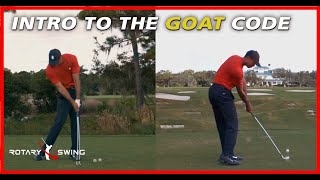
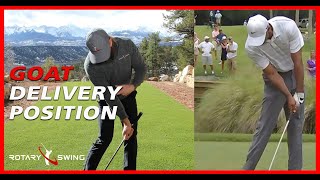
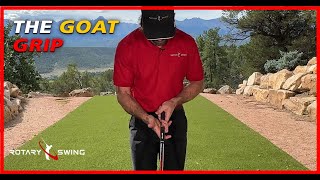

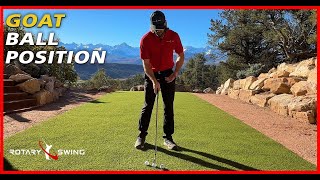
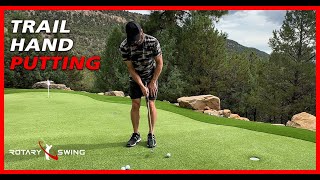

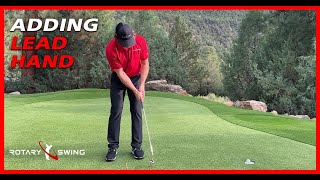

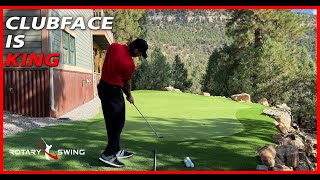
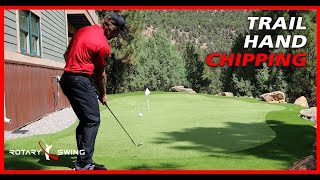
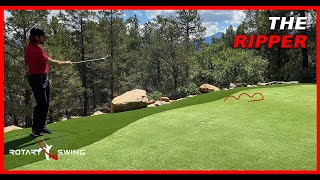
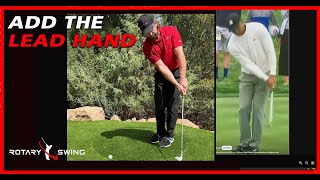

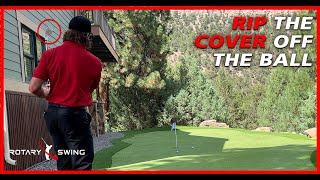

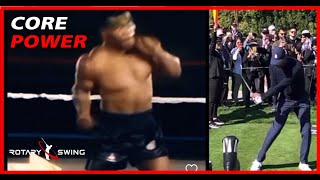
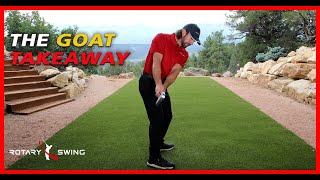


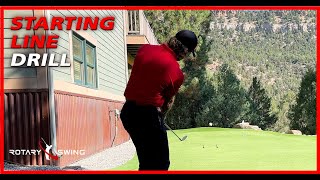

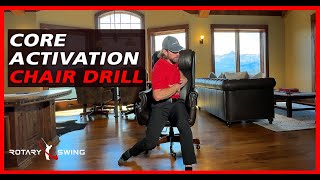
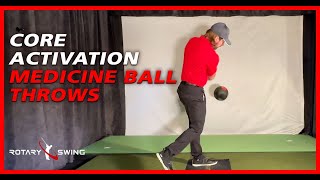
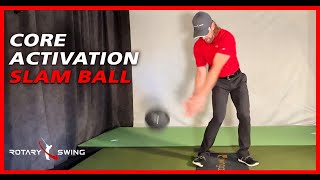
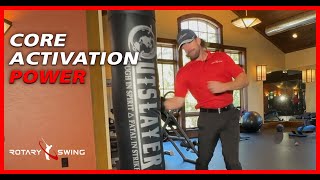

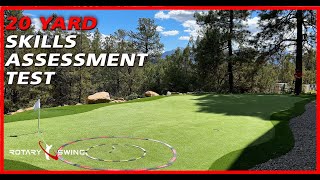

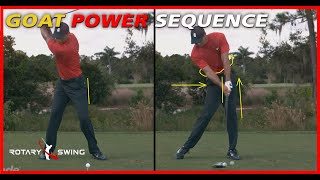
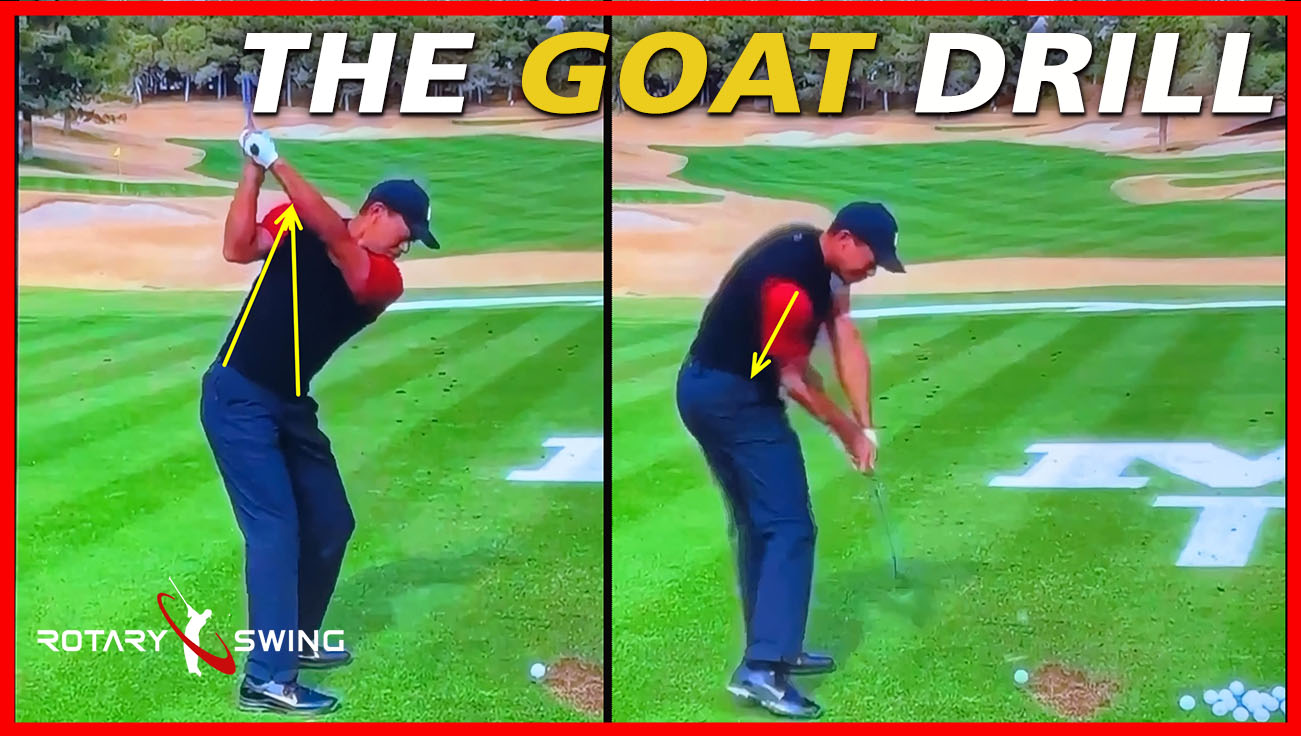
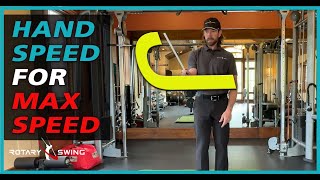
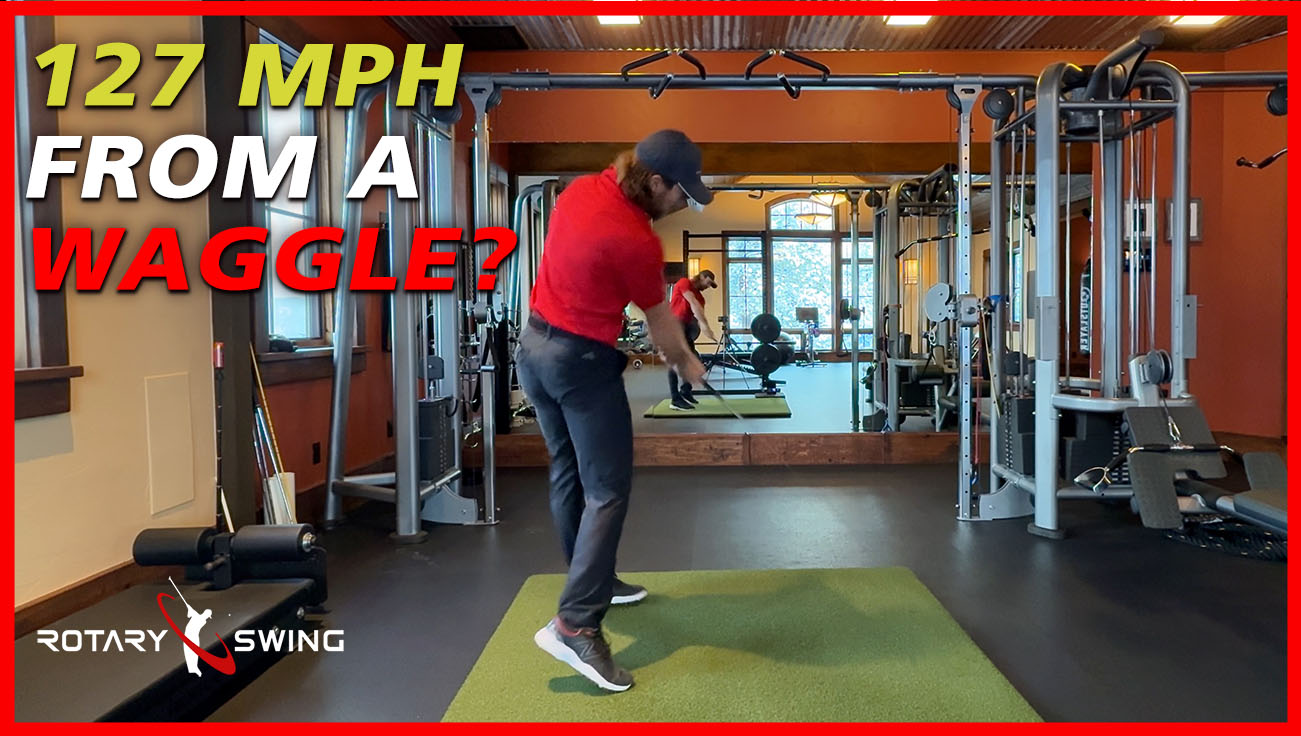
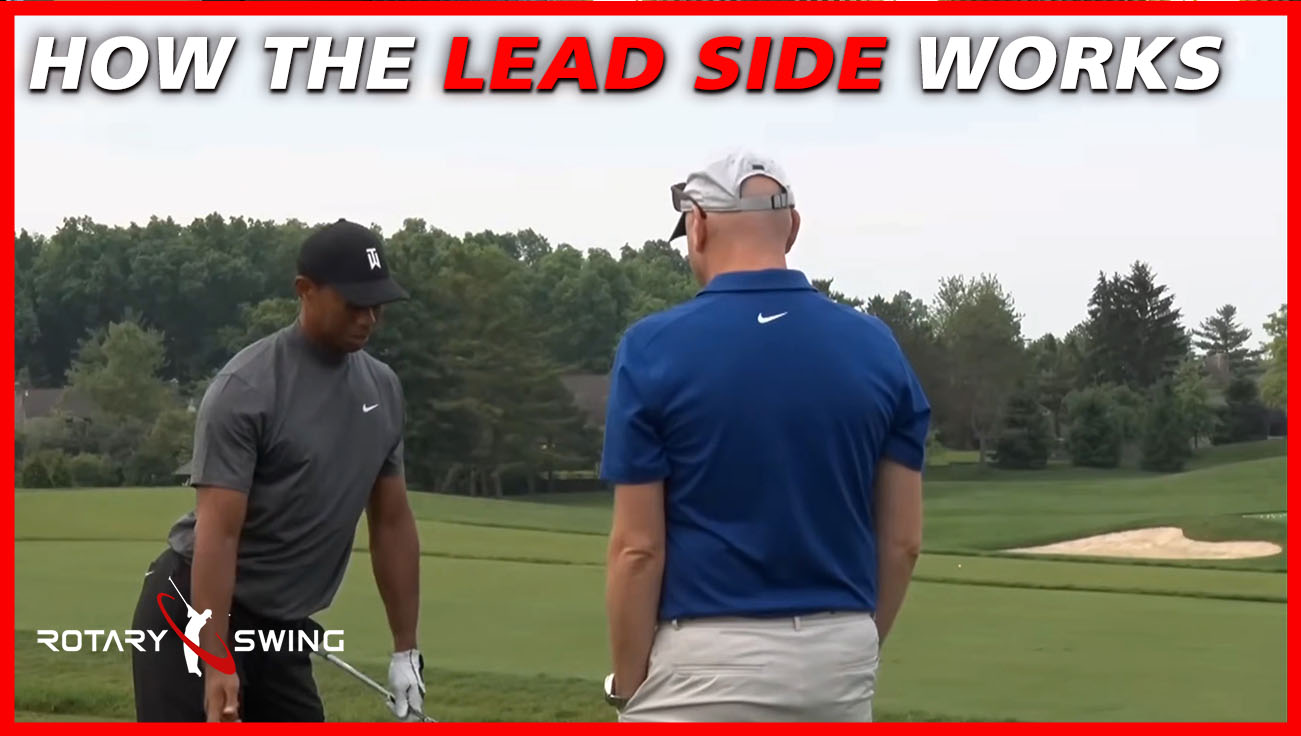

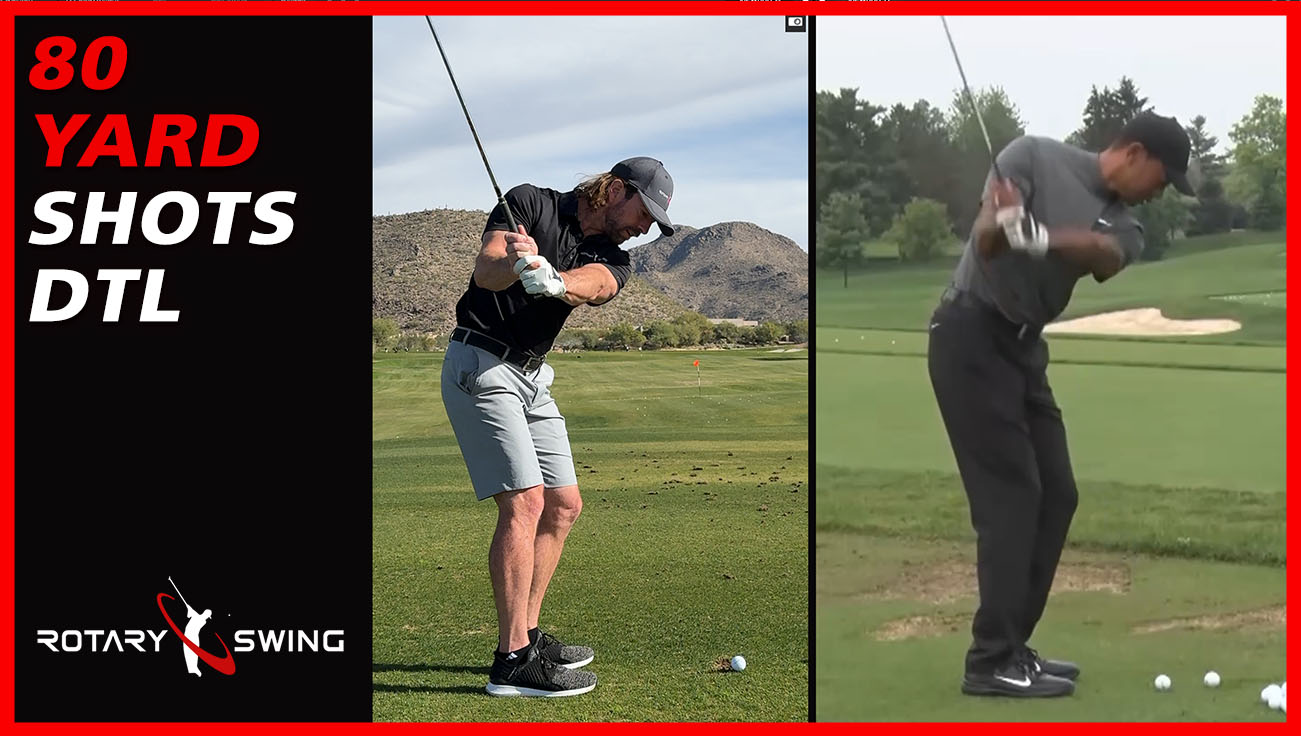
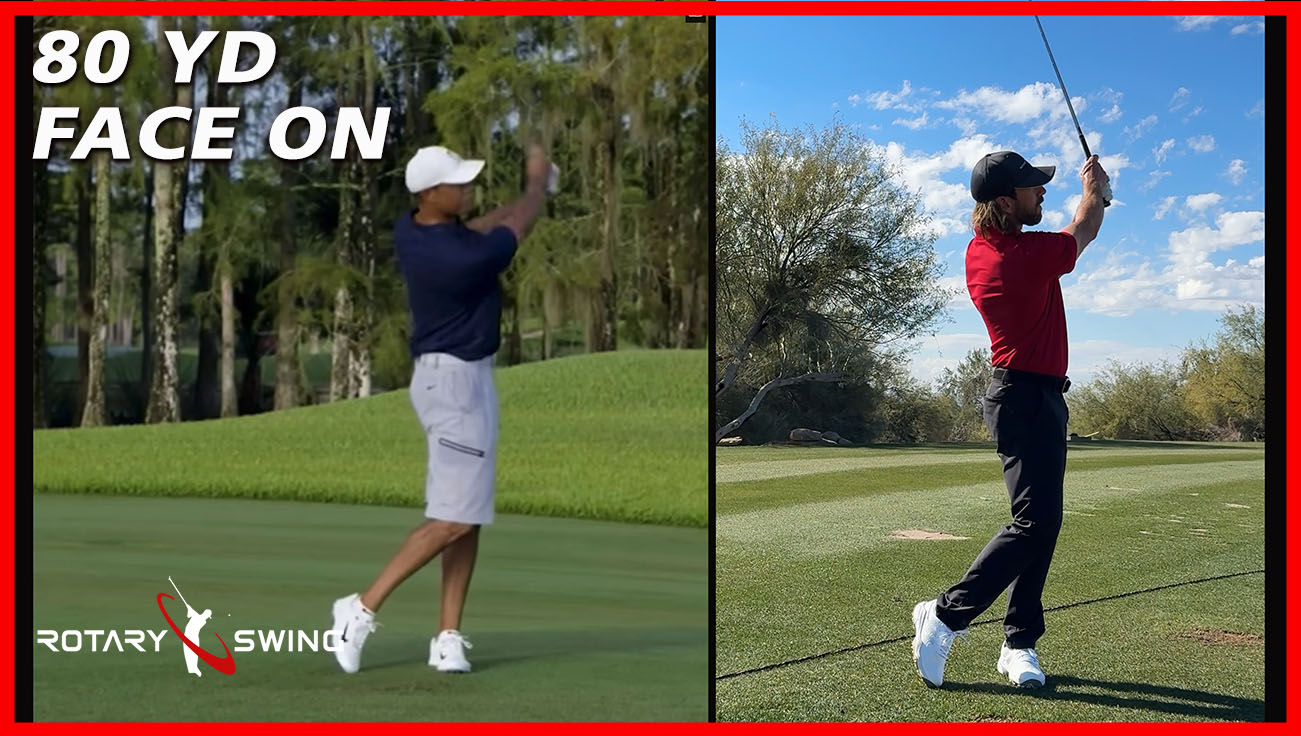
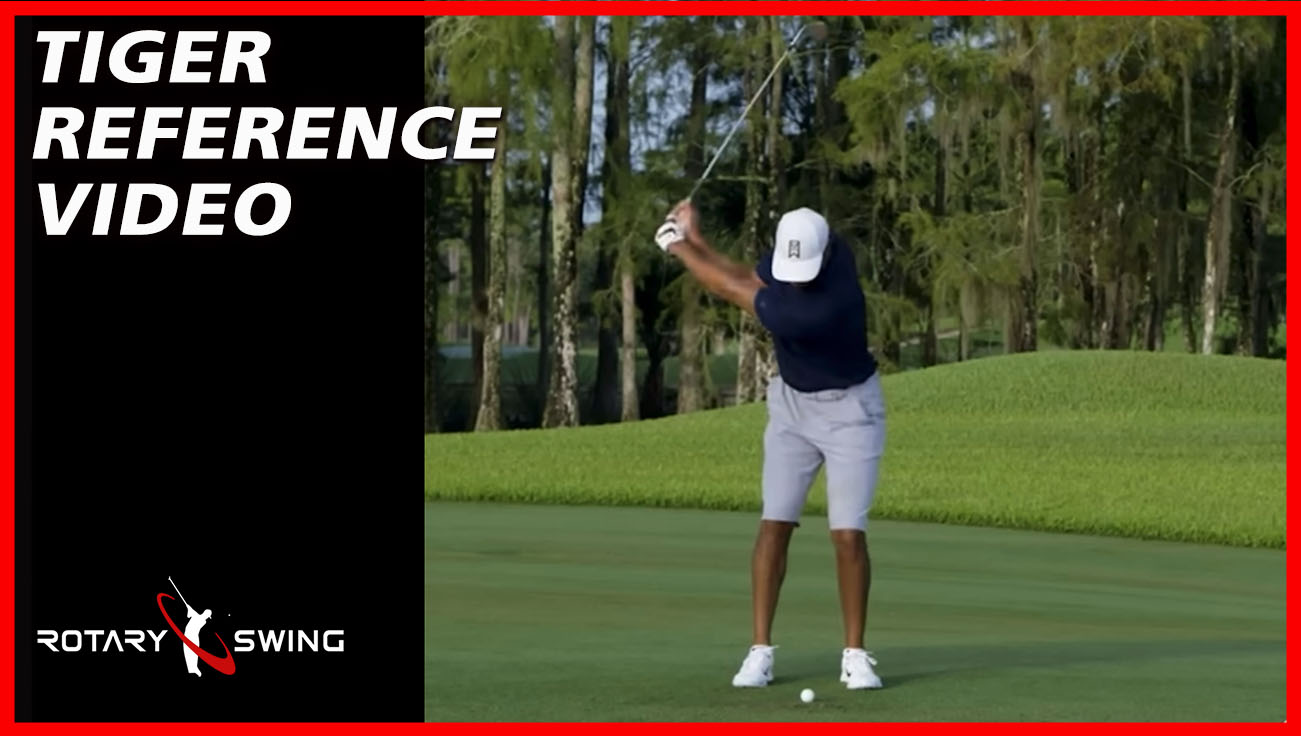
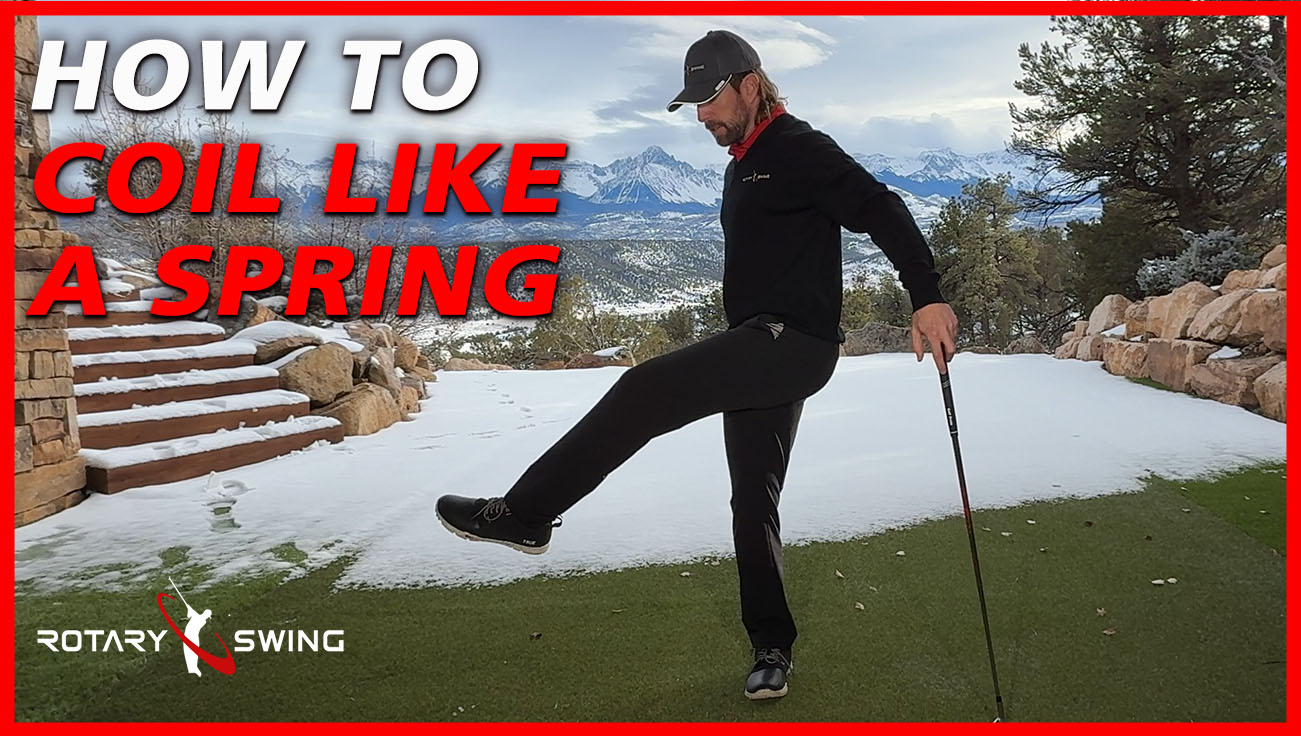
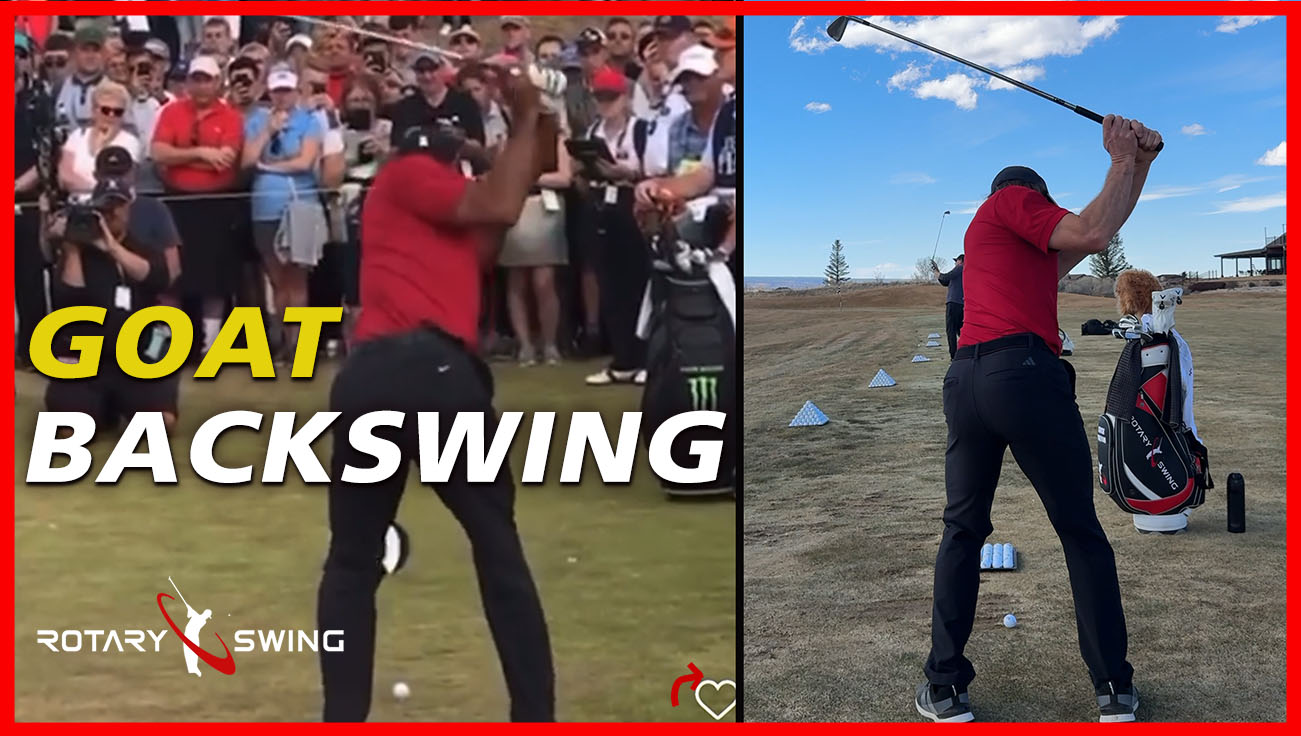
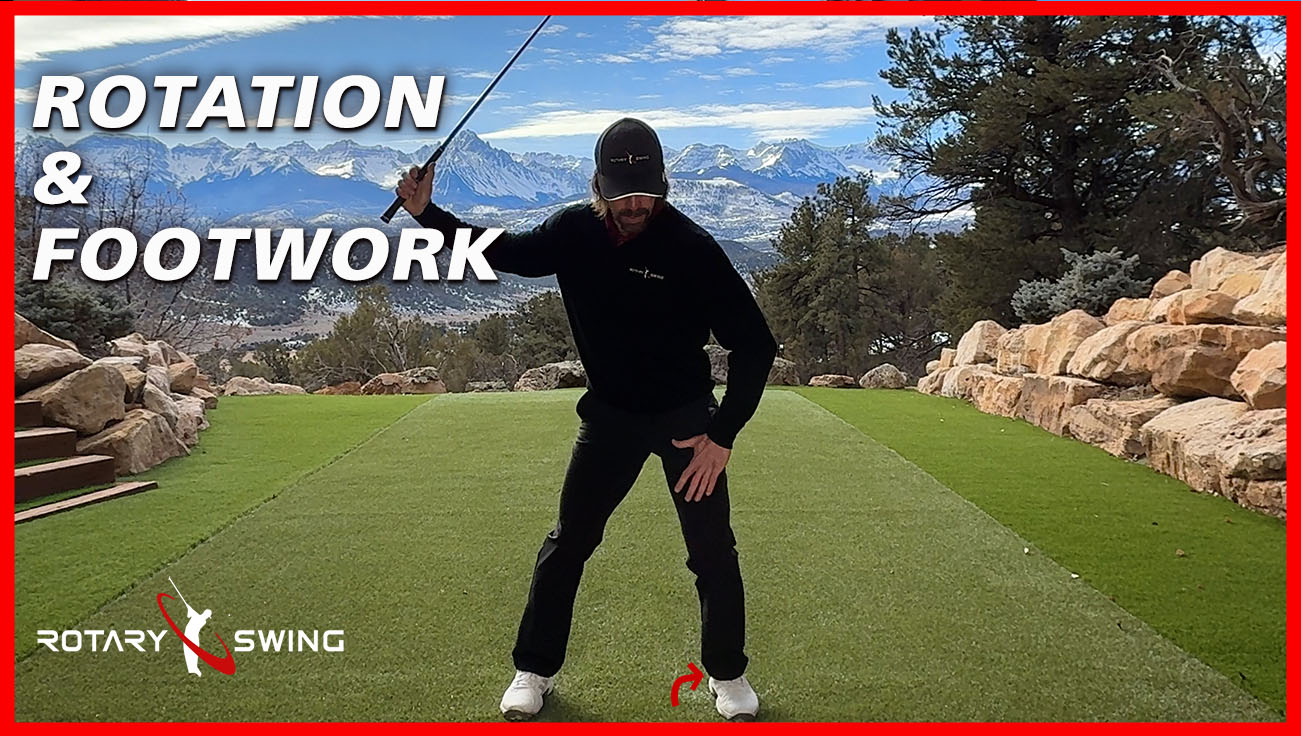
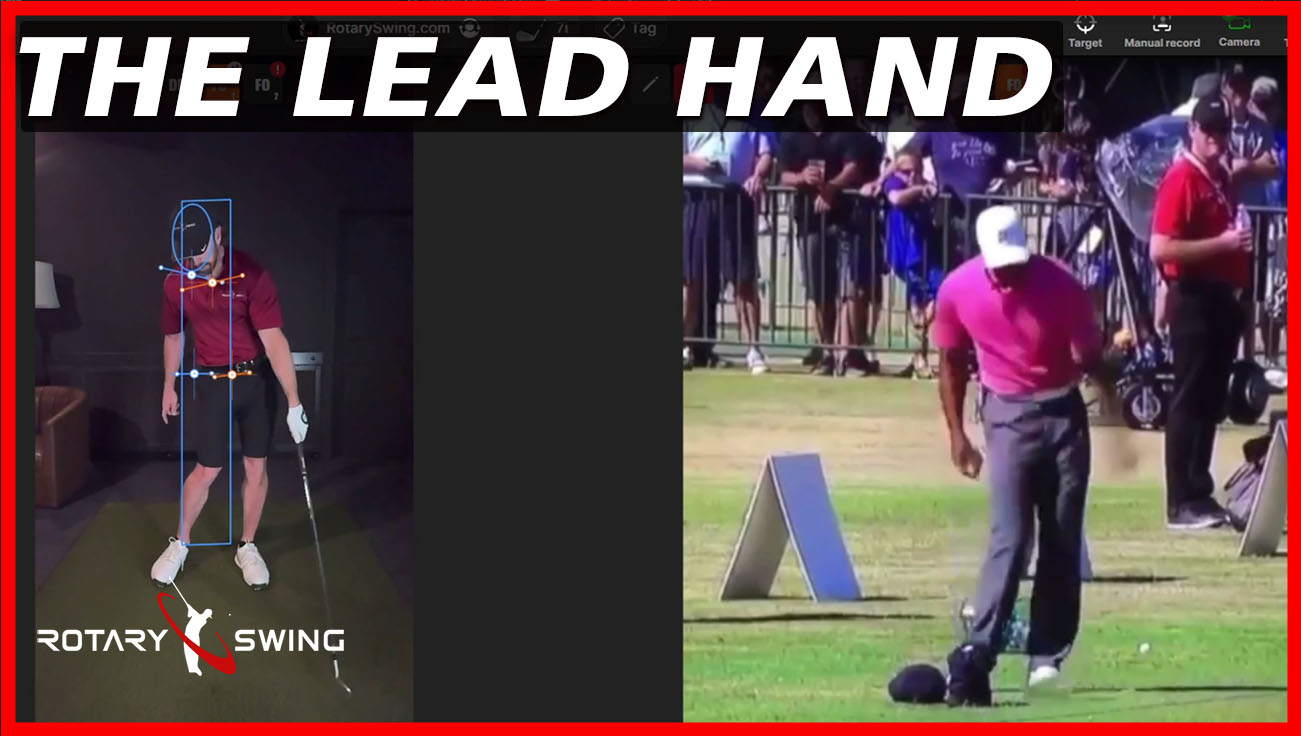
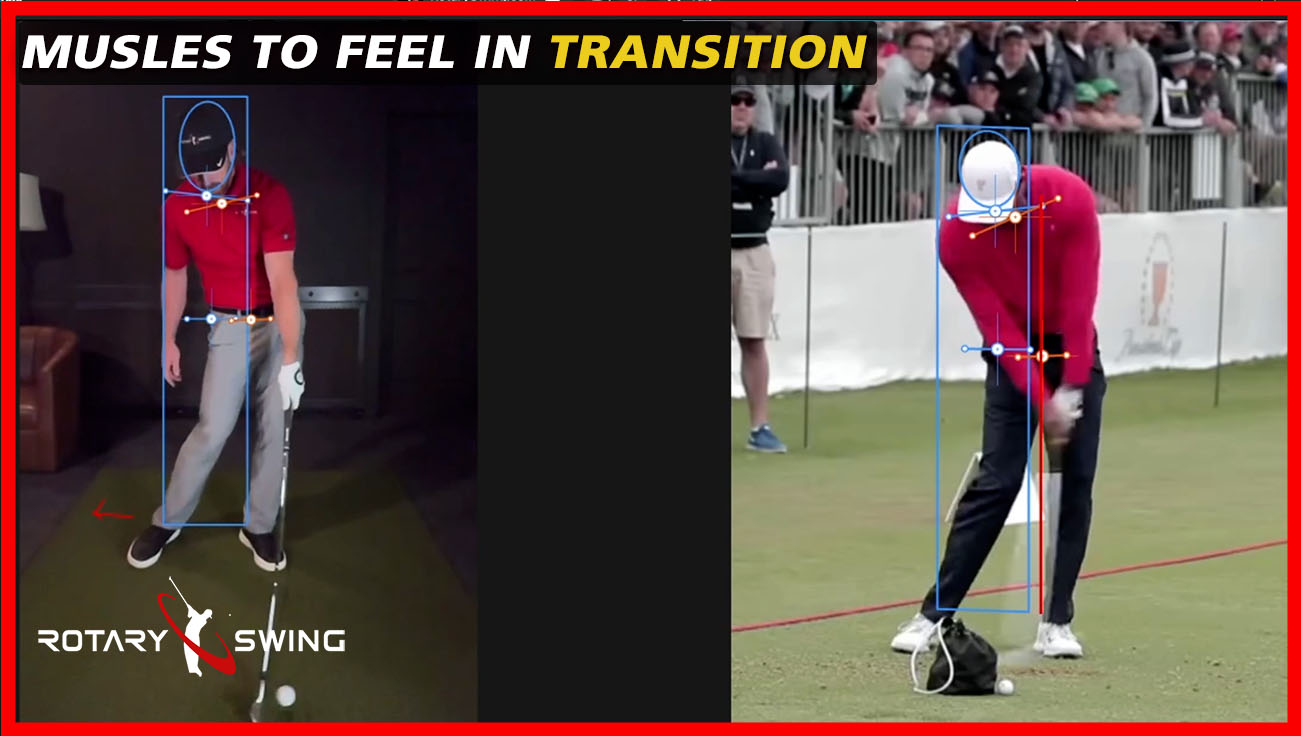
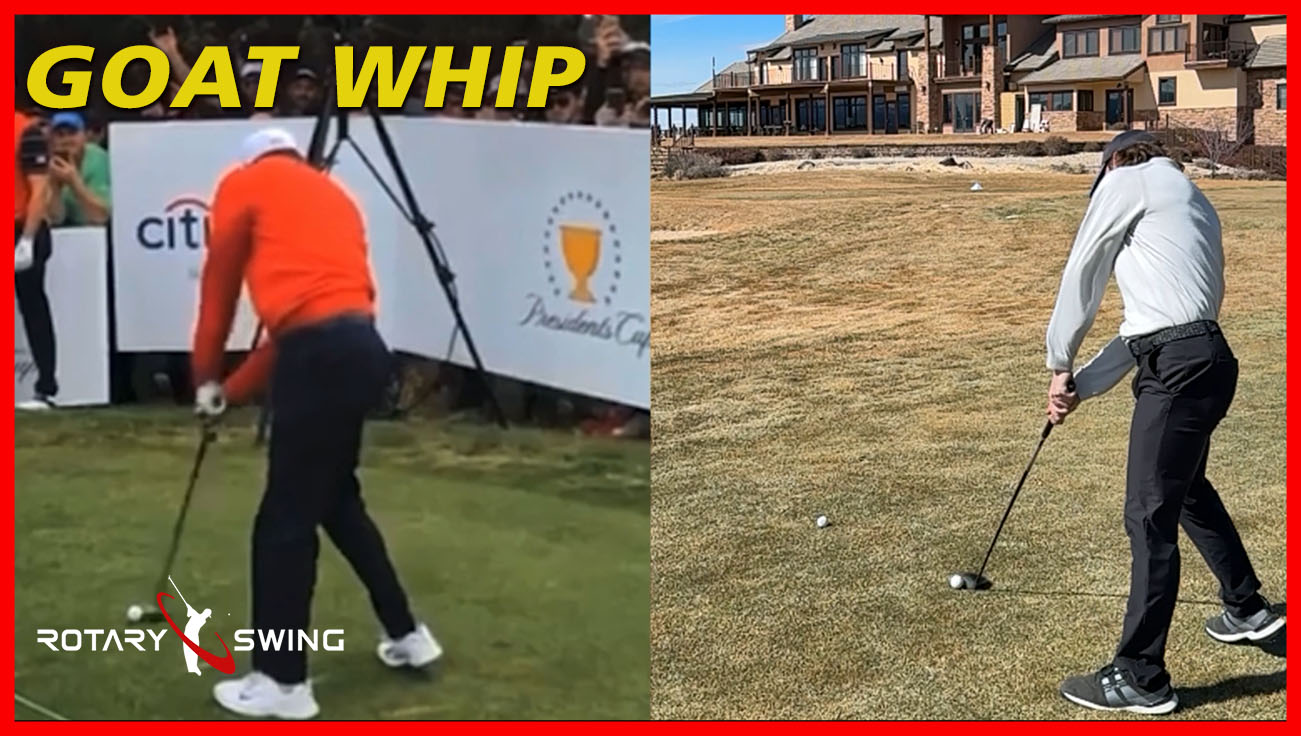
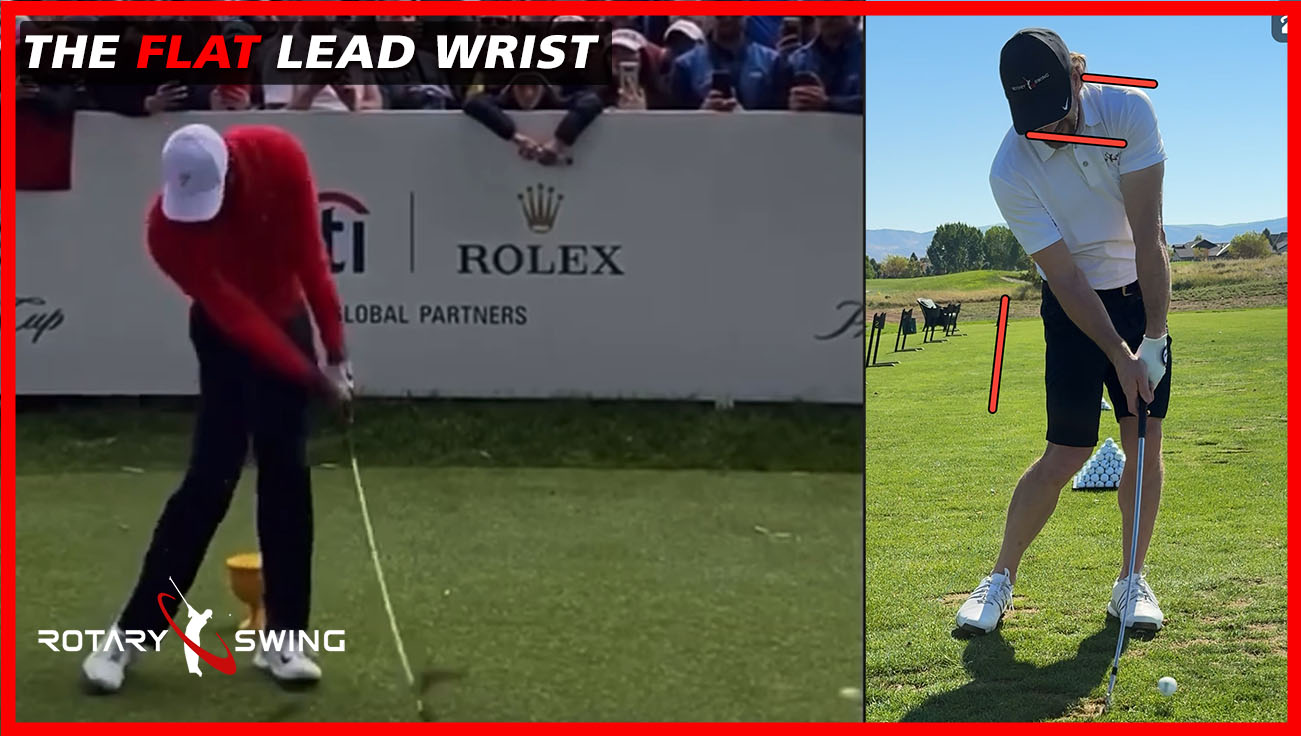
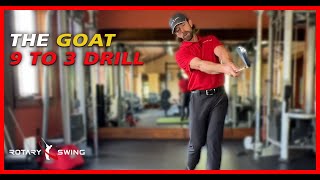
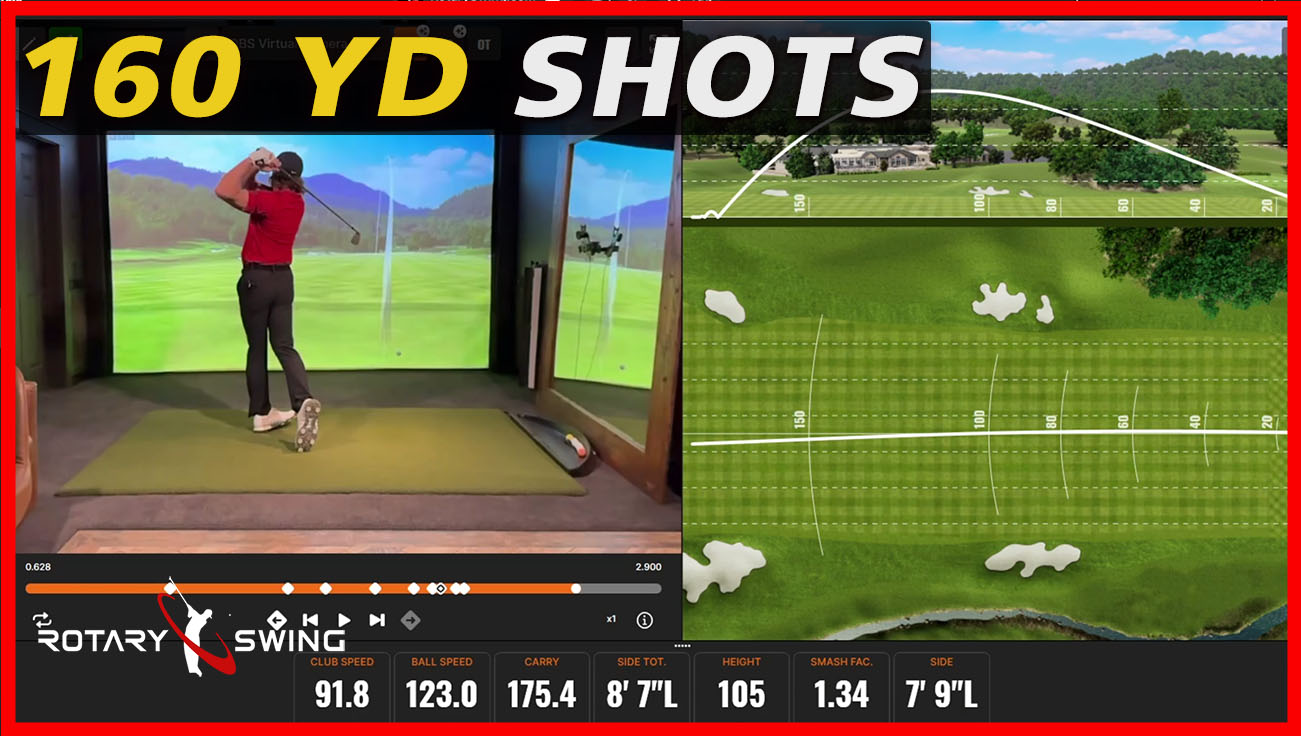
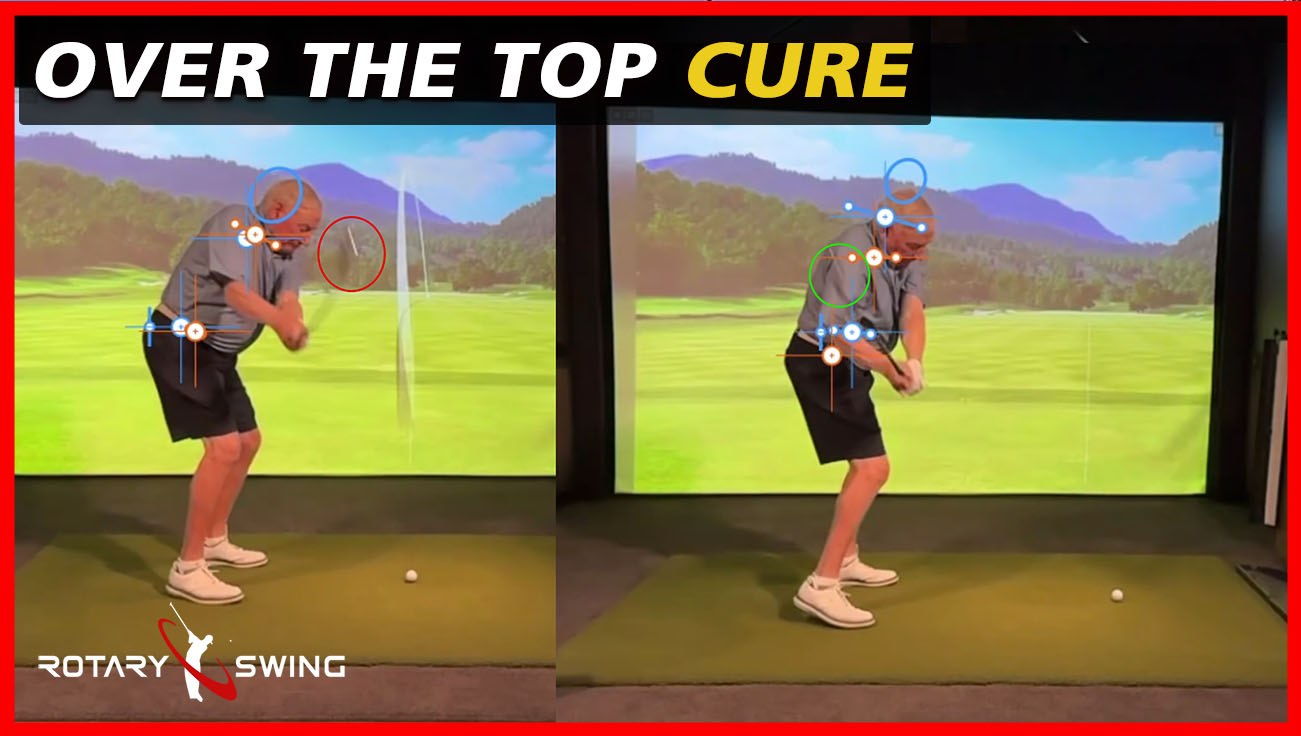

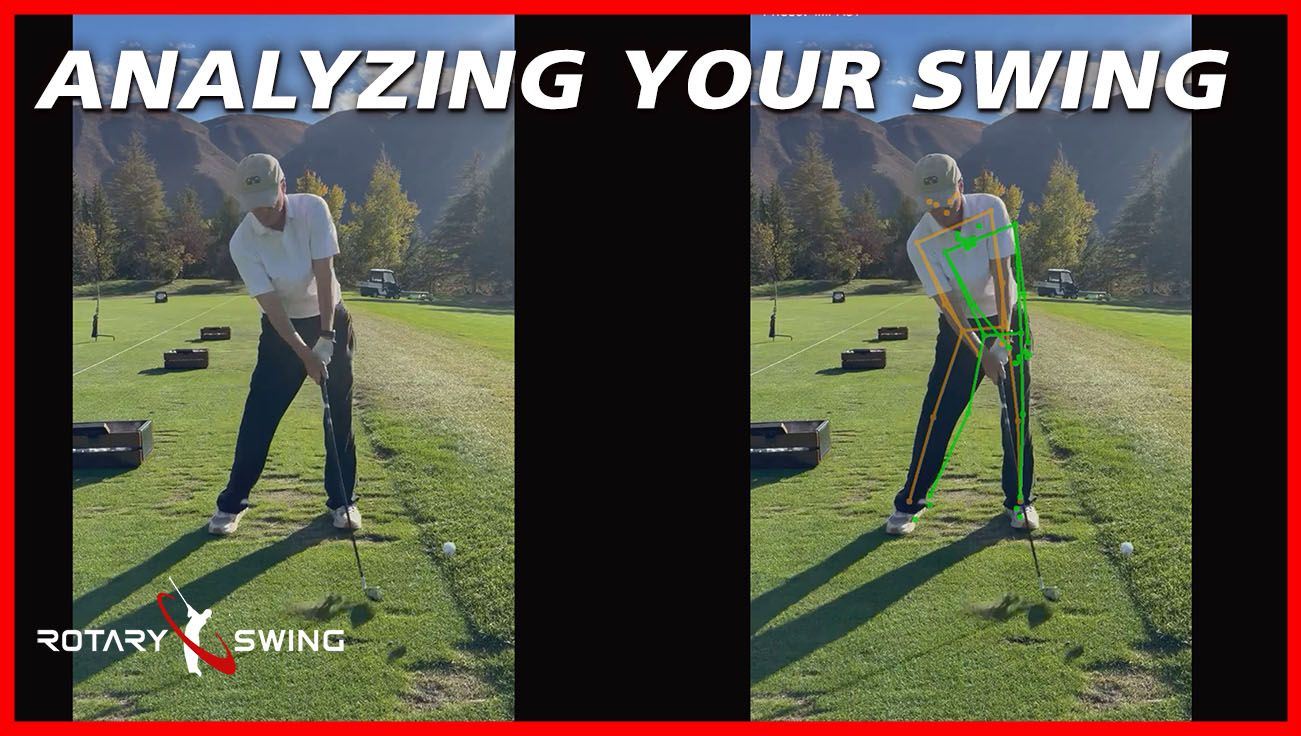
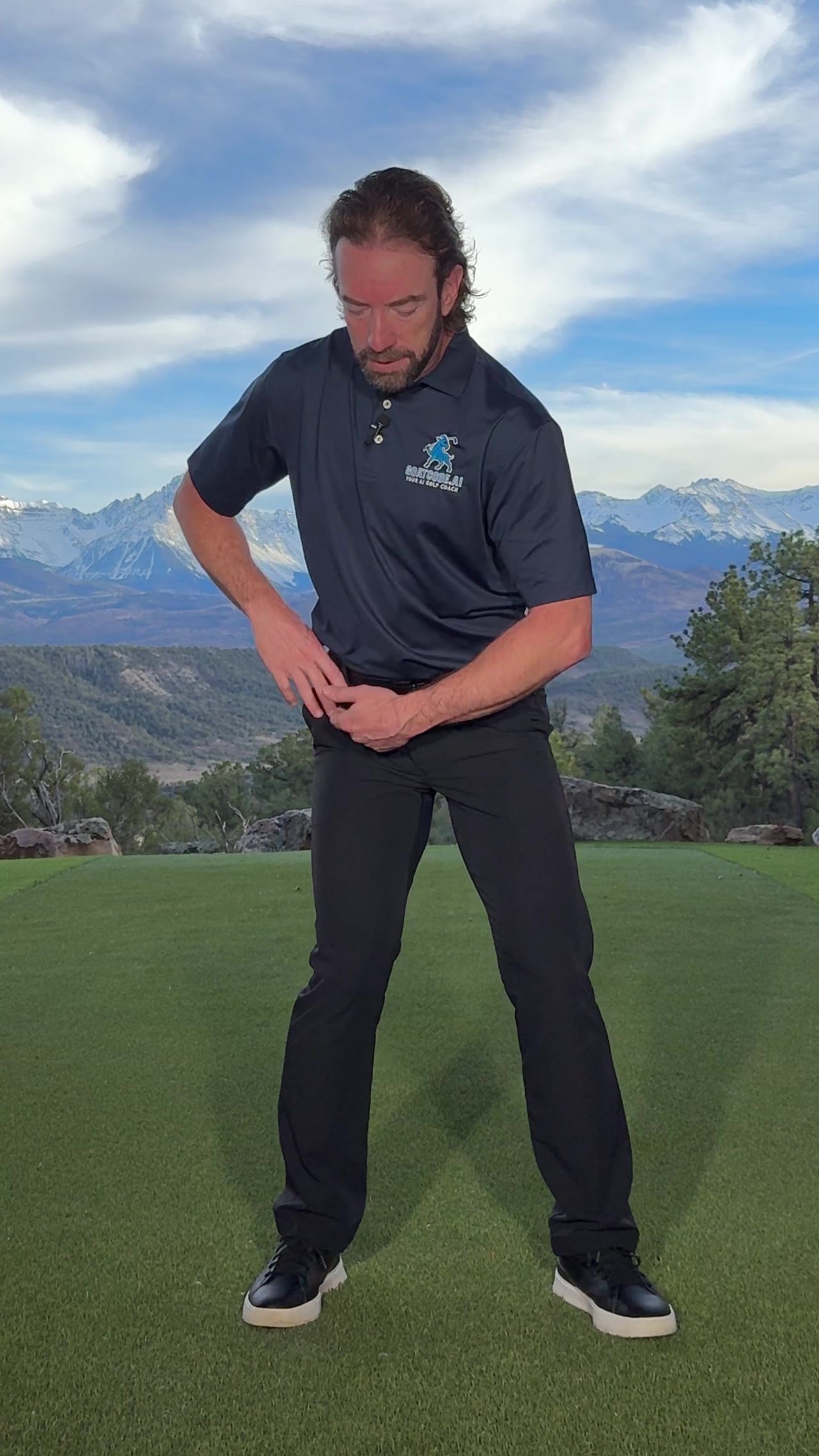

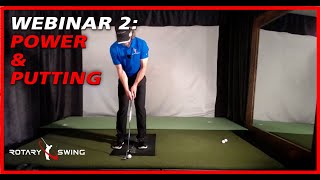
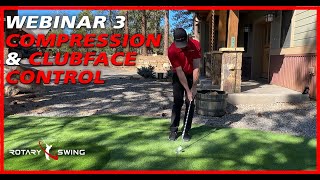
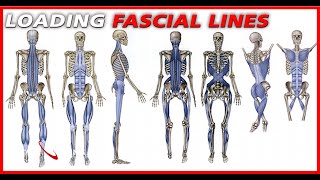
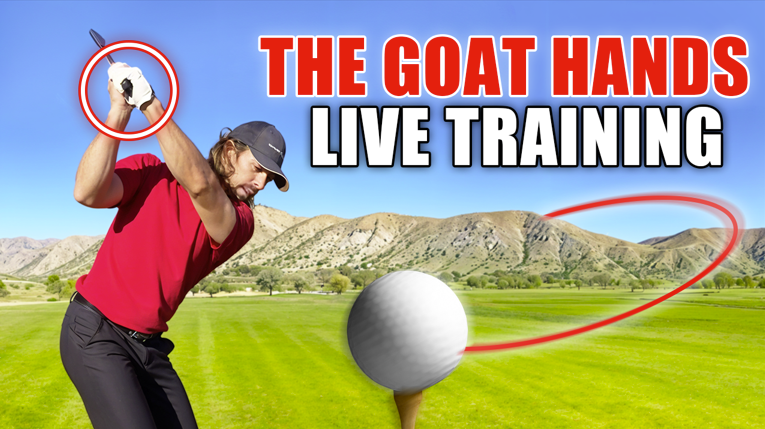
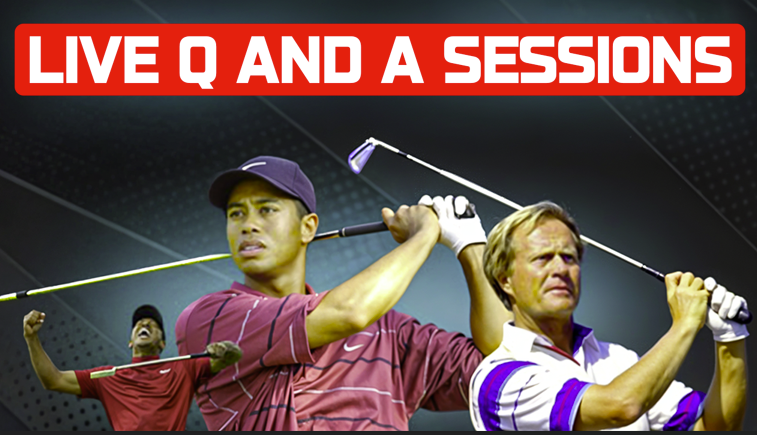
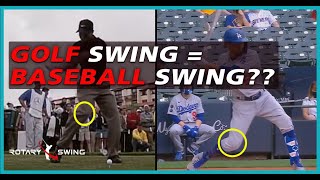
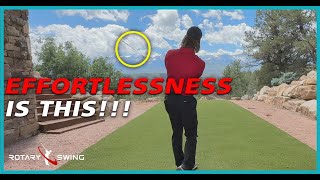


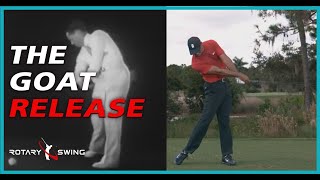

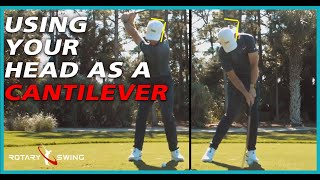
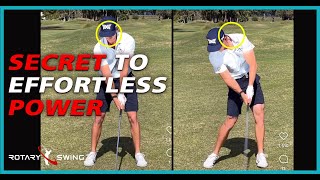

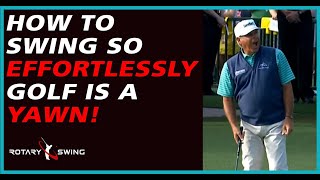
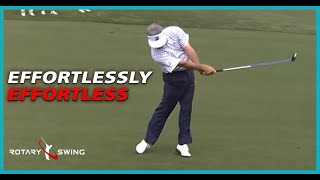
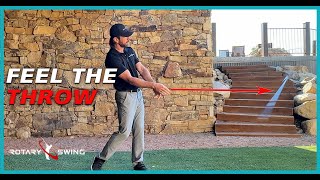


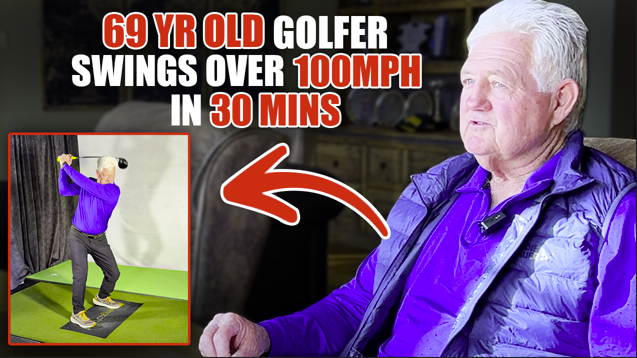


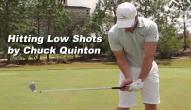
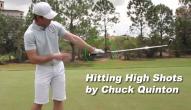
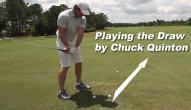
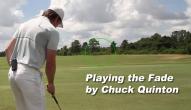
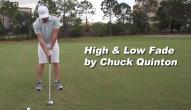
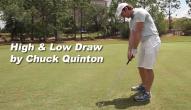
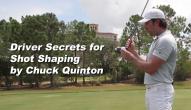

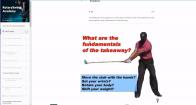
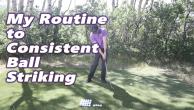
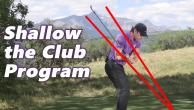
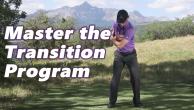
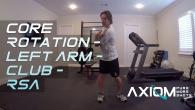

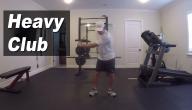
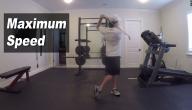
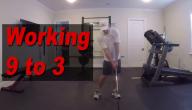
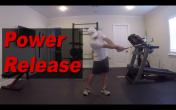
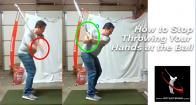

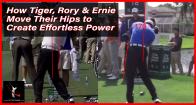
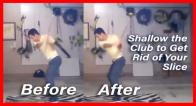

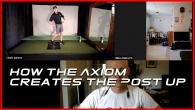
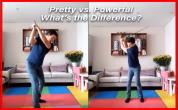
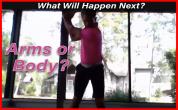
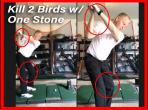
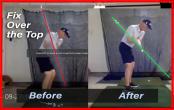
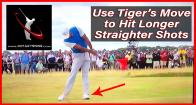
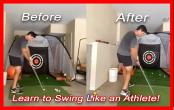

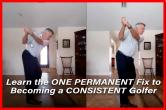
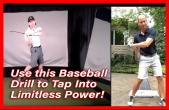
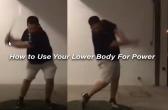
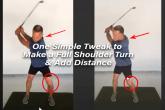
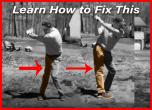
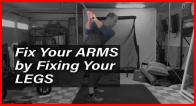
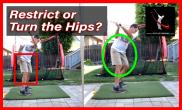
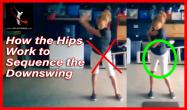
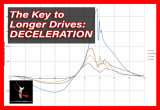
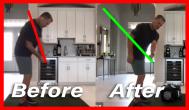
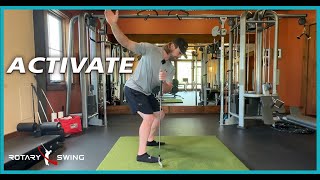
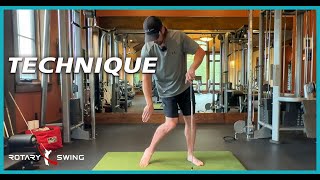
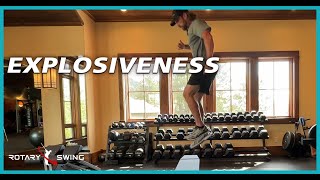
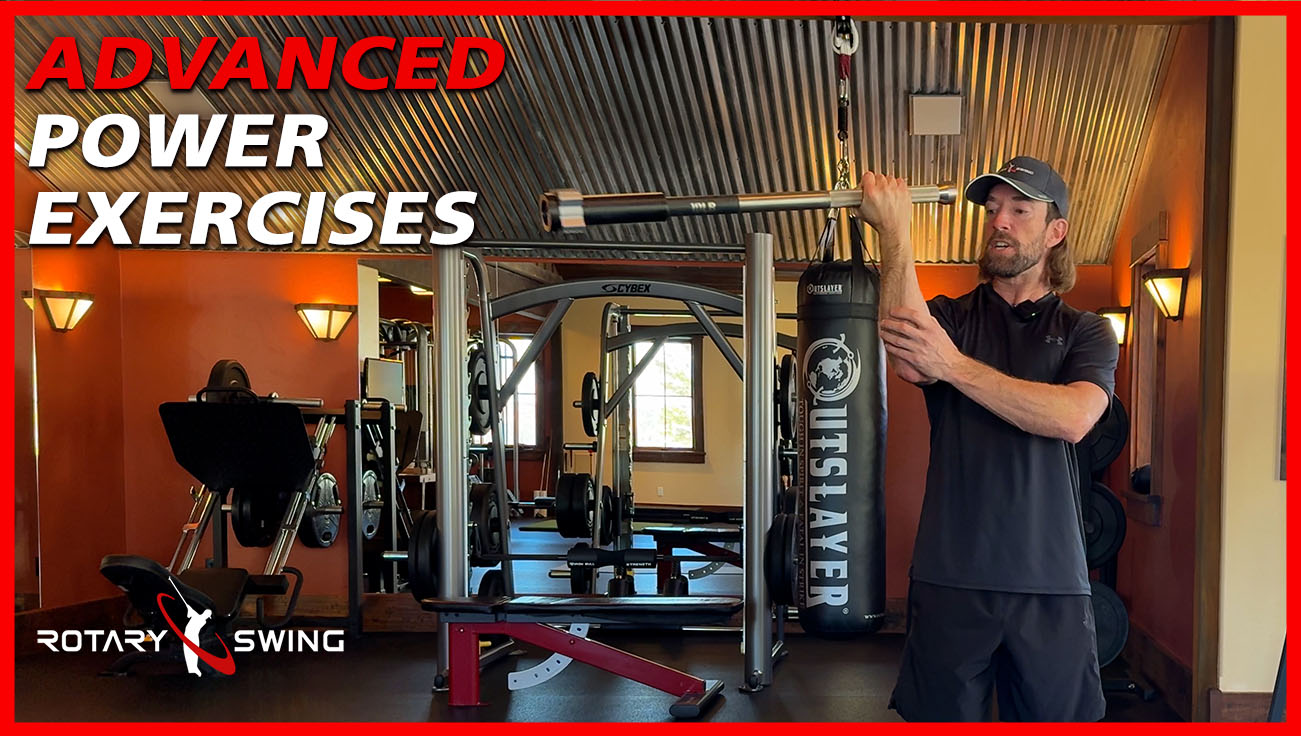
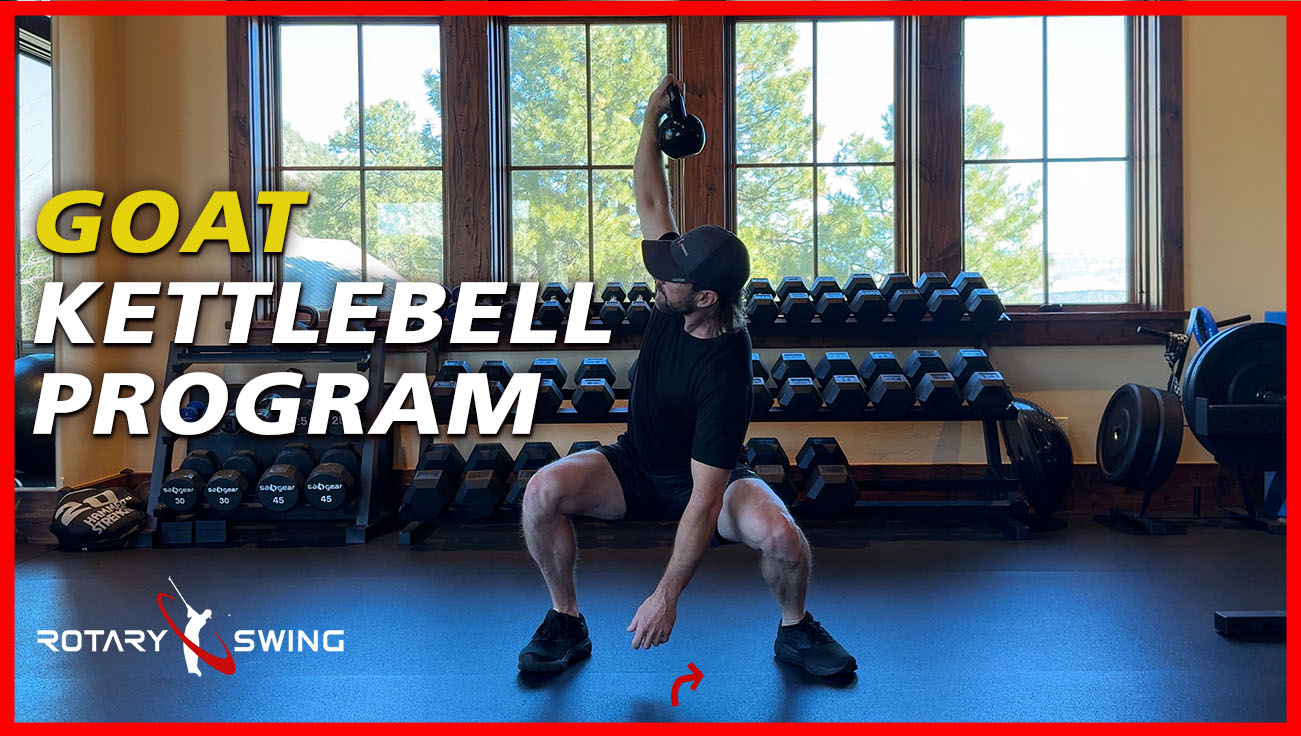

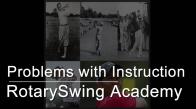


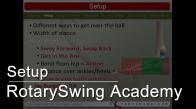

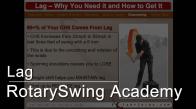

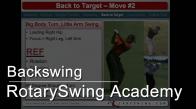

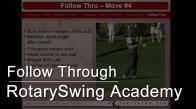

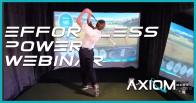
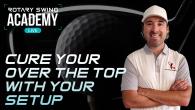

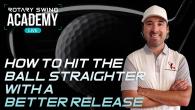
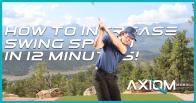
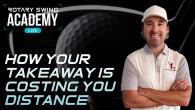
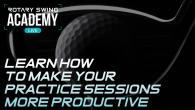
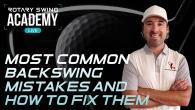
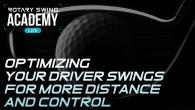
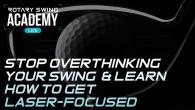

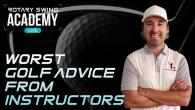
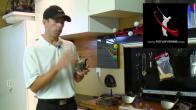
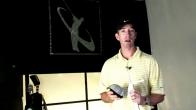
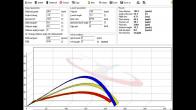
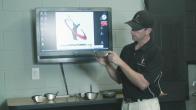

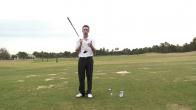
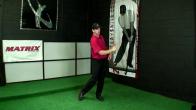
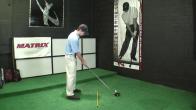
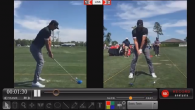

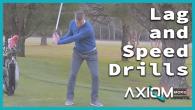
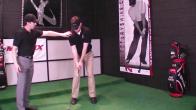
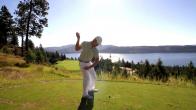
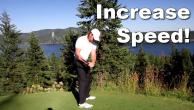
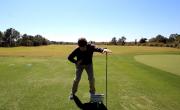
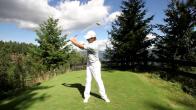
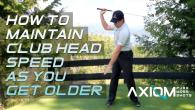

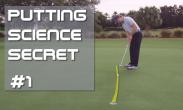
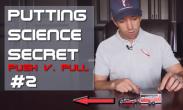
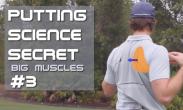
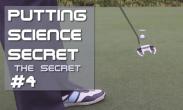

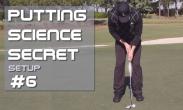
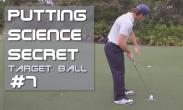
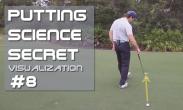

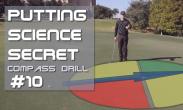
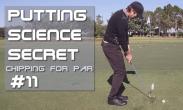
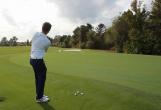
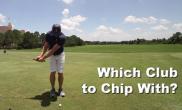
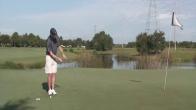
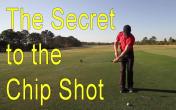
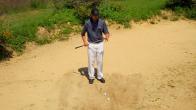
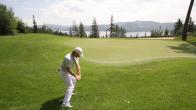
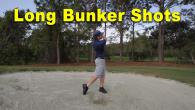
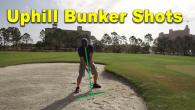
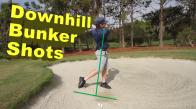
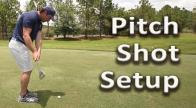

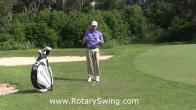
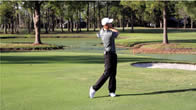
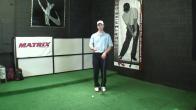
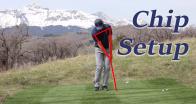
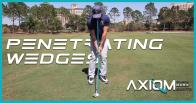
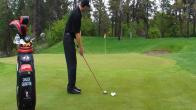
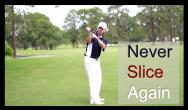
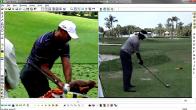
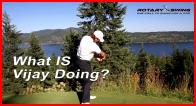
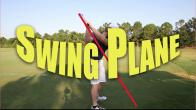
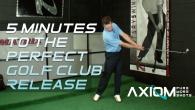
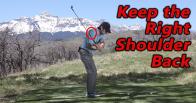

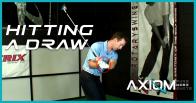



Kevin
Craig (Certified RST Instructor)
Asle
Craig (Certified RST Instructor)